How to teach research skills to high school students: 12 tips
by mindroar | Oct 10, 2021 | blog | 0 comments
Teachers often find it difficult to decide how to teach research skills to high school students. You probably feel students should know how to do research by high school. But often students’ skills are lacking in one or more areas.
Today we’re not going to give you research skills lesson plans for high school. But we will give you 12 tips for how to teach research skills to high school students. Bonus, the tips will make it quick, fun, and easy.
One of my favorite ways of teaching research skills to high school students is to use the Crash Course Navigating Digital Information series.
The videos are free and short (between ten and fifteen minutes each). They cover information such as evaluating the trustworthiness of sources, using Wikipedia, lateral reading, and understanding how the source medium can affect the message.
Another thing I like to integrate into my lessons are the Crash Course Study Skills videos . Again, they’re free and short. Plus they are an easy way to refresh study skills such as:
- note-taking
- writing papers
- editing papers
- getting organized
- and studying for tests and exams.
If you’re ready to get started, we’ll give you links to great resources that you can integrate into your lessons. Because often students just need a refresh on a particular skill and not a whole semester-long course.

1. Why learn digital research skills?
Tip number one of how to teach research skills to high school students. Address the dreaded ‘why?’ questions upfront. You know the questions: Why do we have to do this? When am I ever going to use this?
If your students understand why they need good research skills and know that you will show them specific strategies to improve their skills, they are far more likely to buy into learning about how to research effectively.
An easy way to answer this question is that students spend so much time online. Some people spend almost an entire day online each week.
It’s amazing to have such easy access to information, unlike the pre-internet days. But there is far more misinformation and disinformation online.
A webpage, Facebook post, Instagram post, YouTube video, infographic, meme, gif, TikTok video (etc etc) can be created by just about anyone with a phone. And it’s easy to create them in a way that looks professional and legitimate.
This can make it hard for people to know what is real, true, evidence-based information and what is not.
The first Crash Course Navigating Digital Information video gets into the nitty-gritty of why we should learn strategies for evaluating the information we find (online or otherwise!).
An easy way to answer the ‘why’ questions your high schoolers will ask, the video is an excellent resource.
2. Teaching your students to fact check
Tip number two for teaching research skills to high school students is to teach your students concrete strategies for how to check facts.
It’s surprising how many students will hand in work with blatant factual errors. Errors they could have avoided had they done a quick fact check.
An easy way to broach this research skill in high school is to watch the second video in the Crash Course Navigating Digital Information series. It explains what fact-checking is, why people should do it, and how to make it a habit.
You can explain to your students that they’ll write better papers if they learn to fact-check. But they’ll also make better decisions if they make fact-checking a habit.
The video looks at why people are more likely to believe mis- or disinformation online. And it shows students a series of questions they can use to identify mis- or disinformation.
The video also discusses why it’s important to find a few generally reliable sources of information and to use those as a way to fact-check other online sources.
3. Teaching your students how and why to read laterally
This ties in with tip number 2 – teach concrete research strategies – but it is more specific. Fact-checking tends to be checking what claim sources are making, who is making the claim, and corroborating the claim with other sources.
But lateral reading is another concrete research skills strategy that you can teach to students. This skill helps students spot inaccurate information quickly and avoid wasting valuable research time.
One of the best (and easiest!) research skills for high school students to learn is how to read laterally. And teachers can demonstrate it so, so easily. As John Green says in the third Crash Course Navigating Digital Information video , just open another tab!
The video also shows students good websites to use to check hoaxes and controversial information.
Importantly, John Green also explains that students need a “toolbox” of strategies to assess sources of information. There’s not one magic source of information that is 100% accurate.
4. Teaching your students how to evaluate trustworthiness
Deciding who to trust online can be difficult even for those of us with lots of experience navigating online. And it is made even more difficult by how easy it now is to create a professional-looking websites.
This video shows students what to look for when evaluating trustworthiness. It also explains how to take bias, opinion, and political orientations into account when using information sources.
The video explains how reputable information sources gather reliable information (versus disreputable sources). And shows how reputable information sources navigate the situation when they discover their information is incorrect or misleading.
Students can apply the research skills from this video to news sources, novel excerpts, scholarly articles, and primary sources. Teaching students to look for bias, political orientation, and opinions within all sources is one of the most valuable research skills for high school students.
5. Teaching your students to use Wikipedia
Now, I know that Wikipedia can be the bane of your teacherly existence when you are reading essays. I know it can make you want to gouge your eyes out with a spoon when you read the same recycled article in thirty different essays. But, teaching students how to use Wikipedia as a jumping-off point is a useful skill.
Wikipedia is no less accurate than other online encyclopedia-type sources. And it often includes hyperlinks and references that students can check or use for further research. Plus it has handy-dandy warnings for inaccurate and contentious information.
Part of how to teach research skills to high school students is teaching them how to use general reference material such as encyclopedias for broad information. And then following up with how to use more detailed information such as primary and secondary sources.
The Crash Course video about Wikipedia is an easy way to show students how to use it more effectively.
6. Teaching your students to evaluate evidence
Another important research skill to teach high school students is how to evaluate evidence. This skill is important, both in their own and in others’ work.
An easy way to do this is the Crash Course video about evaluating evidence video. The short video shows students how to evaluate evidence using authorship, the evidence provided, and the relevance of the evidence.
It also gives examples of ways that evidence can be used to mislead. For example, it shows that simply providing evidence doesn’t mean that the evidence is quality evidence that supports the claim being made.
The video shows examples of evidence that is related to a topic, but irrelevant to the claim. Having an example of irrelevant evidence helps students understand the difference between related but irrelevant evidence and evidence that is relevant to the claim.
Finally, the video gives students questions that they can use to evaluate evidence.
7. Teaching your students to evaluate photos and videos
While the previous video about evidence looked at how to evaluate evidence in general, this video looks specifically at video and photographic evidence.
The video looks at how videos and photos can be manipulated to provide evidence for a claim. It suggests that seeking out the context for photos and videos is especially important as a video or photo is easy to misinterpret. This is especially the case if a misleading caption or surrounding information is provided.
The video also gives tools that students can use to discover hoaxes or fakes. Similarly, it encourages people to look for the origin of the photo or video to find the creator. And to then use that with contextual information to decide whether the photo or video is reliable evidence for a claim.
8. Teaching your students to evaluate data and infographics
Other sources of evidence that students (and adults!) often misinterpret or are misled by are data and infographics. Often people take the mere existence of statistics or other data as evidence for a claim instead of investigating further.
Again the Crash Course video suggests seeking out the source and context for data and infographics. It suggests that students often see data as neutral and irrefutable, but that data is inherently biased as it is created by humans.
The video gives a real-world example of how data can be manipulated as a source of evidence by showing how two different news sources represented global warming data.
9. Teaching your students how search engines work and why to use click restraint
Another video from the Crash Course Navigating Digital Information series is the video about how search engines work and click restraint . This video shows how search engines decide which information to list at the top of the search results. It also shows how search engines decide what information is relevant and of good quality.
The video gives search tips for using search engines to encourage the algorithms to return more reliable and accurate results.
This video is important when you are want to know how to teach research skills to high school students. This is because many students don’t understand why the first few results on a search are not necessarily the best information available.
10. Teach your students how to evaluate social media sources
One of the important research skills high school students need is to evaluate social media posts. Many people now get news and information from social media sites that have little to no oversight or editorial control. So, being able to evaluate posts for accuracy is key.
This video in the Crash Course Navigating Digital Information series also explains that social media sites are free to use because they make money from advertising. The advertising money comes from keeping people on the platform (and looking at the ads).
How do they keep people on the platform? By using algorithms that gather information about how long people spend on or react to different photos, posts and videos. Then, the algorithms will send viewers more content that is similar to the content that they view or interact with.
This prioritizes content that is controversial, shocking, engaging, attractive. It also reinforces the social norms of the audience members using the platform.
By teaching students how to combat the way that social media algorithms work, you can show them how to gather more reliable and relevant information in their everyday lives. Further, you help students work out if social media posts are relevant to (reliable for) their academic work.
11. Teaching your students how to cite sources
Another important research skill high school students need is how to accurately cite sources. A quick Google search turned up a few good free ideas:
- This lesson plan from the Brooklyn Library for grades 4-11. It aligns with the common core objectives and provides worksheets for students to learn to use MLA citation.
- This blog post about middle-school teacher Jody Passanini’s experiences trying to teach students in English and History how to cite sources both in-text and at the end with a reference list.
- This scavenger hunt lesson by 8th grade teacher on ReadWriteThink. It has a free printout asking students to prove assertions (which could be either student- or teacher-generated) with quotes from the text and a page number. It also has an example answer using the Catching Fire (Hunger Games) novel.
- The Chicago Manual of Style has this quick author-date citation guide .
- This page by Purdue Online Writing Lab has an MLA citation guide , as well as links to other citation guides such as APA.
If you are wanting other activities, a quick search of TPT showed these to be popular and well-received by other teachers:
- Laura Randazzo’s 9th edition MLA in-text and end-of-text citation activities
- Tracee Orman 8th edition MLA cheet sheet
- The Daring English Teacher’s MLA 8th edition citation powerpoint
12. Teaching your students to take notes
Another important skill to look at when considering how to teach research skills to high school students is whether they know how to take effective notes.
The Crash Course Study Skills note-taking video is great for this. It outlines three note-taking styles – the outline method, the Cornell method, and the mind map method. And it shows students how to use each of the methods.
This can help you start a conversation with your students about which styles of note-taking are most effective for different tasks.
For example, mind maps are great for seeing connections between ideas and brain dumps. The outline method is great for topics that are hierarchical. And the Cornell method is great for topics with lots of specific vocabulary.
Having these types of metacognitive discussions with your students helps them identify study and research strategies. It also helps them to learn which strategies are most effective in different situations.
Teaching research skills to high school students . . .
Doesn’t have to be
- time-consuming
The fantastic Crash Course Navigating Digital Information videos are a great way to get started if you are wondering how to teach research skills to high school students.
If you decide to use the videos in your class, you can buy individual worksheets if you have specific skills in mind. Or you can buy the full bundle if you think you’ll end up watching all of the videos.
Got any great tips for teaching research skills to high school students?
Head over to our Facebook or Instagram pages and let us know!
Top of page
New Guide to Help Middle and High School Students Conduct Research with Library Resources
January 12, 2021
Posted by: Danna Bell
Share this post:
This post is by Kaleena Black of the Library of Congress.
The research process can be fun and rewarding, but it can also present some challenges. For some students, the idea of research might not immediately bring to mind an exciting activity, filled with intrigue, suspense, and joy. Many students, and some adults, too, who are interested in deepening their understanding on a topic and are curious about learning more about an idea or issue, don’t consider themselves “researchers.” And even students who are committed to finding information might not be sure how to begin their research journey.
To help support young people in their personal and academic research endeavors, Library educators and librarians teamed up to develop an online research guide for middle and high school students. A variety of Research Guides have been designed by Library of Congress specialists to help researchers navigate the Library’s analog and digital collections and find resources. Currently, there are hundreds of such guides, covering more than 70 topics that relate to the arts, science, history, social and cultural studies, and more.
With a focus on helping students locate and use digitized resources, this new guide offers tips on finding research inspiration, definitions for primary and secondary sources (with detailed examples for each), strategies for searching primary and secondary sources on the Library’s website and beyond, and suggestions on citing resources appropriately. There is also a feature that allows students to contact a Library of Congress reference specialist if they’re feeling stuck or need extra help in the course of their research.

We encourage you to browse the research guide for yourself and share it with the young researchers in your life.
While research isn’t always easy, it doesn’t have to be intimidating or boring! It can be activated by a student’s own interests and curiosity and be powered by a solid research approach. As Michelle Light, the Library’s Director of Special Collections, has said when talking about the Library of Congress, “You can find the answer to ANYTHING you’re curious about here. What is your question?”
We hope this guide is a helpful addition to the research tools being used by middle and high school students. Let us know what you think!
Comments (4)
I’m interested in learning about thus.
While your side nav makes for very clean research guides, I have had some patrons miss that those are links to additional pages. Researchers get it. But some general library patrons look for something that shouts “I’m a link!”
This is a GREAT resource!
This is a wonderful resource! I shared it with Jane Mills, a middle school music and art teacher in my most recent PD class. She shared it with one of her 7th grade students and I asked him to send us a brief reflection describing his experience using the research guide. This is what he wrote:
“Hi Mrs. Mills,
After extensive reviewing of the guides, I have prepared my remarks. I found the timelines the most useful to understand the context. I would ask a librarian how the formation of the second republic of France affected the revolutionaries of the first. I would recommend it because the guides allow students to more easily understand the source material. I found a congressional bill* regarding the relatives of Haym Saloman and the money he lent the government (during the revolution). I use the Library of Congress in History for project research and additional context, I can use it in English to research authors and poets, and I use it in music to study the history of Jazz. Hope this is enough information for the LoC.
A A ”
*Senate Bill #377 37th Congress July 1862. “Pay Haym Salomon’s son and sole heir, $100,000 for the government indebtedness from the Revolution.”
See All Comments
Add a Comment Cancel reply
Your email address will not be published. Required fields are marked *
CommonLit 360 How to Teach a CommonLit 360 Research Unit

Olivia Franklin
Engage students with interesting research topics, teach them skills to become adept independent researchers, and help them craft their end-of-unit research papers.
CommonLit 360 is a comprehensive ELA curriculum for grades 6-12. Our standards-aligned units are highly engaging and develop core reading and writing skills.
Want to engage students in independent research? Looking to hook students with interesting research questions and informational texts? CommonLit has your back.
CommonLit’s 360 curriculum provides research units for grades 6-10 that will help students complete independent research and craft evidence-based research papers.
Get students excited about their research with Essential Questions designed around timely topics
Each research unit has an Essential Question that students analyze and discuss throughout the unit. The topics for each research unit are designed to be interesting, timely, and relevant to students’ lives.
Students will learn about the status of the world’s oceans, discuss if social media is beneficial or risky, argue if contact sports are worth the risk, research how branding influences purchasing behavior, and learn about the human costs of clothing.
Here are the research units and their Essential Questions:
Grade | Unit Title | Essential Question |
6th | Our Changing Oceans | How are changes in the world’s oceans affecting people and animals? How can we be better stewards of our oceans and waterways? |
7th | Social Media: Risks and Rewards | Is social media more beneficial or more risky for teens? How can we promote the benefits of social media over the drawbacks? |
8th | Contact Sports: Worth the Risk? | Are contact sports worth the risks? How can we provide a clearer picture of the benefits and risks of contact sports to prospective players and their parents? |
9th | The Science of Branding: Why We Buy | How do brands use different tactics to influence our purchasing behavior? How can we make branding tactics and messaging more visible to potential consumers? |
10th | The Fashion Industry: Past to Present | What are the true human costs of the clothes we buy? |
Get students excited about the research topic with introductory slide decks
Each unit comes with introductory slide decks that preview what students will be learning about over the course of the unit. The slide decks spark classroom discussion, hooking students from the very first lesson.
In Our Changing Oceans (6th grade), students discuss what it would be like to be an oceanographer, preview the texts they will be reading about issues facing our oceans, and hear about the key skills they will be learning throughout the unit.
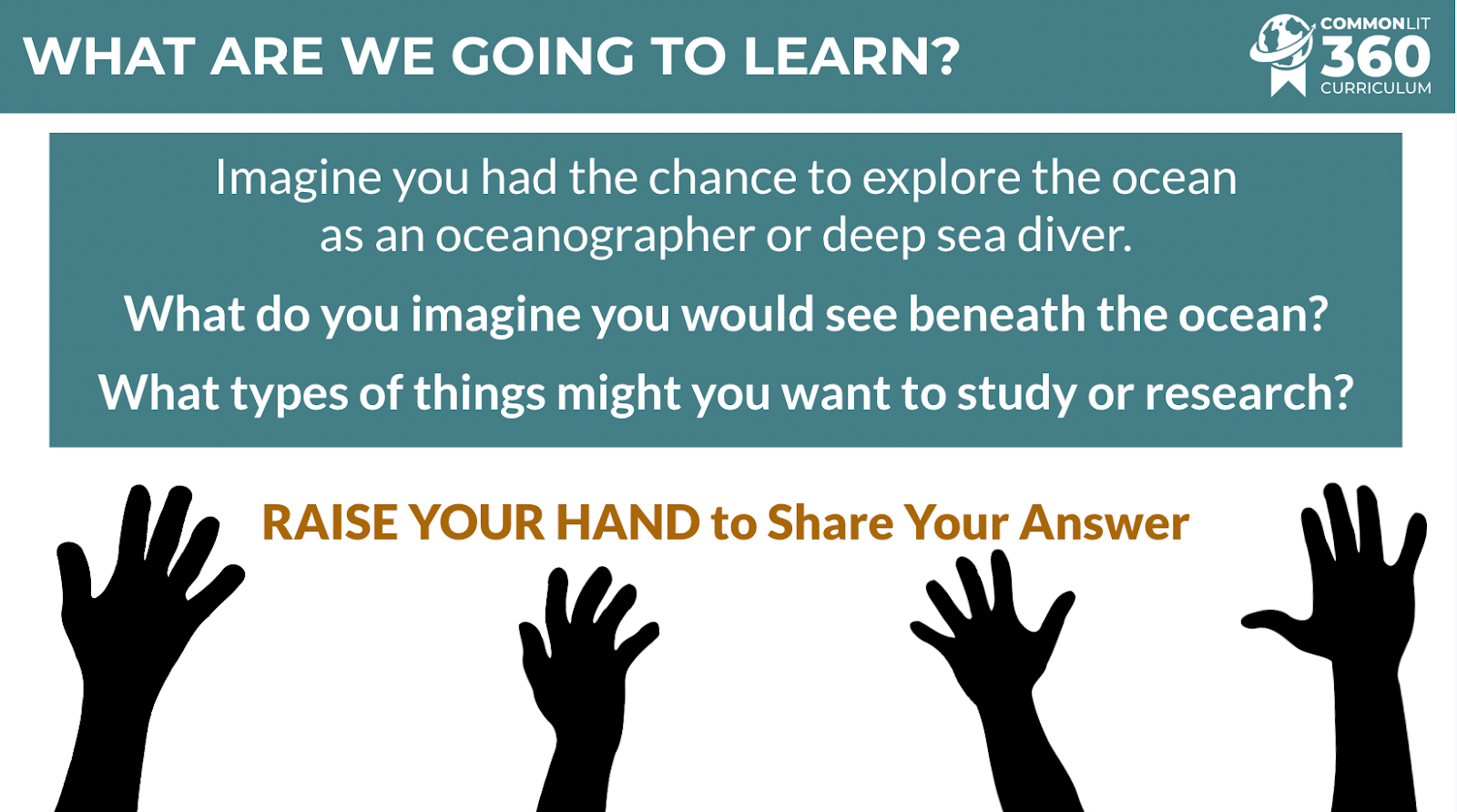
Informational texts anchor each research unit
CommonLit’s research units are centered around informational texts that provide students with key background information and research to eventually support their end-of-unit essay.
Four core texts make up the Essential Reading Lessons for 6th grade. These texts teach students about the need to protect Antarctica and how plastic debris, sea level rise, and overfishing are affecting the world’s oceans. These texts teach students important facts they will need to cite in their end-of-unit research papers.
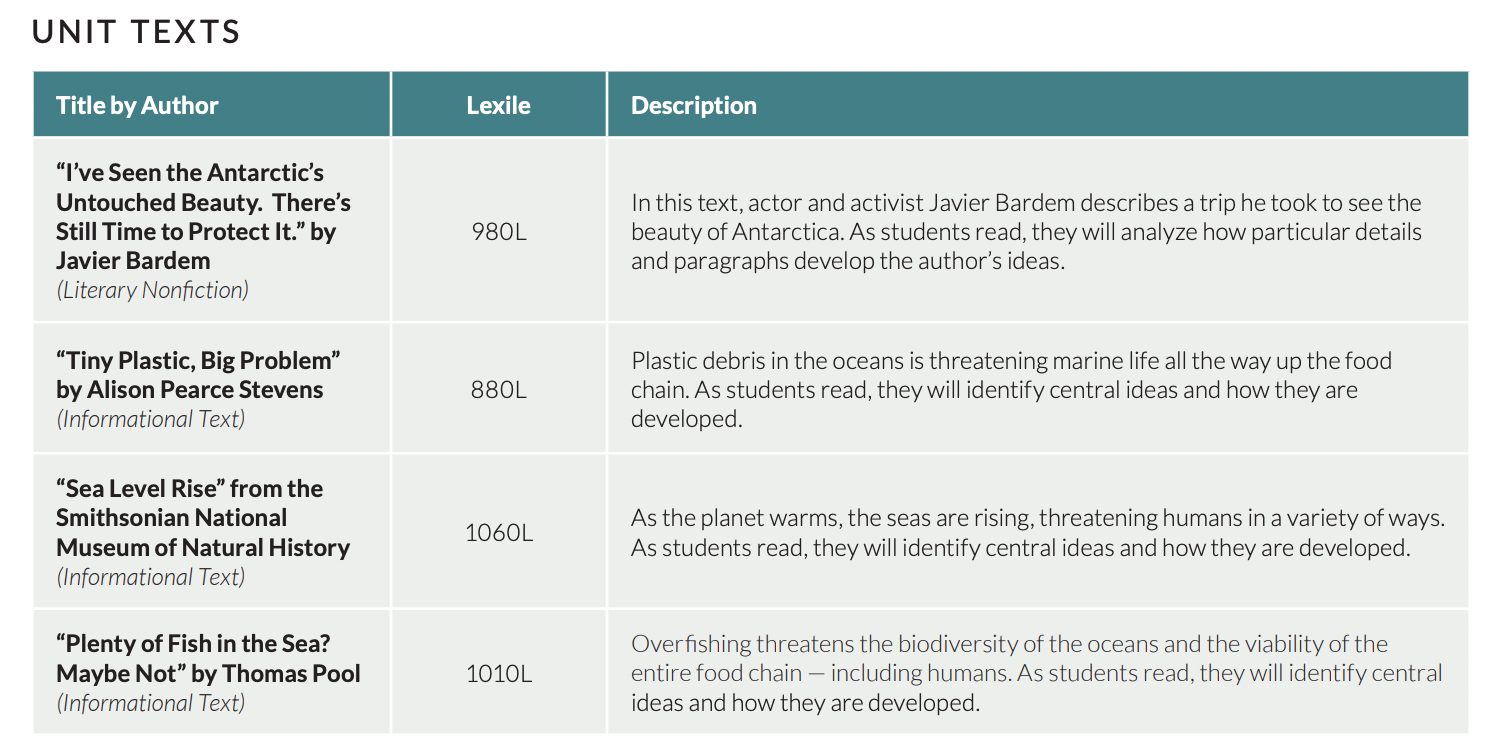
Supplemental texts allow students to dig deeply into independent research
Each unit comes with a large selection of supplemental texts to provide students with more facts and information to use in their research paper.
In middle school, students use the provided supplemental texts to further inform their research. In high school, students learn about finding reliable sources and can use both provided supplemental texts on CommonLit and texts from additional sources in their research.
For example, in Our Changing Oceans, 6th graders choose to research one of three topics related to ocean changes.
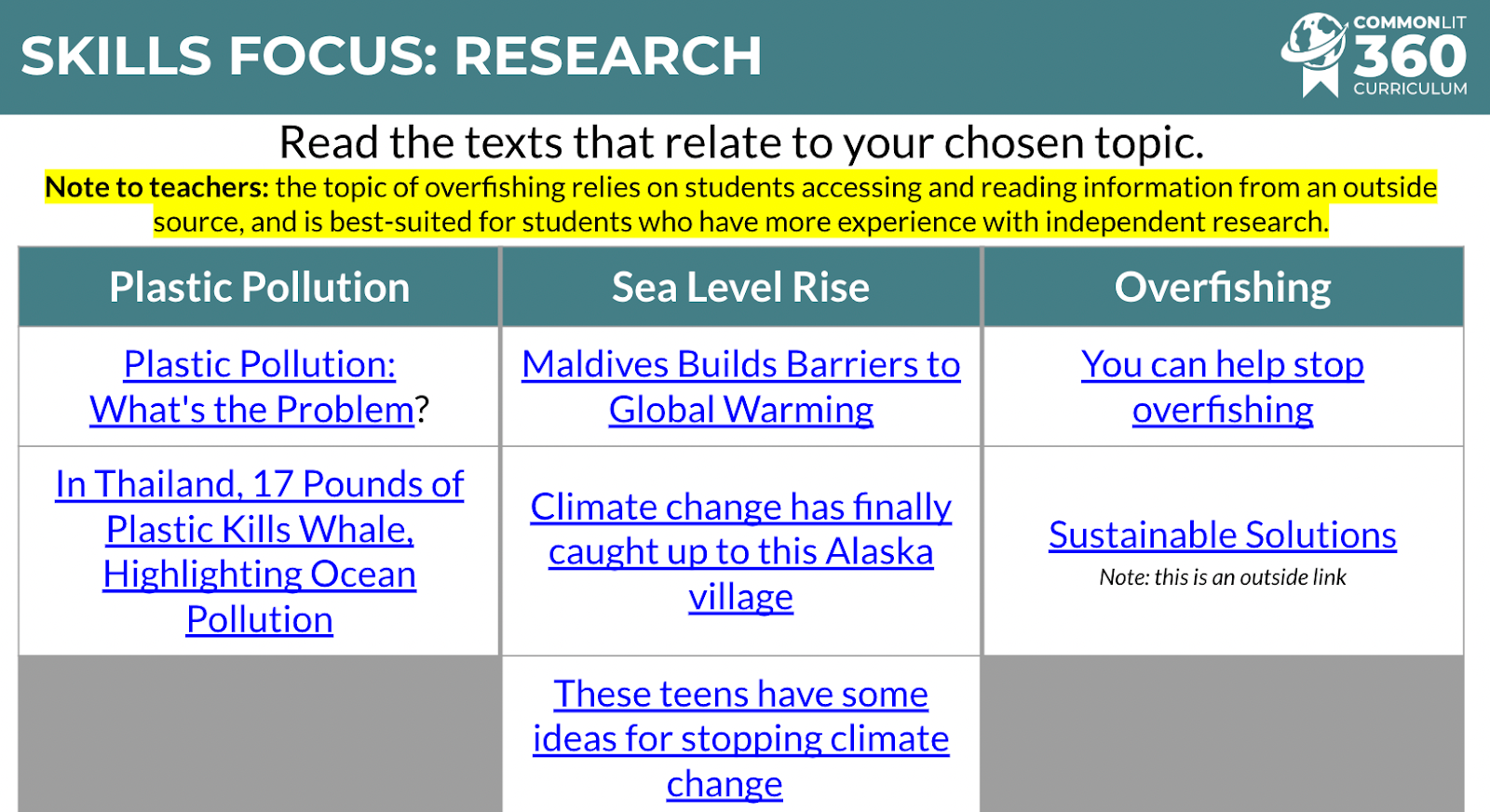
In high school, students are taught about the beginning of the research process, including developing a research question, finding reliable sources, and reading and taking notes. Students in 9th and 10th grade can use the supplemental texts as well as texts found in books or on other online learning platforms.
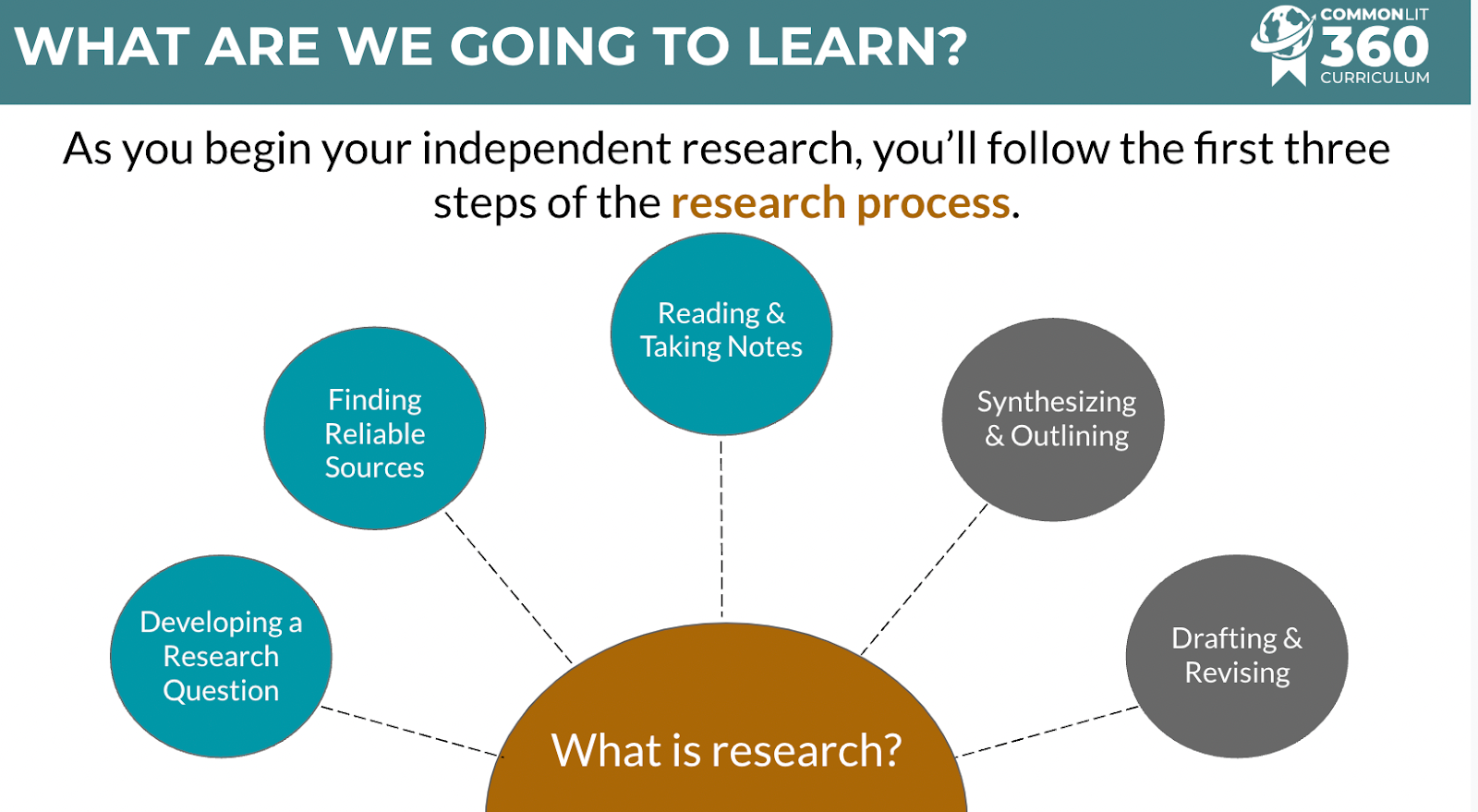
Students learn about the research process and how to craft research papers throughout the unit
Each unit includes lessons about conducting research so students can be prepared for the end-of-unit research paper. Scaffolded supports help students move through the research process. In lower grades, certain steps in the process, like developing a research question and finding reliable sources, are provided for students.
Students learn about writing research papers during writing lessons. In 8th Grade, students learn how to discuss and outline research papers. Then, they learn how to write a counterclaim, format a Works Cited page, and use in-text citations properly. Each of these research-paper focused writing lessons will prepare students to answer the end-of-unit essay.

Students also explore how to conduct independent research in research-specific lessons. In 8th Grade, teachers explain that they have provided the first two steps of the research process for students: developing a research question and finding reliable sources.
In the lesson, students are taught how to use a graphic organizer to take notes on each text they read in preparation for their research paper. Students also engage in an Introduction to Independent Research lesson, where they learn about steps of the research process and begin reading and taking notes on supplemental texts. Later, students engage in a discussion lesson that will help them synthesize all the information they have learned throughout the unit by discussing the research question with classmates.
Related Media Explorations provide even more background information for students
Related Media Explorations are a unique cornerstone of our ELA curriculum. These interactive tasks bring our research units to life and provide background information for students to use in their research.
In 8th Grade, students learn about the way football culture has changed over the past few decades as scientists learn more about the long-term effects of repeated concussions. Students watch three videos that explain the culture of football in the past and present, and analyze statistics about concussions before discussing the question: “Who is most responsible for shaping mindsets about tackling in football: players, coaches, parents, or fans?”
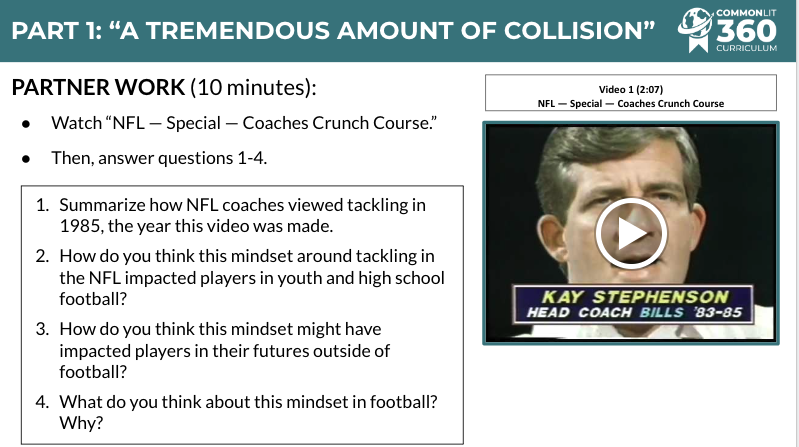
Discussion lessons help students synthesize information in preparation for their research paper
Discussion lessons in each research unit provide students with the opportunity to practice citing evidence from sources, explain their evidence to classmates, and practice synthesizing information. These conversations give students the chance to gain new perspectives, receive feedback on their ideas, and boost their confidence before delving into the research paper.
In 8th Grade, students synthesize their ideas about the research question through a class discussion. After the discussion, students have an opportunity to outline their research paper using both their discussion notes and the note-taking graphic organizer they have used throughout the unit.
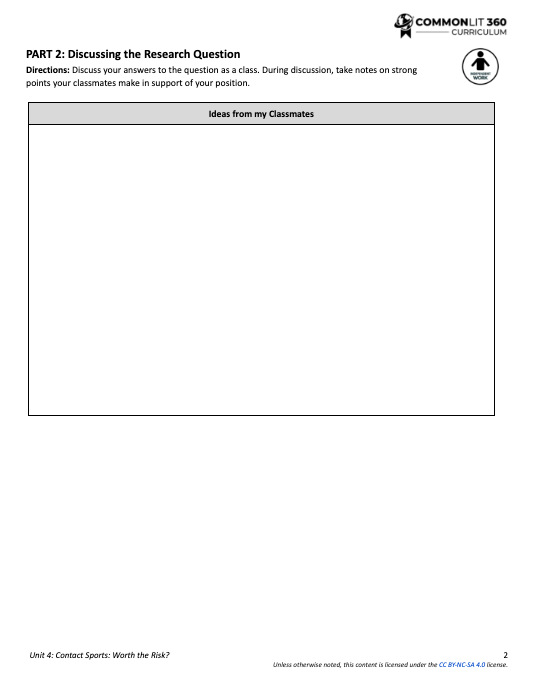
Participate in an optional final project that fosters creative thinking and collaboration
Each research unit comes with an optional end-of-unit project to further engage students through project based learning. These optional projects help foster student creativity and collaboration. Students can work with a partner or group to complete the task.
In 8th grade, students must make a brochure providing prospective parents and student athletes with factual information about the benefits and risks about contact sports so families can make an informed decision about participating. Students must work with a peer with an opposing view on the topic so the brochure is factual and unbiased. This task encourages teamwork and collaboration between peers with differing views.
Grade | Unit Title | Optional Final Project |
6th | Our Changing Oceans | Create 1-3 mock social media posts about ocean conservation |
7th | Social Media: Risks and Rewards | Create 2-3 mock social media posts that promote positive usage of social media |
8th | Contact Sports: Worth the Risk? | Create a brochure to provide prospective parents and student athletes with factual information about the benefits and risks of contact sports |
9th | The Science of Branding: Why We Buy | Make a Brand Strategy and Messaging Video Blog to help prospective buyers of a brand make informed decisions about the company they are putting their money behind |
10th | The Fashion Industry: Past to Present | Put together a presentation about the humaneness of a chosen clothing brand for an audience of potential consumers |
Vocabulary and grammar lessons build student comprehension and writing skills
Each 360 unit comes with vocabulary and grammar lessons. Vocabulary activities help students internalize high-impact academic vocabulary words they will see in the texts they are reading. Grammar activities help students improve their writing skills, teaching students valuable skills to construct carefully crafted, grammatically correct paragraphs.
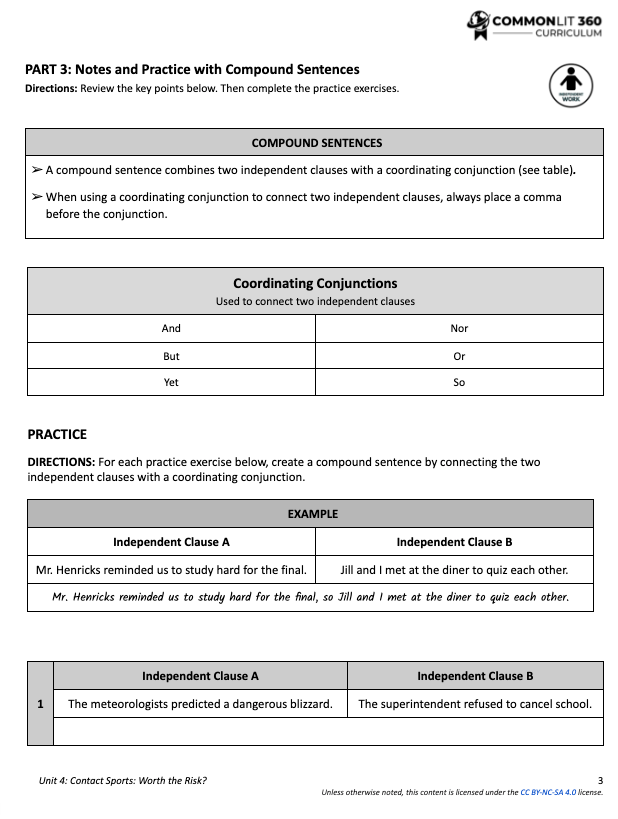
Want to learn more about research units and CommonLit 360? Register for a free, 30-minute webinar today!
Interested in learning about our affordable support packages? For just $6,500 per school, School Essentials PRO Plus provides teachers with three benchmark assessments, two unit skill assessments per 360 unit, personalized professional development, school-wide data reports, LMS integrations, and more.
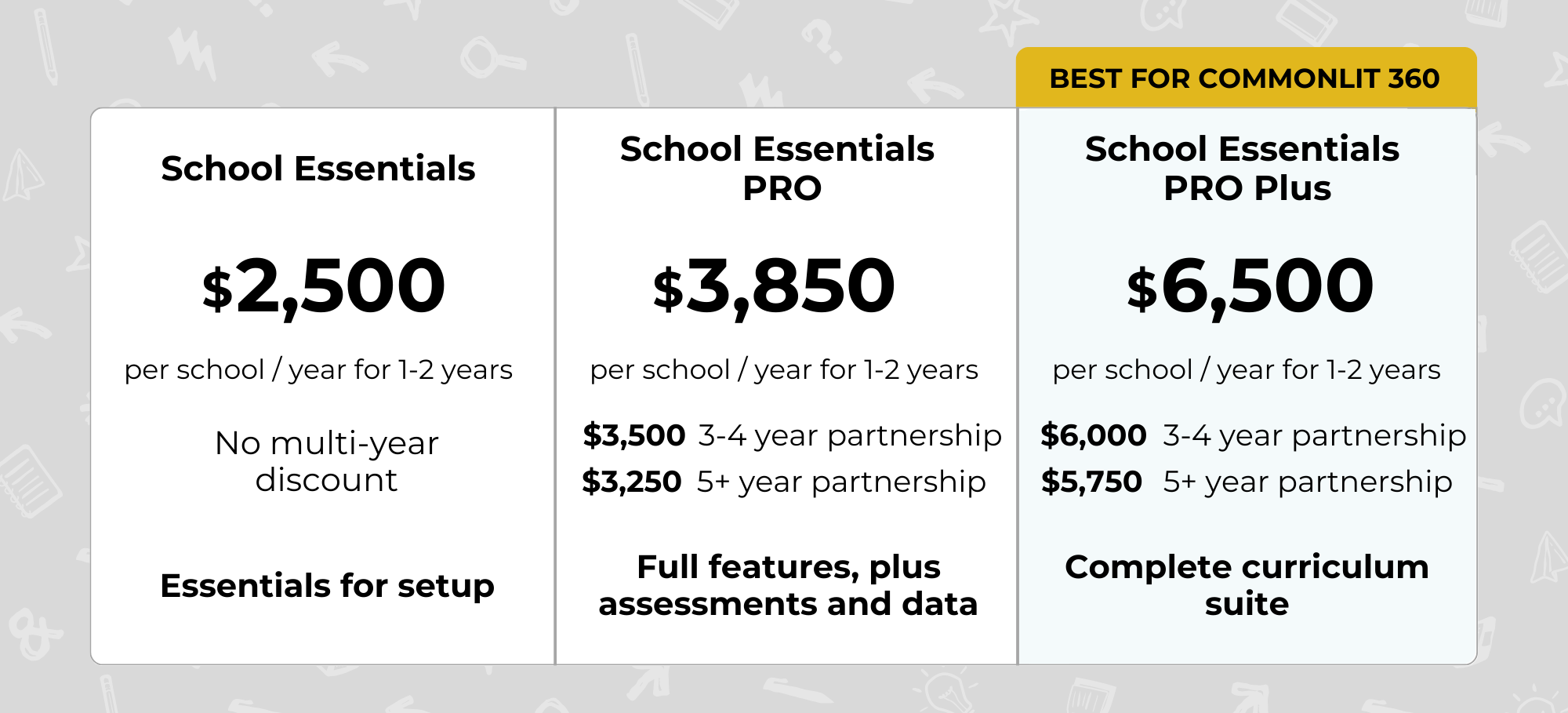
We are eager to support your team!
Chat with CommonLit
CommonLit’s team will reach out with more information on our school and district partnerships.

Teaching Research Papers with High School Students
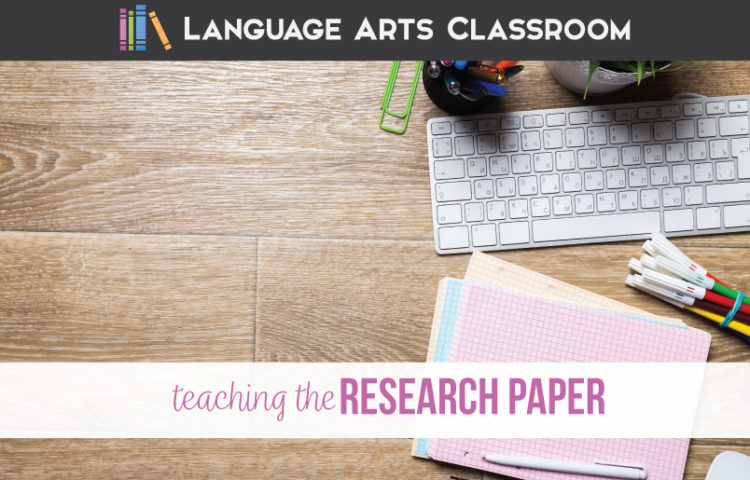
Teaching research papers with high school students? Teaching students how to write a research paper is an important part of an ELA class. Here are guidelines to make this writing unit a success.

Lawyers, political organizers, advertisers, real estate agents: most jobs require ethical research and then a written report. As a citizen, I research concepts important to my community and family. As knowledge in our world grows, student will only have more reasons to be ethical digital citizens.
Providing students with a sustainable foundation is a humbling responsibility. Teachers know that teaching students how to write a research paper is important. While teaching students how to research, I share those sentiments with them. I want students to know I take research seriously, and my expectation is that they will as well. My research paper lesson plans take into account the seriousness of ethical research.

What is the best way to teach research papers to students?
The best way to teach research papers to students is by breaking down the process into manageable steps. Start with teaching them how to choose a topic, conduct research, and create an outline/list/graphic organizer. Then guide them in writing drafts, revising and editing their papers, and properly citing sources.
Even after teaching for a decade, I sometimes overwhelm myself with this duty. I handle teaching research papers with four ideas in my mind.
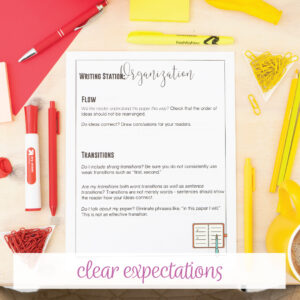
Provide clear expectations.
Idea one, be clear.
A feeling I always hated as a student was the unknown . Sure, part of the learning process is not knowing everything and making mistakes. I, as the teacher, don’t want to be the source of frustration though. I never want my classes to wander down a path that won’t advance them toward our end goal: a well-researched paper. Part of teaching research skills to high school students is providing clear expectations.
As writing in the ELA classroom becomes more digital, I simply give writers tools on our online learning platform. That way, I can remind them to check a certain section or page as we collaborate on their writing.
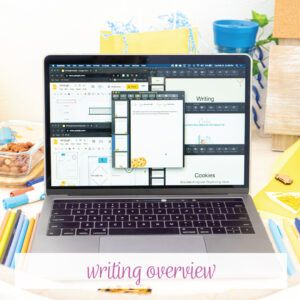
Give a writing overview.
Idea two, provide an overview.
Every teacher grades a little differently. Sometimes, terminology differs. Throw in the stress of research, and you might have a classroom of overwhelmed students. An overview before teaching research papers can relax everyone!
I start every writing unit with clear expectations, terminology, and goals. I cover a presentation with students, and then I upload it to Google Classroom. Students know to consult that presentation for clarity. Initially, covering the basics may seem wasteful, but it saves all of us time because students know my expectations.
Furthermore, parents and tutors appreciate my sharing that information. As students work independently (inside or outside of class), they can take it upon themselves to consult expectations. Their responsibility with this prepares them for their futures. Finally, having established that overview with students during virtual classes was invaluable.
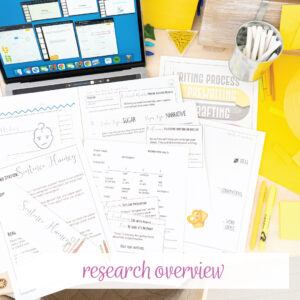
Show an overview of research.
Idea three, clearly explain research.
Before you begin teaching students how to research, outline what strong research looks like. You might consider these questions:
- What (if any) secondary sources will I accept? What about Wikipedia?
- Should students use a balance of books and online material? Do they have access to books?
- Are dates for certain topics important? Will I not accept research from before a certain date?
I’m not answering these questions for you, but I’ve seen teachers provide such guidelines while teaching research skills to high school students. Whatever parameters you have for teaching the research paper, share those with students.
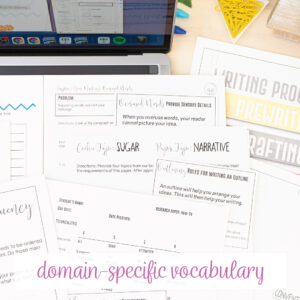
Define domain-specific vocabulary.
Idea four, don’t assume classes share the same domain-specific vocabulary.
High school classes are likely familiar with the writing process, yet the research process brings more vocabulary with which they might not be familiar.
Providing definitions for the most basic concepts enables me to walk through expectations and clarify concepts. Examples might include:
- Informational text
- Search engine
- Credible sources
- Claim, counterclaim
- Research question
- Journal articles
Plus, by providing definitions to terms, scaffolding occurs naturally. Academic writing has terms we teachers might use casually, but some students maybe have not heard of them.

How can we model ethical research?
After outlining expectations to young writers, we begin research. Some schools rely on Google Scholar, and others use Explora or EBSCO. Sign students into your databases, and run them through the program.
I stress to young writers that conducting oneself with honesty and integrity is crucial to writing. When teaching research papers with high school students, I connect these ethics to their very near futures. Aside from the basics of documenting and citing, I highlight these two points.
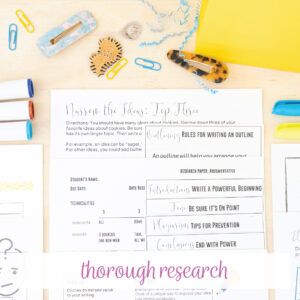
- Citing material. This includes direct quotes and paraphrasing. I review both of those concepts throughout our research and writing. The majority of a paper should be the writer’s thoughts, supported by research. Students need those concepts repeated, and they are important, so I spend time emphasizing them.
Often, I turn the basics of research into a writing mini lesson . Modeling ethical research is a very specific part of ELA classes. I understand that other classes require research and that parents might teach research skills as well.
Still, to have a functioning society, students must view relevant information with critical eyes. Teaching young citizens how to write a research paper includes clear guidelines for research and one-on-one conferencing.
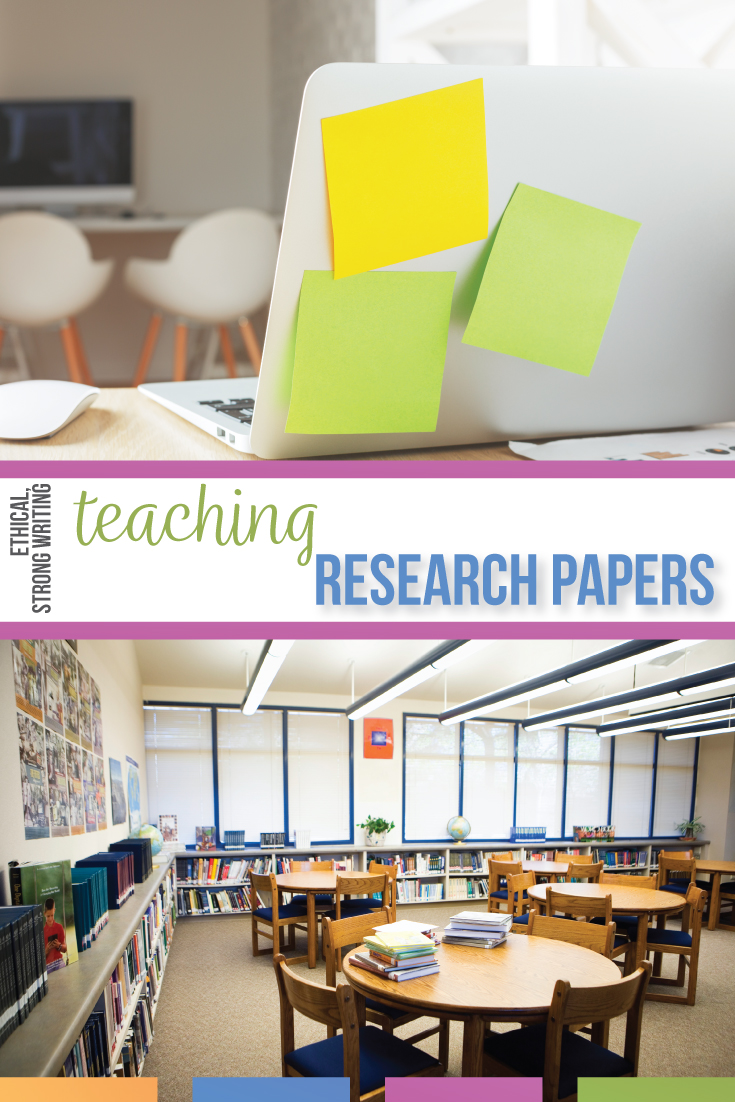
How can we encourage strong writing?
Hopefully, students write with passion. Hopefully, they want to show or prove their statements. Teaching students how to write a research paper is easier when students enjoy their topics.
I cover grammar with students (all year), and I always make the connection for them to implement those lessons. Teaching them to write a research paper requires some focus on writing skills. Primarily, they will work on strong verbs and syntax.
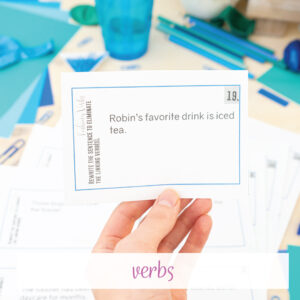
Look at verbs.
Students possess strong verbs in their vocabularies. Sometimes in writing, humans create a fast rough draft, myself included. Every verb is a linking verb, and every sentence reads subject + linking verb + predicate adjective. (Nothing is wrong with a linking verb, but writers should break from the mold.) When I see that a paper can be improved with strong verbs, we conference about ways to improve the verbs without thesaurus abuse.
Ask students to pick their least favorite paragraph in a research paper and to highlight every verb . Chances are, they are not conveying their message because of weak verbs. Help them turn the predicate adjectives into verbs or think of an action that will convey their meaning. Additionally as you continue teaching students how to research, you’ll cross strong verbs in research. Point out those verbs to your classes.
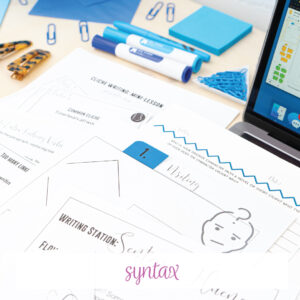
Examine syntax.
Just as every sentence shouldn’t contain a linking verb, not every sentence should be a simple sentence. Sentence syntax takes practice, and often teamwork! Ask students to provide a sentence that needs improvement. Break the sentence down into phrases and clauses. (If it is a simple sentence, ask for another sentence to attach.) What is the best arrangement? What is the student’s goal? Would a conjunctive adverb lead readers to a conclusion? What if a subordinating conjunction started the sentence, or, should the dependent clause come second in the complex sentence? Play with the language of papers! By connecting grammar to writing, you have empowered learners to improve their writing.
Sentence structure is also part of teaching students how to write a research paper because the information must be factual. Sometimes students report information incorrectly, and sometimes, their sentence structure is to blame. Focus on a return to simple syntax for ethical research, and then work on sentence diversity if possible.
All parts of an ELA classroom fit together like puzzle pieces, and when teaching research papers, that neatly assembled puzzle sits on display. By giving classes clear expectations, you are ready to guide them through ethical research and through strengthening their writing. Teaching the research paper is a large task, so you should know what you want to accomplish.
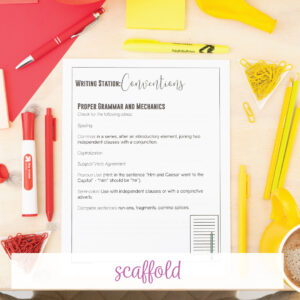
Is scaffolding teaching research papers possible?
Overall, a research unit takes me 2-3 weeks with high school students. Every teacher has different methodologies, but if I allow writing research papers for about a month, writers become bored. Fifteen working days for research, revision, and publishing is my average time frame. Going longer, and different aspects fall apart, and we lose momentum.
Scaffolding is built into our days. Outline the writing process with your calendar, and add days that follow the writing process. Pieces to consider:
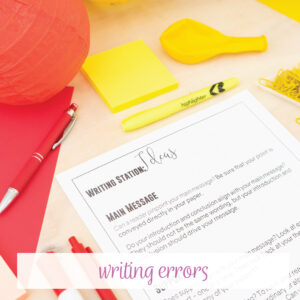
Scaffold writing errors.
Overall, writing errors are an inevitable part of the learning process. As teachers, it is crucial that we address these errors in a way that not only corrects them but also helps students understand why they occurred in the first place. When it comes to research papers, grammatical errors can significantly affect the credibility and clarity of the information presented.
One effective way to scaffold writing errors is by focusing on the actual problems that classes have in their papers. When we conference, I jot down common errors and then cover them as a class.
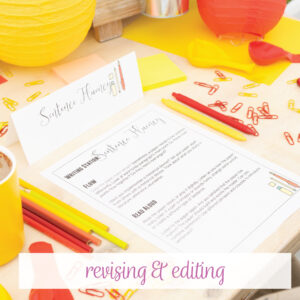
Include revising and editing days.
Young writers should take ownership of the writing process which includes revising and editing. This can be achieved by dedicating specific days in the research unit for revising and editing. By allotting time for these crucial steps, writers will learn to critically analyze their work and make necessary improvements.
During the revision phase, students can focus on the overall structure and organization of their research paper. They should evaluate if their arguments are clear and logical, if the evidence supports their claims effectively, and if there is a smooth flow of ideas throughout the paper. This stage allows them to refine their content and ensure that it aligns with their desired objectives.
After revising, students should move toward publishing and sharing with their peers.
Your turn, writing teachers: What questions do you have left?
All activities mentioned in this post (except the common errors bundle) are included in my writing bundle for freshmen and sophomores .
What questions remain? Do you have different advice to offer teachers?
What do you focus on with when teaching research papers? Read how Melissa from Reading and Writing Haven differentiates when teaching research writing .
Subscribe to our mailing list to receive updates about new blog posts, freebies, and teaching resources!
Marketing Permissions We will send you emails, but we will never sell your address.
You can change your mind at any time by clicking the unsubscribe link in the footer of any email you receive from us, or by contacting us at [email protected] . We will treat your information with respect. For more information about our privacy practices please visit our website. By clicking below, you agree that we may process your information in accordance with these terms.
We use Mailchimp as our marketing platform. By clicking below to subscribe, you acknowledge that your information will be transferred to Mailchimp for processing. Learn more about Mailchimp’s privacy practices here.
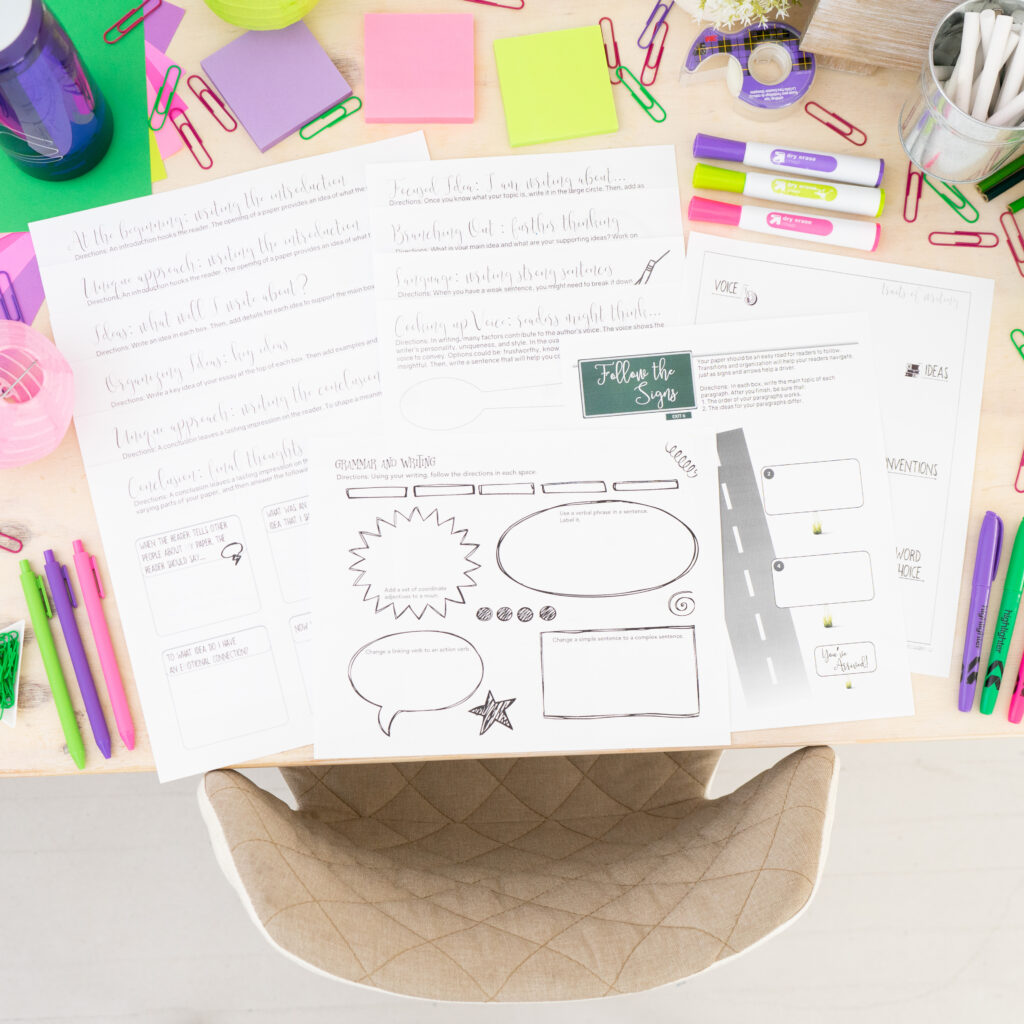
ethical research writing activities writing lessons writing process
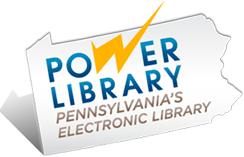
Teaching Research Skills to K-12 Students in The Classroom
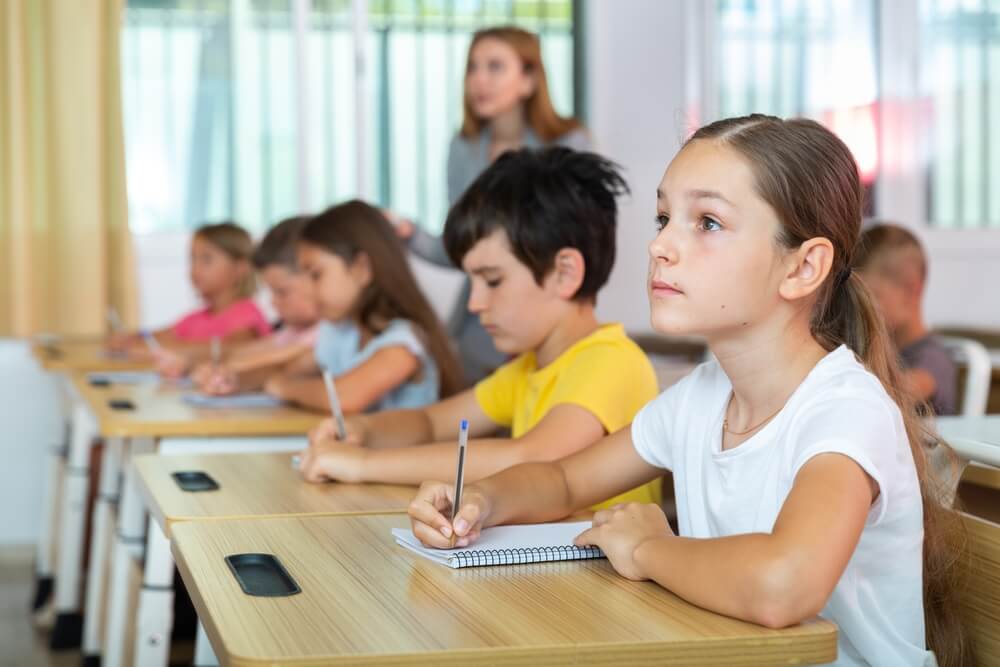
Research is at the core of knowledge. Nobody is born with an innate understanding of quantum physics. But through research , the knowledge can be obtained over time. That’s why teaching research skills to your students is crucial, especially during their early years.
But teaching research skills to students isn’t an easy task. Like a sport, it must be practiced in order to acquire the technique. Using these strategies, you can help your students develop safe and practical research skills to master the craft.
What Is Research?
By definition, it’s a systematic process that involves searching, collecting, and evaluating information to answer a question. Though the term is often associated with a formal method, research is also used informally in everyday life!
Whether you’re using it to write a thesis paper or to make a decision, all research follows a similar pattern.
- Choose a topic : Think about general topics of interest. Do some preliminary research to make sure there’s enough information available for you to work with and to explore subtopics within your subject.
- Develop a research question : Give your research a purpose; what are you hoping to solve or find?
- Collect data : Find sources related to your topic that will help answer your research questions.
- Evaluate your data : Dissect the sources you found. Determine if they’re credible and which are most relevant.
- Make your conclusion : Use your research to answer your question!
Why Do We Need It?
Research helps us solve problems. Trying to answer a theoretical question? Research. Looking to buy a new car? Research. Curious about trending fashion items? Research!
Sometimes it’s a conscious decision, like when writing an academic paper for school. Other times, we use research without even realizing it. If you’re trying to find a new place to eat in the area, your quick Google search of “food places near me” is research!
Whether you realize it or not, we use research multiple times a day, making it one of the most valuable lifelong skills to have. And it’s why — as educators —we should be teaching children research skills in their most primal years.
Teaching Research Skills to Elementary Students
In elementary school, children are just beginning their academic journeys. They are learning the essentials: reading, writing, and comprehension. But even before they have fully grasped these concepts, you can start framing their minds to practice research.
According to curriculum writer and former elementary school teacher, Amy Lemons , attention to detail is an essential component of research. Doing puzzles, matching games, and other memory exercises can help equip students with this quality before they can read or write.
Improving their attention to detail helps prepare them for the meticulous nature of research. Then, as their reading abilities develop, teachers can implement reading comprehension activities in their lesson plans to introduce other elements of research.
One of the best strategies for teaching research skills to elementary students is practicing reading comprehension . It forces them to interact with the text; if they come across a question they can’t answer, they’ll need to go back into the text to find the information they need.
Some activities could include completing compare/contrast charts, identifying facts or questioning the text, doing background research, and setting reading goals. Here are some ways you can use each activity:
- How it translates : Step 3, collect data; Step 4, evaluate your data
- Questioning the text : If students are unsure which are facts/not facts, encourage them to go back into the text to find their answers.
- How it translates : Step 3, collect data; Step 4, evaluate your data; Step 5, make your conclusion
- How it translates : Step 1, choose your topic
- How it translates : Step 2, develop a research question; Step 5, make your conclusion
Resources for Elementary Research
If you have access to laptops or tablets in the classroom, there are some free tools available through Pennsylvania’s POWER Kids to help with reading comprehension. Scholastic’s BookFlix and TrueFlix are 2 helpful resources that prompt readers with questions before, after, and while they read.
- BookFlix : A resource for students who are still new to reading. Students will follow along as a book is read aloud. As they listen or read, they will be prodded to answer questions and play interactive games to test and strengthen their understanding.
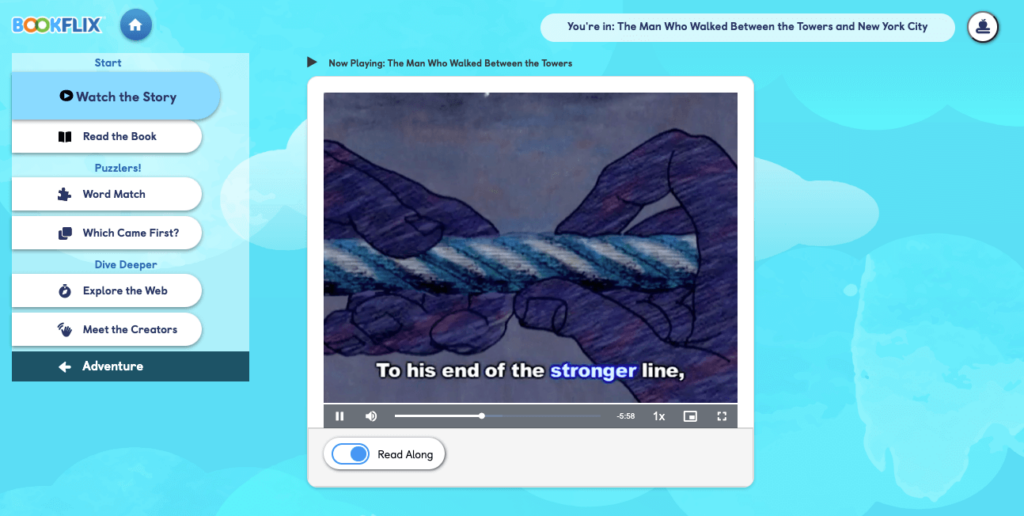
- TrueFlix : A resource for students who are proficient in reading. In TrueFlix, students explore nonfiction topics. It’s less interactive than BookFlix because it doesn’t prompt the reader with games or questions as they read. (There are still options to watch a video or listen to the text if needed!)

Teaching Research Skills to Middle School Students
By middle school, the concept of research should be familiar to students. The focus during this stage should be on credibility . As students begin to conduct research on their own, it’s important that they know how to determine if a source is trustworthy.
Before the internet, encyclopedias were the main tool that people used for research. Now, the internet is our first (and sometimes only) way of looking information up.
Unlike encyclopedias which can be trusted, students must be wary of pulling information offline. The internet is flooded with unreliable and deceptive information. If they aren’t careful, they could end up using a source that has inaccurate information!
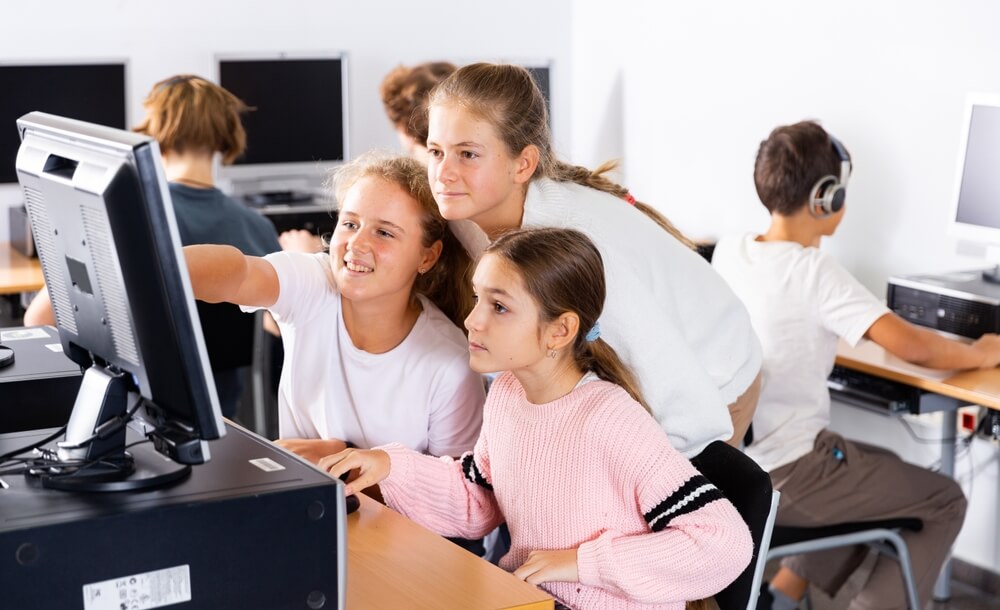
How To Know If A Source Is Credible
In general, credible sources are going to come from online encyclopedias, academic journals, industry journals, and/or an academic database. If you come across an article that isn’t from one of those options, there are details that you can look for to determine if it can be trusted.
- The author: Is the author an expert in their field? Do they write for a respected publication? If the answer is no, it may be good to explore other sources.
- Citations: Does the article list its sources? Are the sources from other credible sites like encyclopedias, databases, or journals? No list of sources (or credible links) within the text is usually a red flag.
- Date: When was the article published? Is the information fresh or out-of-date? It depends on your topic, but a good rule of thumb is to look for sources that were published no later than 7-10 years ago. (The earlier the better!)
- Bias: Is the author objective? If a source is biased, it loses credibility.
An easy way to remember what to look for is to utilize the CRAAP test . It stands for C urrency (date), R elevance (bias), A uthority (author), A ccuracy (citations), and P urpose (bias). They’re noted differently, but each word in this acronym is one of the details noted above.
If your students can remember the CRAAP test, they will be able to determine if they’ve found a good source.
Resources for Middle School Research
To help middle school researchers find reliable sources, the database Gale is a good starting point. It has many components, each accessible on POWER Library’s site. Gale Litfinder , Gale E-books , or Gale Middle School are just a few of the many resources within Gale for middle school students.
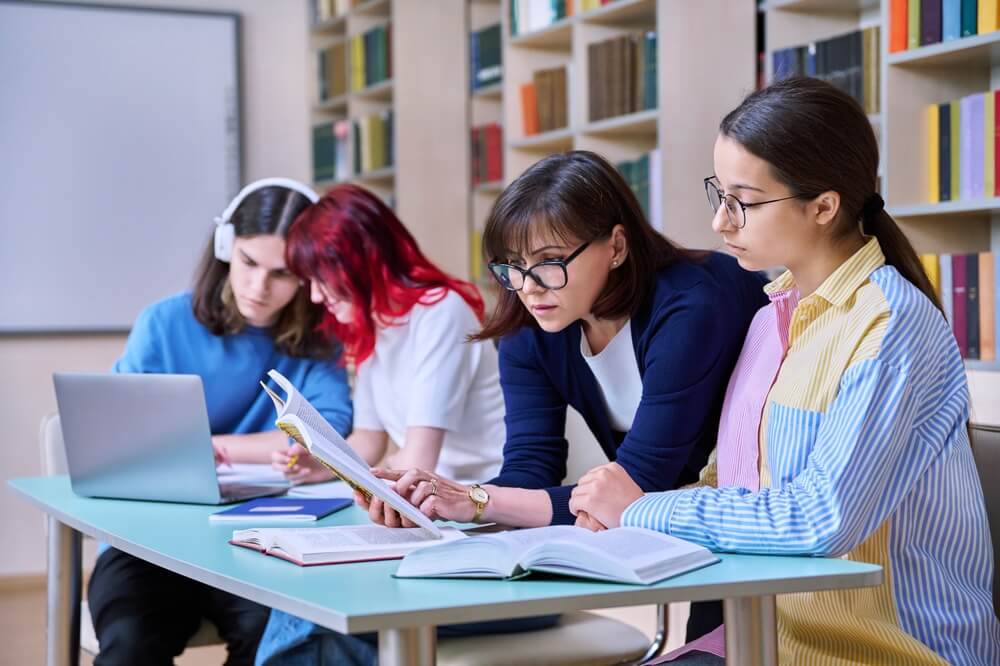
Teaching Research Skills To High Schoolers
The goal is that research becomes intuitive as students enter high school. With so much exposure and practice over the years, the hope is that they will feel comfortable using it in a formal, academic setting.
In that case, the emphasis should be on expanding methodology and citing correctly; other facets of a thesis paper that students will have to use in college. Common examples are annotated bibliographies, literature reviews, and works cited/reference pages.
- Annotated bibliography : This is a sheet that lists the sources that were used to conduct research. To qualify as annotated , each source must be accompanied by a short summary or evaluation.
- Literature review : A literature review takes the sources from the annotated bibliography and synthesizes the information in writing.
- Works cited/reference pages : The page at the end of a research paper that lists the sources that were directly cited or referenced within the paper.
Resources for High School Research
Many of the Gale resources listed for middle school research can also be used for high school research. The main difference is that there is a resource specific to older students: Gale High School .
If you’re looking for some more resources to aid in the research process, POWER Library’s e-resources page allows you to browse by grade level and subject. Take a look at our previous blog post to see which additional databases we recommend.
Visit POWER Library’s list of e-resources to start your research!
Research Lesson Plan: Research to Build and Present Knowledge
*Click to open and customize your own copy of the Research Lesson Plan .
This lesson accompanies the BrainPOP topic Research , and supports the standard of gathering relevant information from multiple sources. Students demonstrate understanding through a variety of projects.
Step 1: ACTIVATE PRIOR KNOWLEDGE
Prompt students to think of a time they had to do research, either for school or for themselves. Ask:
- How did you determine what information to look for?
- What went well? What was challenging?
Step 2: BUILD BACKGROUND
- Read aloud the description on the Research topic page .
- Play the Movie , pausing to check for understanding.
- Have students read one of the following Related Reading articles: “Way Back When” or “In Depth.” Partner them with someone who read a different article to share what they learned with each other.
Step 3: ENGAGE Students express what they learned about research while practicing essential literacy skills with one or more of the following activities. Differentiate by assigning ones that meet individual student needs.
- Make-a-Movie : Create a tutorial that answers this question: What are the steps for writing a research report? (Essential Literacy Skill: Acquire and use domain specific words and phrases)
- Make-a-Map : Make a spider map in which you state a research question in the center, and around it, identify sub questions and sources for finding answers in order to write a research report. (Essential Literacy Skill: Gather relevant information from multiple print and digital sources)
- Creative Coding : Code a museum where each artifact represents a component of the research process. (Essential Literacy Skill: Make logical inferences from explicit details)
Step 4: APPLY & ASSESS
Apply : Students t ake the Research Challenge , applying essential literacy skills while demonstrating what they learned about this topic.
Assess: Wrap up the lesson with the Research Quiz .
Step 5: EXTEND LEARNING
Related BrainPOP Topics : Deepen understanding of research with these topics: Online Sources , Internet Search , and Citing Sources .
Additional Support Resources:
- Pause Point Overview : Video tutorial showing how Pause Points actively engage students to stop, think, and express ideas.
- Modifications for BrainPOP Learning Activities: Strategies to meet ELL and other instructional and student needs.
- BrainPOP Learning Activities Support: Resources for best practices using BrainPOP.

- BrainPOP Jr. (K-3)
- BrainPOP ELL
- BrainPOP Science
- BrainPOP Español
- BrainPOP Français
- Set Up Accounts
- Single Sign-on
- Manage Subscription
- Quick Tours
- About BrainPOP

- Terms of Use
- Privacy Policy
- Trademarks & Copyrights

Teaching the Research Paper Part 1: Introducing the Research Paper and Preparing Students for the Assignment

There are three things every teacher should do before taking their students to the computer lab to research information for their research papers: teach the difference between reliable and unreliable sources, check to make sure every student has a self-generated research question, and help prepare students with key phrases and words to search.
Whenever I begin teaching the research paper , I always share with my students the story of how I wrote my Master’s thesis paper. It was a 50 page paper with 50 different sources.
I don’t do this to toot my own horn. I don’t do this to scare my students away from post-secondary education. I don’t do this to make the students feel like their research assignment is petty and small. I do this so that I can explain the process of research to them and so that they know I was once in their shoes.
So how exactly do you write a 50-page research paper that has 50 unique, credible sources? One source at a time.
Teaching the Research Paper: 3 Critical Steps to Take
Teaching the research paper: find credible sources.
When teaching the research paper to my secondary ELA students, I first show them about research and credible sources. Before students can even begin looking for their sources, they have to know how to distinguish between reliable and unreliable sources. Being able to do so is the first step in finding a reliable source.

Once I feel my students have a firm understanding of the sources they will be looking at, we then dive into the research topic, and the students select their issues related to the main topic.
Teaching the Research Paper: Create Questions
One of the critical parts of teaching the research paper to students is having them come up with their self-generated research questions. To do this, I encourage students to work collaboratively and talk about their research topics.
Students can work in small groups to see what their peers would like to know about that matter.
Working in small groups first provides extra support for EL and struggling students. From there, students come up with their questions to answer. There is also a graphic organizer in my Research Paper Writing resource that is especially helpful during this process.
Teaching the Research Paper: Brainstorm Key Words
Once students have a self-generated question, it is time to get students to think about keywords and phrases they will use in their search for sources. All too often I see students typing precise, wordy questions into a search engine. This only creates frustration for the students as well as the teacher.
Taking half a class to discuss keywords and phrases helps students tremendously, and it even speeds up the research process because students can find credible sources a lot easier. When teaching keywords and phrases to my students, I encourage them to type no more than four words into the search engine. I tell them that they must think of the most important words directly related to their topic.
To help students think about keywords and phrases they can use in the search engine, have them think about hashtags for their research topic. This fun, easy, and engaging strategy will get students thinking about what to research and what is explicitly related to their subject.
Teaching the Research Paper: A Research Paper Writing Instructional Unit
Take the stress out of teaching your students how to write a research paper with this complete research writing unit ! This comprehensive and complete research paper writing unit will help you teach your students how to write a research paper. Now available in print + digital!
This step-by-step resource teaches your students the eight steps of research writing, and it includes every single thing you could need for a successful research writing unit! Plus, it is updated for 9th edition MLA!
The editable teaching presentation (which comes in both PowerPoint and Google Slides®) is ideal for direct instruction and includes multiple days of guided instruction! The research writing presentation introduces students to the eight steps for completing a research project: selecting topics, generating questions, brainstorming, researching and gathering credible information, organizing and outlining, writing the first draft, peer editing, and finalizing the paper.
Research Paper Teaching Unit
Take the stress out of teaching your students how to write a research paper with this complete research writing unit ! This comprehensive and complete research paper writing unit will help you teach your students how to write a research paper. Now available in print + digital!
Read more about teaching the research paper
Read more about research in the classroom with Part 2 which covers research paper topics and Part 3 which includes using Google Apps for research.
THANK YOU! I've had to sit through some painfully tedious COLLEGE classes because so many students aren't learning this in K12 that we're required to take classes on things like how to do a search. I greatly appreciate those of you who are teaching these important skills!
Is there a part 2?
Hi Deena, Thank you for reaching out. Yes. There is a part 2 and a part 3. I will link them to this post!
Leave a Reply Cancel reply
Your email address will not be published. Required fields are marked *
Save my name, email, and website in this browser for the next time I comment.

SUBSCRIBE NOW
- Skip to primary navigation
- Skip to main content
- Skip to primary sidebar
- Skip to footer
Teaching ELA with Joy
Middle School ELA Resources
6 Ideas for Teaching Research Skills
By Joy Sexton Leave a Comment
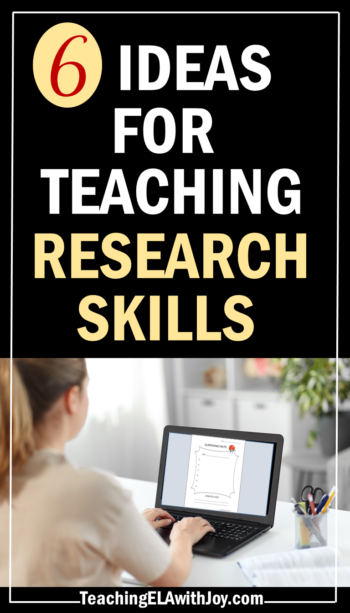
When thinking about ideas for teaching research skills, teachers can easily become overwhelmed. That’s mainly because our standards list so many requirements for students to master! If your school requires a major research paper, you might need to start off with some smaller practice pieces. Do your students know how to paraphrase? Can they judge if a website is credible? Do they know how to compose an open-ended question? How about citing sources? Check out these activities that will help your students gain essential practice with research skills.
Ideas for Teaching Research Skills
1. Say It Your Way – One great place to start is getting students in the habit of paraphrasing. Choose an interesting topic and a short article to demonstrate. An online encyclopedia comes in handy here. We worked with information on a particular dinosaur. Project the article and with class participation, highlight 5 pieces of key information. This is the information students will be “taking notes” on. Then query the students how each piece of information could be stated in bulleted notes (without copying full sentences!). Model the bulleted note-taking as students complete their own copy. When the bulleted notes are complete, engage the class in composing new sentences that are paraphrased. Again, model writing this paragraph as students follow suit. Now the process of note-taking and paraphrasing should seem “doable” in their own research.
2. Surprising Facts – A fun way for students to dive into research is to give them a topic and simply task them with finding facts that are surprising . This activity works great with partners. Topics could tie in with a current class novel or story (such as “elephant” from The Giver) or even an author. Surprising facts about Gary Paulsen, Kwame Alexander, or Edgar Alan Poe make an interesting class discussion! Students enjoy sharing their findings. I devised a free handout where students can record the topic, their surprising facts, and the website(s) they used. Grab it in Google Docs and copy to your drive by clicking the link: https://bit.ly/3Nah9UB
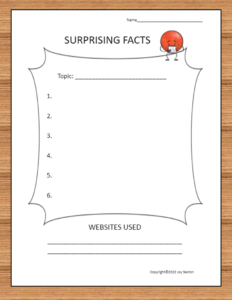
3. Give Credit Where It’s Due – Most students understand that sources need to be cited. However, many remain unclear on the process. A demonstration using a citation generator will help. I like www.bibme.org , but if you google “citation generator” you’ll find a slew of them. I open a few tabs in advance with animal websites. To demonstrate, grab the URLs and insert into the generator. Cut and paste the citations to a blank document. Then you can show students how to indent and alphabetize. For practice, give students a list of several websites. You could also include a magazine article and a book. With a partner, have them construct the works cited using a generator, indenting and alphabetizing correctly.
4. Support an Opinion – Students love to voice their opinions , but need practice supporting them with facts . Lucky for us, there are loads of argument topics available free online. You can offer several topic choices, and students choose one and respond with their opinion. Next, have them locate 2-3 important facts or statistics that specifically support their opinion. Make sure to emphasize that the information will need to be paraphrased. And since sources were used, a Works Cited should also be added.
5. Good Question! – One purpose of research is to answer a question, so students need practice in formulating good questions . An open-ended question, one that requires more than just one answer, is the goal. Start by demonstrating the difference between an open-ended question and a “thin” or “skinny” question (not open-ended). One way is to project an image of a violin on your whiteboard. Then type or write out these questions: 1. How many strings does a violin have? 2. How is a violin made? Ask students which is the open-ended question and why. Then project another image. Ask for volunteers to formulate a thin question, and then an open-ended question. Once they understand this concept, let all students practice composing both thin and open-ended questions. This activity works well in groups. Each student contributes a topic.
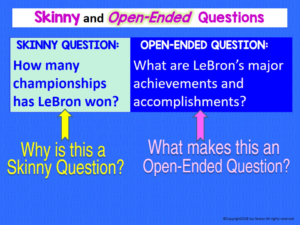
6. Format is Key – A sure-fire way to get students excited about a research project is offering engaging formats for presentation. PowerPoint is well known by most students, but take time to demonstrate some other great options. Canva allows students to create awesome Infographics! Or how about a tri-fold brochure in Publisher? Students can make up a quick template with custom headings. Set a timer for 10-15 minutes and let students experiment with the possibilities. My students have enjoyed a Q & A format, using a template I created with PowerPoint. Even students who prefer typing their report in paragraphs can easily design a poster. Along with the paragraphs, just add images, captions, topic, and headings.
I hope I have broadened your ideas for teaching research skills. I think you’ll agree that students need time and mini-lessons to get comfortable with the procedures we require. A quick graphic organizer coupled with a short activity can help solidify the skills they’ll need.
Here’s another post I wrote that will give you more helpful ideas for teaching research skills: 10 Ideas to Make Teaching Research Easier
Join the Newsletter
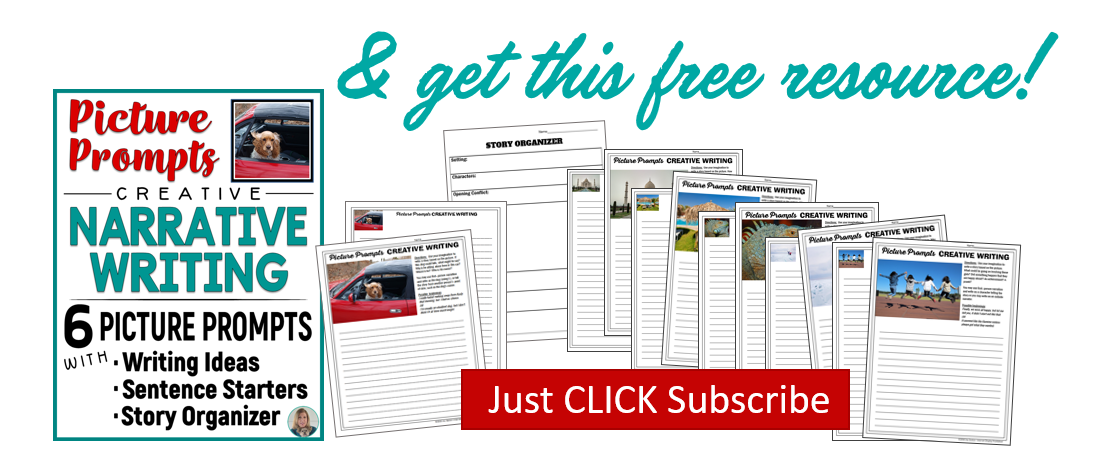
Reader Interactions
Leave a reply cancel reply.
Your email address will not be published. Required fields are marked *
Save my name, email, and website in this browser for the next time I comment.
Notify me of follow-up comments by email.
Notify me of new posts by email.
This site uses Akismet to reduce spam. Learn how your comment data is processed .


High School to College Transition
- Get Started
- For Students: Research Toolkit This link opens in a new window
Prepare Students for College Research
Discuss critical questions for information literacy, find lesson plans & activities, read articles about the high school to college transition, associations and standards, information literacy news.
- Data Literacy This link opens in a new window
- News Literacy This link opens in a new window
- Financial Literacy This link opens in a new window
Discover tips and activities that address the research struggles of first-year college students.
Choosing a topic, creating an argument:, students struggle to choose their own research topic and browse for ideas. they take a stance before researching and get frustrated when sources don't fit their argument. they often choose a different topic or rely on less credible sources..
- Provide opportunities for students to choose their own research topics.
- Introduce students to the "Browse Issues" feature in the Opposing Viewpoints database and websites like ProCon.org or The New York Times Prompts for Argumentative Writing .
- Guide students through the exploration phase of research. Not knowing is okay.
- Differentiate between writing a report (specific answers) and a research paper (asking questions, synthesizing information, considering multiple perspectives).
- Hands-On Activities: Creating 21st Century Superheroes or Take a Stand
Awareness of information sources.
Students are reluctant to go beyond google and are overwhelmed by information choices and quantities..
- Help students understand that not everything can be found on Google. Provide examples.
- Create opportunities for research using databases and books.
- Explain the difference between popular and scholarly information .
- Practice using advanced Google search techniques and Google Scholar to narrow web results.
- Hands-on activities: The Google Bucket or Database Teach-In or Scholarly versus Popular
Turning a topic into a search.
Students find it difficult to find the right words when searching for information online. they don't understand that searching a database is not like searching google. .
- Take time to brainstorm search terms, synonyms, and different ways of describing or saying the same thing.
- Practice searching for articles using databases. Explore search features and limiters.
- Search a topic multiple times using different words on the Web and using multiple databases. Discover which words and which sources retrieve the best results. Use successful search results to find more more search terms (what words does the article use to describe the topic?).
- Hands-on activities: Synonym Scattergories or Furry Crab or Database Searching Research Activity
Understanding research as a process.
Students aren't aware of the need to search again and again, refining their searches as they discover new questions and synthesize new information ..
- Demonstrate the phases of the research process. Emphasize that research takes time and energy.
- Use concept mapping to show how research can take you in different directions.
- Hands-on activities: Summarizing Controversial Perspectives
Ability to evaluate and understand information.
Students are over-confident in their ability to evaluate information and determine whether or not a source is credible. .
- Use the Critical Thinking Questions about Information Literacy in this guide as a source for discussion and exploration.
- Discuss key concepts and critical thinking questions related to news literacy and data literacy .
- Hands-on activities: Evaluating the Interwebz with Think/Square/Share or Evaluating the Interwebz with Designated Skeptics or Scholarly versus Popula r or B lue Feed, Red Feed
Knowing where to go for help.
Students believe that they are expected to "know" already, or that they have to figure everything out on their own..
- Provide students with information on where they can go to get research help at school, by visiting WCC's Bailey Library, or from their local public library. Let them know that librarians will help them at any stage of the research process.
Head, A.J. (2013, December). Learning the Ropes: How freshmen conduct course research once they enter college. Project Information Literacy, Passage Studies Research Report .
Donham, J. (2014, January). College Ready - What can we learn from first-year college assignments? An examination of assignments in Iowa Colleges and Universities. School Library Research, 17.
- Research Struggles of First-Year Students
Help students think critically about research.
(Click on a topic to view questions)
Authority is Constructed & Contextual
- Why and when should you trust an information source?
- Who created this information? What is their level of credibility?
- Is the author an expert? Does the author need to be an expert in this context?
- Is the information biased? Is it opinion or fact?
- When searching for information online, how do you decide whether the information you find is good or bad?
Information Creation as a Process
- Where is the first place you go when you have a research question? What kinds of problems do you run into? Why?
- Is everything available on the Web for free (books, articles, information)? Why not? What's missing?
- How do you figure out what kind of information you are looking for?
- How many different sources of information can you think of? How do you know when an information source is the best choice for your information need?
- How can information be packaged and distributed?
- Is some information created for specific populations? How does that change its packaging and distribution? (Consider social media, blogs, newspapers, magazines, books, academic journals)
- Do you have a bias for or against certain types of information?
Information has Value
- How do you cite information sources? Why is it important to cite sources? Why do citations follow a particular format? Does it matter?
- How do you avoid plagiarism? Do you have any questions about plagiarism? What is the difference between plagiarism and paraphrasing, summarizing, or citing?
- In what ways can information be bound by a license or copyright? When are you allowed to reuse information?
- How do you properly use graphics or videos you find on the web? How do you know if graphics or videos are licensed for reuse?
- What is public domain? What is the creative commons?
Research as Inquiry
- How do you broaden or narrow a research topic?
- Have you ever struggled to find information on a topic and decided that there is nothing on your topic and you have to find a new topic? What other strategies could you use?
- If a topic you are researching is part of a debate, how do you research multiple viewpoints?
- What can you do if you hit a dead end when researching a topic?
Scholarship as a Conversation
- Is there more than one perspective on a given topic?
- Who is contributing to the conversation? Are some voices louder than others? Why?
- Does information on a given topic change over time? Why might it be important to seek out the most up-to-date information on a given topic?
- How do you or could you contribute to the conversation on a given topic?
Searching as Strategic Exploration
- Describe an experience in which you were not able to find the information you needed? How did you feel? How much time did you spend looking for that information? What could you do differently?
- Have you ever experienced the feeling of information overload? When and why? What steps could you take to avoid information overload when researching a question or topic?
- How do you turn a research question into a successful search for information?
- When do you feel most confident and successful in finding the information you need?
- How would you describe your research process? Describe the steps you take when your research is most successful.
Look at the Research Toolkit Tab for even more ideas you can take into your classroom.
- Critical Thinking Questions about Information Literacy
Find activities that can be adapted for your high school lesson plans.
- ACRL Information Literacy Sandbox Research activities created by academic librarians.
- CORA: Community of Online Research Assignments Sort activities and lesson plans by topic, discipline, or grade.
- Data Literacy for High School Librarians University of Michigan project offering webinars and lessons.
- The Google Bucket Critical thinking activity from the University of Tennessee - Chattanooga.
- Hands-On Learning for the iGen Student Fun, interactive activities from Ferris State - Kahoot, Family Feud, Scattergories, and more.
- RAILS - Rubric Assessment of Information Literacy Skills Rubrics for incorporating information literacy skills into student research assignments.
- S.O.S. for Information Literacy Award-winning "peer-reviewed lesson plans, handouts, presentations, videos and other resources to enhance the teaching of information literacy (K-16)."
- Research Activity: Using Databases Walk students through the pre-research process and use Michigan eLibrary databases to find articles.
- College Ready—What Can We Learn from First-Year College Assignments?
- The First Year: College Readiness
- How Teens do Research in the Digital World
- Learning the Ropes: How Freshmen Conduct Course Research Once They Enter College
- More Professors Say Undergraduates Need to Hone Research Abilities, Survey Finds
- Survey: Most Profs Find HS Grads Unready for College or Work
- Three short months: the college transition - Should school librarians prepare students for the college transition?
- A Transition Checklist for High School Seniors
- American Association of School Librarians
- Association of College and Research Libraries
- MAME - Michigan Association for Media in Education
- Michigan Academic Standards
- Partnership for 21st Century Skills
- School Library Journal's Information Literacy Blogs Lesson ideas, news, and helpful online resources.
- KnowledgeQuest The Journal of the American Association of School Librarians. Information literacy, STEAM, intellectual freedom, and more.
Borrow books from the Bailey Library or use MeLCat to have them delivered to your local public library.
- << Previous: For Students: Research Toolkit
- Next: Data Literacy >>
- Last Updated: Dec 11, 2020 4:30 PM
- URL: https://libguides.wccnet.edu/high-school-transition

- Research Skills
How to Teach Online Research Skills to Students in 5 Steps (Free Posters)
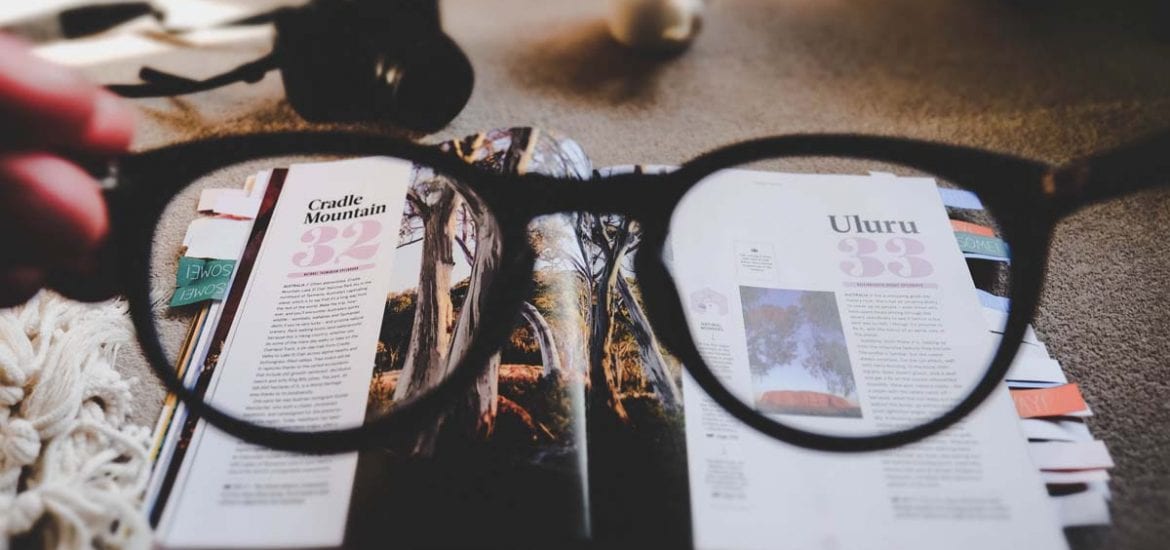
Please note, this post was updated in 2020 and I no longer update this website.
How often does this scenario play out in your classroom?
You want your students to go online and do some research for some sort of project, essay, story or presentation. Time ticks away, students are busy searching and clicking, but are they finding the useful and accurate information they need for their project?
We’re very fortunate that many classrooms are now well equipped with devices and the internet, so accessing the wealth of information online should be easier than ever, however, there are many obstacles.
Students (and teachers) need to navigate:
- What search terms to put into Google or other search engines
- What search results to click on and read through (while avoiding inappropriate or irrelevant sites or advertisements)
- How to determine what information is credible, relevant and student friendly
- How to process, synthesize, evaluate , and present the information
- How to compare a range of sources to evaluate their reliability and relevancy
- How to cite sources correctly
Phew! No wonder things often don’t turn out as expected when you tell your students to just “google” their topic. On top of these difficulties some students face other obstacles including: low literacy skills, limited internet access, language barriers, learning difficulties and disabilities.
All of the skills involved in online research can be said to come under the term of information literacy, which tends to fall under a broader umbrella term of digital literacy.
Being literate in this way is an essential life skill.
This post offers tips and suggestions on how to approach this big topic. You’ll learn a 5 step method to break down the research process into manageable chunks in the classroom. Scroll down to find a handy poster for your classroom too.
How to Teach Information Literacy and Online Research Skills
The topic of researching and filtering information can be broken down in so many ways but I believe the best approach involves:
- Starting young and building on skills
- Embedding explicit teaching and mini-lessons regularly (check out my 50 mini-lesson ideas here !)
- Providing lots of opportunity for practice and feedback
- Teachers seeking to improve their own skills — these free courses from Google might help
- Working with your librarian if you have one
💡 While teaching research skills is something that should be worked on throughout the year, I also like the idea of starting the year off strongly with a “Research Day” which is something 7th grade teacher Dan Gallagher wrote about . Dan and his colleagues had their students spend a day rotating around different activities to learn more about researching online. Something to think about!
Google or a Kid-friendly Search Engine?
If you teach young students you might be wondering what the best starting place is.
I’ve only ever used Google with students but I know many teachers like to start with search engines designed for children. If you’ve tried these search engines, I’d love you to add your thoughts in a comment.
💡 If you’re not using a kid-friendly search engine, definitely make sure SafeSearch is activated on Google or Bing. It’s not foolproof but it helps.
Two search engines designed for children that look particularly useful include:
These sites are powered by Google SafeSearch with some extra filtering/moderating.
KidzSearch contains additional features like videos and image sections to browse. While not necessarily a bad thing, I prefer the simple interface of Kiddle for beginners.
Read more about child-friendly search engines
This article from Naked Security provides a helpful overview of using child-friendly search engines like Kiddle.
To summarise their findings, search-engines like Kiddle can be useful but are not perfect.
For younger children who need to be online but are far too young to be left to their own devices, and for parents and educators that want little ones to easily avoid age-inappropriate content, these search engines are quite a handy tool. For older children, however, the results in these search engines may be too restrictive to be useful, and will likely only frustrate children to use other means.
Remember, these sorts of tools are not a replacement for education and supervision.
Maybe start with no search engine?
Another possible starting point for researching with young students is avoiding a search engine altogether.
Students could head straight to a site they’ve used before (or choose from a small number of teacher suggested sites). There’s a lot to be learned just from finding, filtering, and using information found on various websites.
Five Steps to Teaching Students How to Research Online and Filter Information
This five-step model might be a useful starting point for your students to consider every time they embark on some research.
Let’s break down each step. You can find a summary poster at the end.
Students first need to take a moment to consider what information they’re actually looking for in their searches.
It can be a worthwhile exercise to add this extra step in between giving a student a task (or choice of tasks) and sending them off to research.
You could have a class discussion or small group conferences on brainstorming keywords , considering synonyms or alternative phrases , generating questions etc. Mindmapping might help too.
2016 research by Morrison showed that 80% of students rarely or never made a list of possible search words. This may be a fairly easy habit to start with.
Time spent defining the task can lead to a more effective and streamlined research process.

It sounds simple but students need to know that the quality of the search terms they put in the Google search box will determine the quality of their results.
There are a LOT of tips and tricks for Googling but I think it’s best to have students first master the basics of doing a proper Google search.
I recommend consolidating these basics:
- Type in some simple search terms using only the important keywords
- If the initial results aren’t what you want, alter the search terms and get more specific (get clues from the initial search results e.g. you might see synonyms that would work or get ideas from the “People Also Ask” section)
- Use quotation marks if you want your keywords in an exact order, e.g. “raining cats and dogs”
- use your best guess with spelling (Google will often understand)
- don’t worry about punctuation
- understand that everyone’s results will be different , even if they use the same search terms (depending on browser history, location etc.)
📌 Get a free PDF of this poster here.
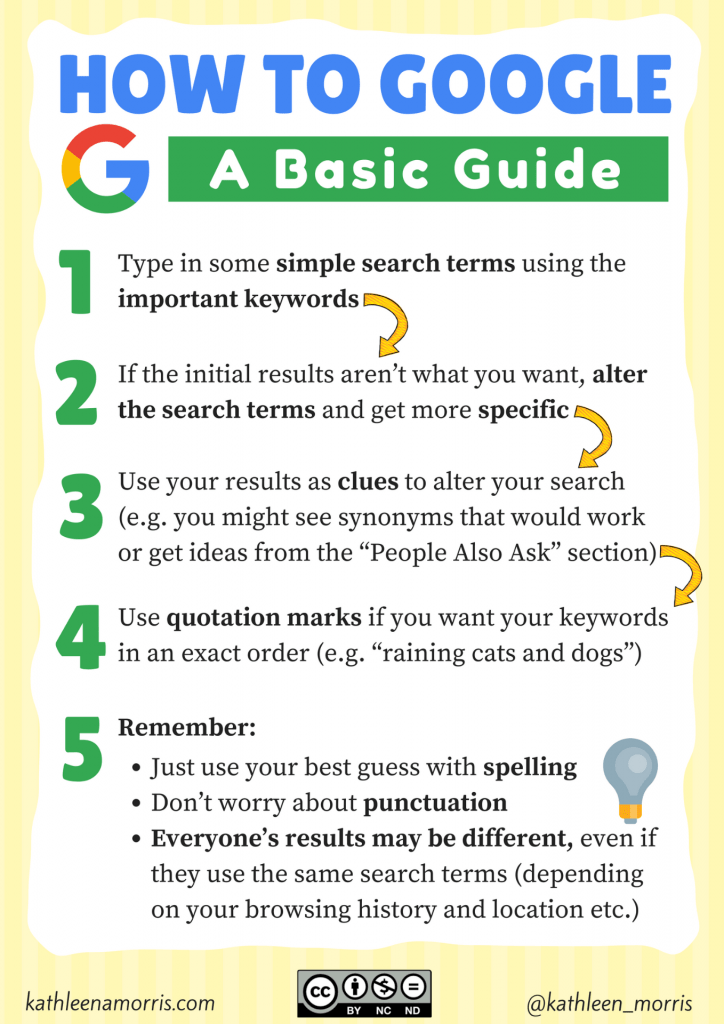
Links to learn more about Google searches
There’s lots you can learn about Google searches.
I highly recommend you take a look at 20 Instant Google Searches your Students Need to Know by Eric Curts to learn about “instant searches”.
Med Kharbach has also shared a simple visual with 12 search tips which would be really handy once students master the basics too.
The Google Search Education website is an amazing resource with lessons for beginner/intermediate/advanced plus slideshows and videos. It’s also home to the A Google A Day classroom challenges. The questions help older students learn about choosing keywords, deconstructing questions, and altering keywords.

Useful videos about Google searches
How search works.
This easy to understand video from Code.org to explains more about how search works.
How Does Google Know Everything About Me?
You might like to share this video with older students that explains how Google knows what you’re typing or thinking. Despite this algorithm, Google can’t necessarily know what you’re looking for if you’re not clear with your search terms.
What about when the answer comes up in Google instantly?
If you’ve been using Google for a while, you know they are tweaking the search formula so that more and more, an answer will show up within the Google search result itself. You won’t even need to click through to any websites.
For example, here I’ve asked when the Titanic sunk. I don’t need to go to any websites to find out. The answer is right there in front of me.
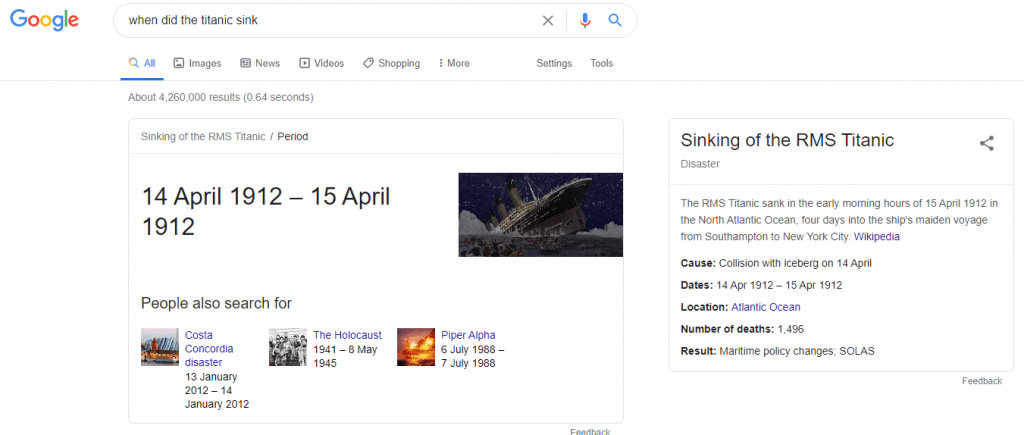
While instant searches and featured snippets are great and mean you can “get an answer” without leaving Google, students often don’t have the background knowledge to know if a result is incorrect or not. So double checking is always a good idea.
As students get older, they’ll be able to know when they can trust an answer and when double checking is needed.
Type in a subject like cats and you’ll be presented with information about the animals, sports teams, the musical along with a lot of advertising. There are a lot of topics where some background knowledge helps. And that can only be developed with time and age.
Entering quality search terms is one thing but knowing what to click on is another.
You might like to encourage students to look beyond the first few results. Let students know that Google’s PageRank algorithm is complex (as per the video above), and many websites use Search Engine Optimisation to improve the visibility of their pages in search results. That doesn’t necessarily mean they’re the most useful or relevant sites for you.
As pointed out in this article by Scientific American ,
Skilled searchers know that the ranking of results from a search engine is not a statement about objective truth, but about the best matching of the search query, term frequency, and the connectedness of web pages. Whether or not those results answer the searchers’ questions is still up for them to determine.
Point out the anatomy of a Google search result and ensure students know what all the components mean. This could be as part of a whole class discussion, or students could create their own annotations.
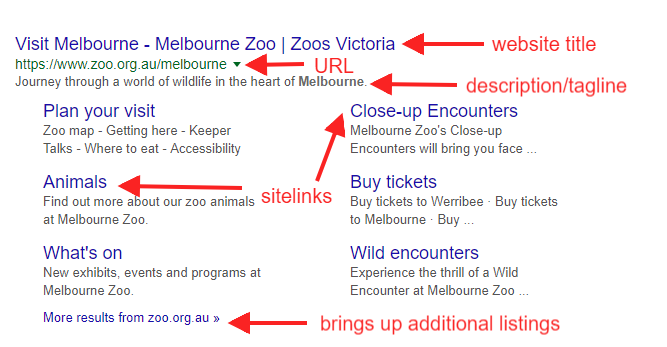
An important habit to get into is looking at the green URL and specifically the domain . Use some intuition to decide whether it seems reliable. Does the URL look like a well-known site? Is it a forum or opinion site? Is it an educational or government institution? Domains that include .gov or .edu might be more reliable sources.
When looking through possible results, you may want to teach students to open sites in new tabs, leaving their search results in a tab for easy access later (e.g. right-click on the title and click “Open link in new tab” or press Control/Command and click the link).
Searchers are often not skilled at identifying advertising within search results. A famous 2016 Stanford University study revealed that 82% of middle-schoolers couldn’t distinguish between an ad labelled “sponsored content” and a real news story.
Time spent identifying advertising within search results could help students become much more savvy searchers. Looking for the words “ad” and “sponsored” is a great place to start.
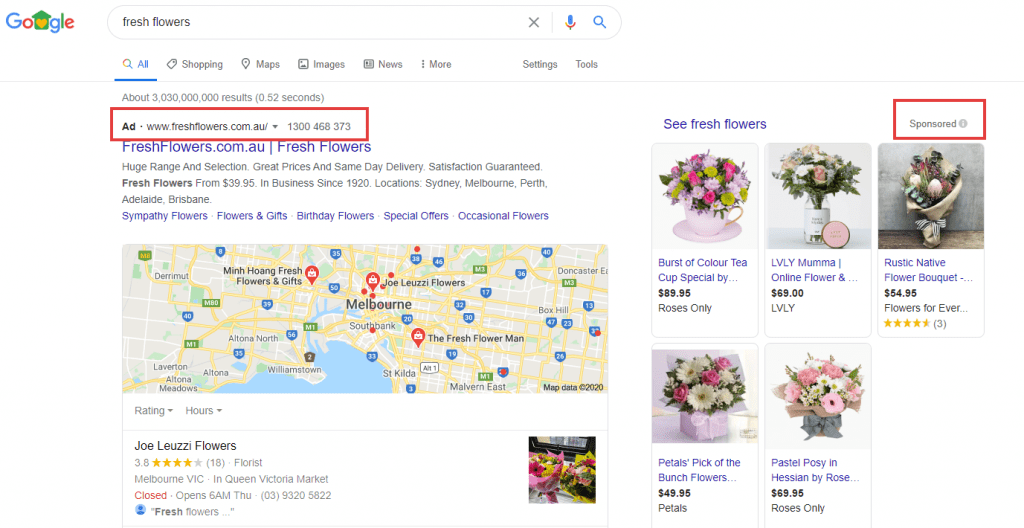
4) Evaluate
Once you click on a link and land on a site, how do you know if it offers the information you need?
Students need to know how to search for the specific information they’re after on a website. Teach students how to look for the search box on a webpage or use Control F (Command F on Mac) to bring up a search box that can scan the page.
Ensure students understand that you cannot believe everything you read . This might involve checking multiple sources. You might set up class guidelines that ask students to cross check their information on two or three different sites before assuming it’s accurate.
I’ve written a post all about teaching students how to evaluate websites . It includes this flowchart which you’re welcome to download and use in your classroom.
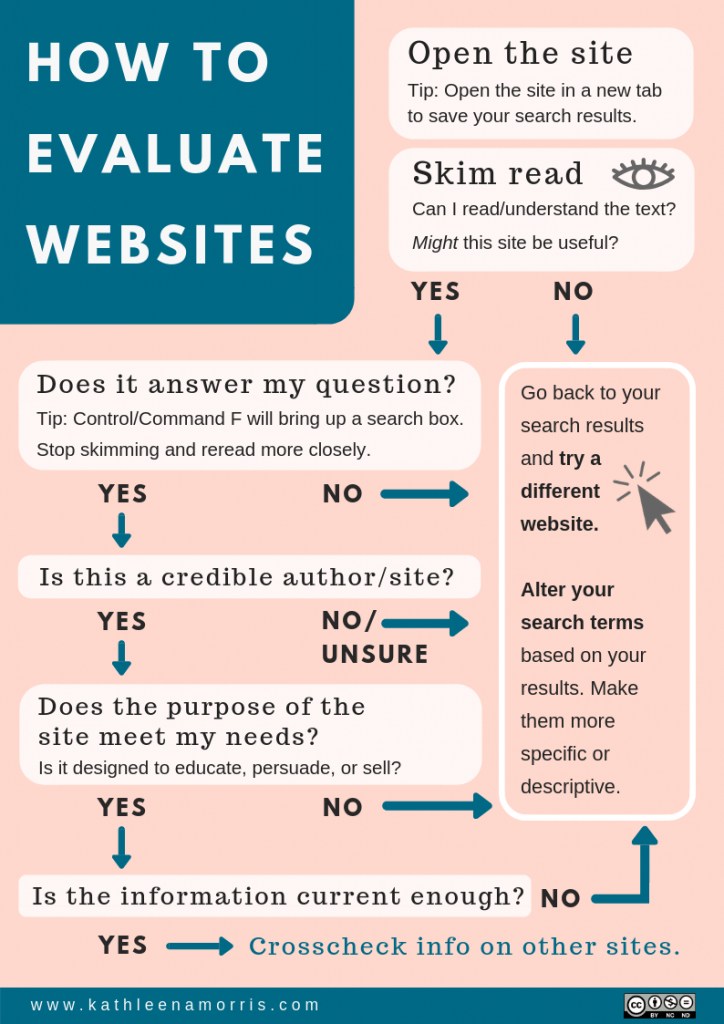
So your students navigated the obstacles of searching and finding information on quality websites. They’ve found what they need! Hooray.
Many students will instinctively want to copy and paste the information they find for their own work.
We need to inform students about plagiarism and copyright infringement while giving them the skills they need to avoid this.
- Students need to know that plagiarism is taking someone’s work and presenting it as your own. You could have a class discussion about the ethics and legalities of this.
- Students also need to be assured that they can use information from other sources and they should. They just need to say who wrote it, where it was from and so on.
All students can benefit from learning about plagiarism, copyright, how to write information in their own words, and how to acknowledge the source. However, the formality of this process will depend on your students’ age and your curriculum guidelines.
Give students lots of practice writing information in their own words. Younger students can benefit from simply putting stories or recounts in their own words. Older students could investigate the difference between paraphrasing and summarising .
There are some free online tools that summarise information for you. These aren’t perfect and aren’t a replacement from learning the skill but they could be handy for students to try out and evaluate. For example, students could try writing their own summary and then comparing it to a computer summary. I like the tool SMMRY as you can enter text or a URL of an article. Eric Curts shares a list of 7 summary tools in this blog post .
Students also need a lot of practice using quotation marks and citing sources .
The internet can offer a confusing web of information at times. Students need to be shown how to look for the primary source of information. For example, if they find information on Wikipedia, they need to cite from the bibliography at the bottom of the Wikipedia article, not Wikipedia itself.
There are many ways you can teach citation:
- I like Kathy Schrock’s PDF document which demonstrates how you can progressively teach citation from grades 1 to 6 (and beyond). It gives some clear examples that you could adapt for your own classroom use.
Staying organised!
You might also like to set up a system for students to organise their information while they’re searching. There are many apps and online tools to curate, annotate, and bookmark information, however, you could just set up a simple system like a Google Doc or Spreadsheet.
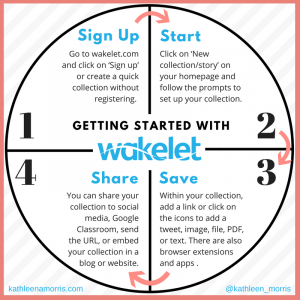
The format and function is simple and clear. This means students don’t have to put much thought into using and designing their collections. Instead, they can focus on the important curation process.
Bring These Ideas to Life With Mini-Lessons!
We know how important it is for students to have solid research skills. But how can you fit teaching research skills into a jam-packed curriculum? The answer may be … mini-lessons !
Whether you teach primary or secondary students, I’ve compiled 50 ideas for mini-lessons.
Try one a day or one a week and by the end of the school year, you might just be amazed at how independent your students are becoming with researching.
Become an Internet Search Master with This Google Slides Presentation
In early 2019, I was contacted by Noah King who is a teacher in Northern California.
Noah was teaching his students about my 5 step process outlined in this post and put together a Google Slides Presentation with elaboration and examples.
You’re welcome to use and adapt the Google Slides Presentation yourself. Find out exactly how to do this in this post.
The Presentation was designed for students around 10-11 years old but I think it could easily be adapted for different age groups.
Recap: How To Do Online Research
Despite many students being confident users of technology, they need to be taught how to find information online that’s relevant, factual, student-friendly, and safe.
Keep these six steps in mind whenever you need to do some online research:
- Clarify : What information are you looking for? Consider keywords, questions, synonyms, alternative phrases etc.
- Search : What are the best words you can type into the search engine to get the highest quality results?
- Delve : What search results should you click on and explore further?
- Evaluate : Once you click on a link and land on a site, how do you know if it offers the information you need?
- Cite : How can you write information in your own words (paraphrase or summarise), use direct quotes, and cite sources?
- Staying organised : How can you keep the valuable information you find online organised as you go through the research process?
Don’t forget to ask for help!
Lastly, remember to get help when you need it. If you’re lucky enough to have a teacher-librarian at your school, use them! They’re a wonderful resource.
If not, consult with other staff members, librarians at your local library, or members of your professional learning network. There are lots of people out there who are willing and able to help with research. You just need to ask!
Being able to research effectively is an essential skill for everyone . It’s only becoming more important as our world becomes increasingly information-saturated. Therefore, it’s definitely worth investing some classroom time in this topic.
Developing research skills doesn’t necessarily require a large chunk of time either. Integration is key and remember to fit in your mini-lessons . Model your own searches explicitly and talk out loud as you look things up.
When you’re modelling your research, go to some weak or fake websites and ask students to justify whether they think the site would be useful and reliable. Eric Curts has an excellent article where he shares four fake sites to help teach students about website evaluation. This would be a great place to start!
Introduce students to librarians ; they are a wonderful resource and often underutilised. It pays for students to know how they can collaborate with librarians for personalised help.
Finally, consider investing a little time in brushing up on research skills yourself . Everyone thinks they can “google” but many don’t realise they could do it even better (myself included!).
You Might Also Enjoy
Teaching Digital Citizenship: 10 Internet Safety Tips for Students
Free Images, Copyright, And Creative Commons: A Guide For Teachers And Students
8 Ways Teachers And Schools Can Communicate With Parents
How To Evaluate Websites: A Guide For Teachers And Students
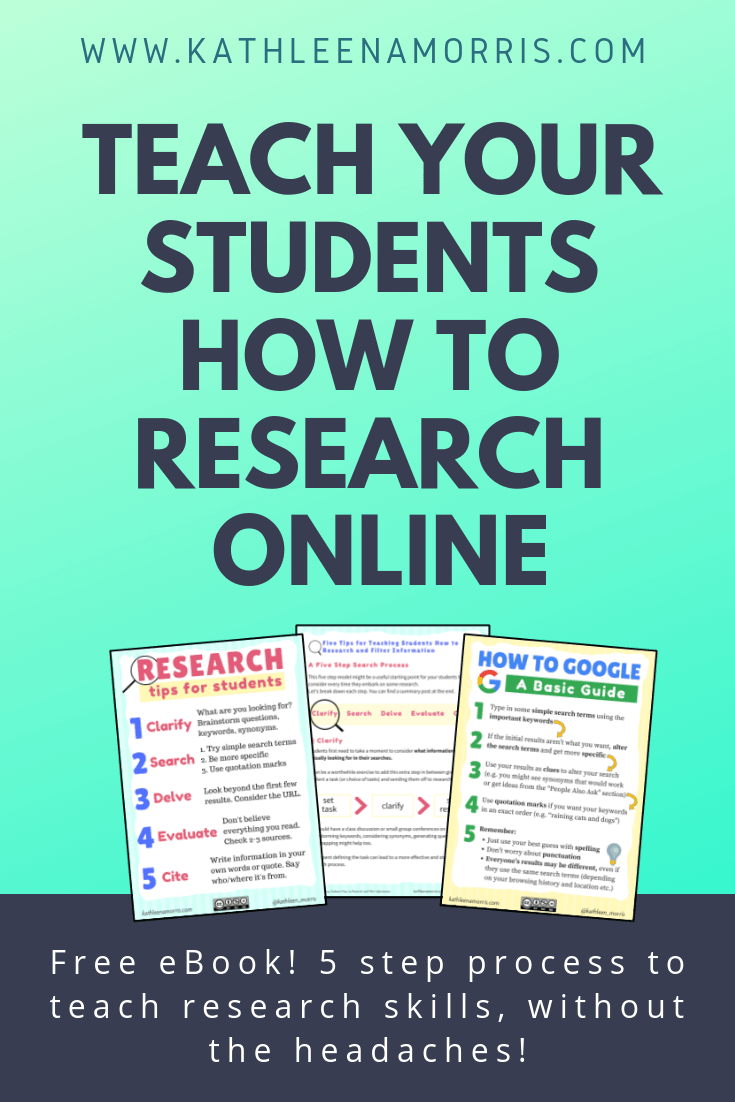
14 Replies to “How to Teach Online Research Skills to Students in 5 Steps (Free Posters)”
Kathleen, I like your point about opening up sites in new tabs. You might be interested in Mike Caulfield’s ‘four moves’ .
What a fabulous resource, Aaron. Thanks so much for sharing. This is definitely one that others should check out too. Even if teachers don’t use it with students (or are teaching young students), it could be a great source of learning for educators too.
This is great information and I found the safe search sites you provided a benefit for my children. I searched for other safe search sites and you may want to know about them. http://www.kids-search.com and http://www.safesearch.tips .
Hi Alice, great finds! Thanks so much for sharing. I like the simple interface. It’s probably a good thing there are ads at the top of the listing too. It’s an important skill for students to learn how to distinguish these. 🙂
Great website! Really useful info 🙂
I really appreciate this blog post! Teaching digital literacy can be a struggle. This topic is great for teachers, like me, who need guidance in effectively scaffolding for scholars who to use the internet to gain information.
So glad to hear it was helpful, Shasta! Good luck teaching digital literacy!
Why teachers stopped investing in themselves! Thanks a lot for the article, but this is the question I’m asking myself after all teachers referring to google as if it has everything you need ! Why it has to come from you and not the whole education system! Why it’s an option? As you said smaller children don’t need search engine in the first place! I totally agree, and I’m soo disappointed how schooling system is careless toward digital harms , the very least it’s waste of the time of my child and the most being exposed to all rubbish on the websites. I’m really disappointed that most teachers are not thinking taking care of their reputation when it comes to digital learning. Ok using you tube at school as material it’s ok , but why can’t you pay little extra to avoid adverts while teaching your children! Saving paper created mountains of electronic-toxic waste all over the world! What a degradation of education.
Thanks for sharing your thoughts, Shohida. I disagree that all schooling systems are careless towards ‘digital harms’, however, I do feel like more digital citizenship education is always important!
Hi Kathleen, I love your How to Evaluate Websites Flow Chart! I was wondering if I could have permission to have it translated into Spanish. I would like to add it to a Digital Research Toolkit that I have created for students.
Thank you! Kristen
Hi Kristen, You’re welcome to translate it! Please just leave the original attribution to my site on there. 🙂 Thanks so much for asking. I really hope it’s useful to your students! Kathleen
[…] matter how old your child is, there are many ways for them to do research into their question. For very young children, you’ll need to do the online research work. Take your time with […]
[…] digs deep into how teachers can guide students through responsible research practices on her blog (2019). She suggests a 5 step model for elementary students on how to do online […]
Writing lesson plans on the fly outside of my usual knowledge base (COVID taken down so many teachers!) and this info is precisely what I needed! Thanks!!!
Comments are closed.

There is a consensus that a hands-on approach to teaching science helps students learn better. 1,2 But how much do teaching labs reflect what scientists do every day? Many teaching labs have recipe-like directions with a known output. This is great for teaching methods and concepts, and fits well into class time. Students can, however, distinguish “school science” of rote experiments from real science where the results are unknown. 3,4 Authentic science engages students by not using a recipe, forcing them to plan, think critically, and analyze data in a way that many instructional labs do not. Students find unexpected hurdles and learn that results are sometimes not as expected, but find themselves inspired because they have learned persistence, critical thinking, and the truth that answers in science always produce more questions. A retrospective study found students exposed to scientific research in high school are more likely to have and keep a STEM career than those who do not experience research until college. 5
As the Senior Scientist for the New Hampshire Academy of Science (NHAS), I manage a STEM lab that operates solely for middle and high school students and teachers. The NHAS is a nonprofit state academy affiliated with the American Association for the Advancement of Science (AAAS). We support all facets of STEM, although many of our projects have been in biology (thankfully, for this cell biologist). In summer and after-school programs, we enable students to explore novel research questions, guiding them through literature searches to formulate testable hypotheses, experimental design, data analysis, and presentation of results.
A Lab with a Twist Our lab is run like a graduate research lab with a twist. Because students pursue individual interests, the range of topics became quite broad. As the program has grown, we have started establishing topic areas with available projects both to help students focus and to help us keep up as mentors. Since each project is unique in its techniques and hurdles, it can be difficult to assess progress (like grad school). Students take a multiple-choice quiz upon entering and leaving the program to assess competence in statistics, equipment, unit measurements, etc., so we can get a sense of knowledge gained, and surveys gather information about how we can improve. We track students through school and help them prepare for their next steps.
As expected, projects undertaken by sixth graders are simpler and more observational than projects pursued by high schoolers. All students go through initial safety, instrument, and ethics training. Communication and collaboration are also emphasized. We start most days with a roundtable lab meeting to discuss progress and troubles. Our lab has a hierarchy of experience seen in many research labs that enables newer students to learn from those who have used techniques before and the experienced students to reinforce their knowledge by teaching.
At the end of each research program, students present findings to their peers and a panel of local experts. Any student who makes substantial progress in his or her work submits a summary paper for NHAS peer review. If approved, students can submit an abstract for the AAAS annual meeting. There, students present posters, are inducted into the Junior Academy, and are introduced to the wider scientific community. Peer review, presentations, and publications (even at the level of an AAAS abstract) are milestones. We focus on the scientific merit of the experimental process, even if the result is negative. This is another valuable lesson that research instills: You will sometimes fail. It is how you continue on that is important.
Training Teachers, Too Last year, we piloted a program to train local teachers to bring this type of science education to their institutions. Teachers got a crash course in research techniques and the types of questions those techniques could answer. Afterwards, they returned to their school as research mentors with ongoing equipment and scientific support from the NHAS. This produced independent study programs at two high schools and a lab program at a museum. The teachers have reached out to local experts for additional support and we started a database of mentors for students and teachers. Going forward, we will provide teachers with a project that they can take with them (like postdocs leaving a lab).
The shift from recipe-based teaching to true experiment-based science is not easy. Even in the best of circumstances and with robust support, research is challenging. It asks more of teachers than we already ask, both time-wise and intellectually. Teachers must move from their comfort zones as distributors of knowledge to become collaborators in the scientific process. 6,7 It requires access to equipment and extensive background knowledge and/or the advice of STEM professionals to ensure projects are attainable.
The NHAS’s guiding light is the understanding that students should be encouraged in their curiosity and know how to pursue questions in a scientific manner, whether they intend to go to college or not, and whether they intend to pursue STEM or not. Though we do want more people in STEM careers, it is also important that all citizens are scientifically literate, thinking critically and seeking out factual sources. Regardless of his or her career path, every person should be trained as a scientist, and hands-on research is the way to make that happen.
References 1 National Research Council (2012). Discipline-Based Education Research: Understanding and Improving Learning in Undergraduate Science and Engineering . Washington, DC: The National Academies Press. 2 National Research Council (2007). Taking Science to School: Learning and Teaching Science in Grades K-8 . Washington, DC: The National Academies Press. 3 Archer L et al. (2010). “Doing” science versus “being” a scientist: Examining 10/11-year-old schoolchildren’s constructions of science through the lens of identity. Science Education , 94, 617–639. 4 Zhai J, Jocz JA, Tan A-L (2014). “Am I like a scientist?” Primary children’s image of doing science in school. International Journal of Science Education 36, 553–576. 5 Roberts LF, Wassersug RJ (2009). Does doing scientific research in high school correlate with students staying in science? A half-century retrospective study. Research in Science Education , 39, 251–256. 6 Anderson RD (2002). Reforming science teaching: What research says about inquiry. Journal of Science Teacher Education , 13, 1–12. 7 Crawford BA (2007). Learning to teach science as inquiry in the rough and tumble of practice. Journal of Research in Science Teaching 44, 613–642.
About the Author:
Recommended articles.
No related posts.
STEM Teaching Resources
The free STEM education materials (grades pre-K through 12) on this site are provided by the institutes and centers within the National Institutes of Health (NIH) and NIH grantees, including Science Education Partnership Award (SEPA) recipients. This site is managed by the National Institute of General Medical Science (NIGMS) . Please contact us with any questions or comments.
The external links from this site provide additional information on the resources. NIGMS cannot attest to the accuracy or accessibility of a nonfederal site.
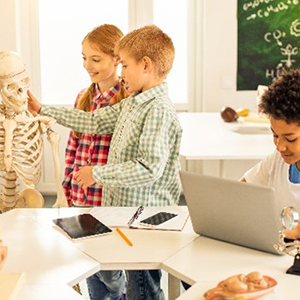

The Human Body: Body, Joints, Muscles, and Skin
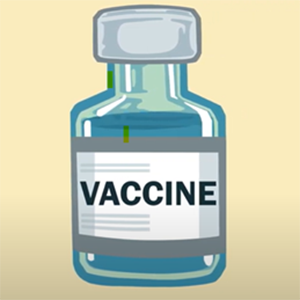
What's In a Vaccine?

Biomedical Engineering Adapted for Middle Schoolers (BEAMS) Lesson Plans
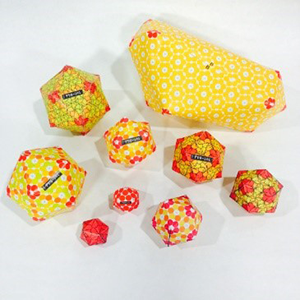
Protein Data Bank (PDB)-101 Origami Paper Models
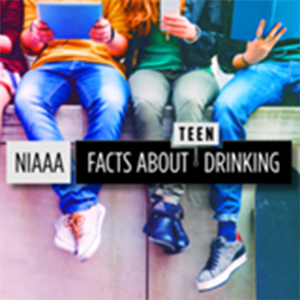
NIAAA Facts About Teen Drinking
Back To Categories

Advancing Secondary Science Education through Tetrahymena (ASSET)
ASSET provides education materials that stimulate hands-on, inquiry-based learning of biology. Each lab module features living Tetrahymena, a single-celled protozoan that’s safe and easy to grow and work with. Students cultivate samples of this organism in lab exercises to learn about topics such as chemotaxis, microevolution, organelle growth and regeneration , and effects of vaping . Downloadable teacher guides and student activity sheets are also available.
Grades: Elementary through high school Produced by: Cornell University ( SEPA funded)
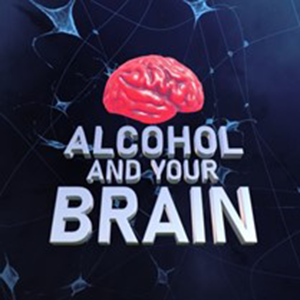
Alcohol and Your Brain: A Virtual Reality Experience
This immersive interactive teaches teens about alcohol’s effects on five areas of the human brain. It simulates a rollercoaster ride weaving and bobbing its way through the prefrontal cortex, nucleus accumbens, amygdala, hippocampus, and cerebellum. Students can control the rail car and pause at stations to learn about these key brain regions affected by alcohol—and how the substance, in turn, affects behavior. Educators and students can access Alcohol and Your Brain in two ways: 1.) a free virtual reality (VR) version for those ages 13+ with access to Quest, Quest 2, or Meta Quest Pro VR headsets, or 2.) a free video or audio-described version.
Grades: Middle and high school Produced by: National Institutes on Alcohol Abuse and Alcoholism

Alzheimer’s and Aging Resources for Students
This webpage provides easy-to-read materials, articles, and fact sheets on Alzheimer’s and related dementias, and on caregiving, aging, and issues related to older adults. Visitors can also learn about internships at the National Institute on Aging and NIH.
Grades: High school Produced by: National Institute on Aging
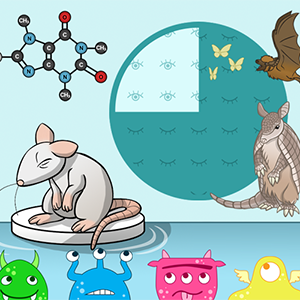
BiblioTech CityHacks: In Search of Sleep
How much sleep should you get? What happens when you're sleeping? What happens if you don't get enough sleep? In this interactive reading experience about sleep, circadian rhythms, and health, students help a young girl answer these questions so she can convince her mom to let her stay up late for CityHacks, a cool coding club that she wants to join. See other sleep curriculum from The Partnership in Education.
Grades: 4-6 Produced by: The Partnership in Education , Duquesne University ( SEPA funded)
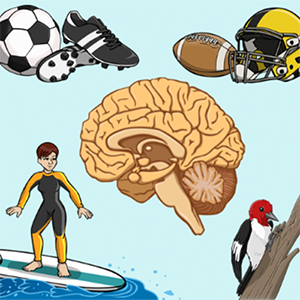
BiblioTech REBOUND: Beating Concussions
In this interactive reading experience about concussions, sports, and brain health, students travel along as a BMX-rider uncovers the truth about concussions to help his twin sister get back on the basketball court.
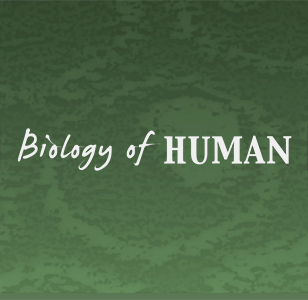
Biology of Human
Biology of Human helps students and the public better understand advances in biomedical research relating to human biology. This program seeks to increase awareness of and interest in new biomedical research developments, and their importance to people's health and communities. Resources include comic books , activities , lessons , and other curricula with accompanying teaching guides, videos, and additional learning materials.
Grades: Middle and high school Produced by: University of Nebraska, Lincoln ( SEPA funded)
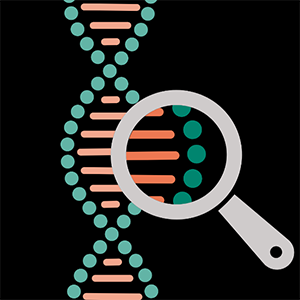
Biomedical Beat Educator's Corner: Genetics Miniseries
This Biomedical Beat miniseries explores the field of genetics—from how people inherit genes to how researchers study them. Students learn about different parts of genetics by reading the blog posts and discussing, applying, and quizzing what they learn through the activities outlined in the Educator’s Corner.
Grades: High school Produced by: National Institute of General Medical Sciences
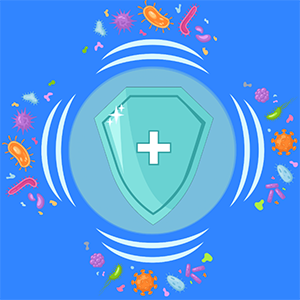
Biomedical Beat Educator's Corner: Immunology Miniseries
This Biomedical Beat miniseries explores the immune system, which protects the body from microbes that could cause infection. Students learn about different areas of immunology by reading the blog posts and discussing, applying, and quizzing what they learn through the activities outlined in the Educator’s Corner.
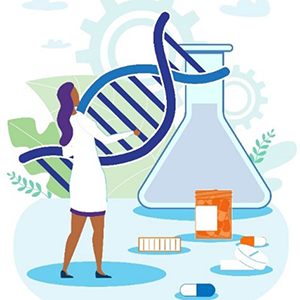
Biomedical Beat Educator's Corner: Pharmacology Miniseries
This Biomedical Beat miniseries looks at the important field of pharmacology: a research-based science and the study of how molecules, such as medicines, interact with the body. Students learn about different areas of the field by reading the blog posts and discussing, applying, and quizzing what they learn through the activities outlined in the Educator’s Corner.
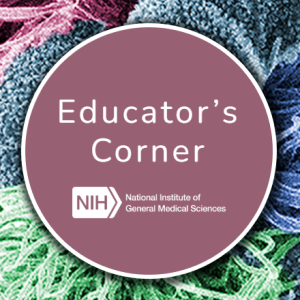
Biomedical Beat Educator’s Corner
With this free resource, educators can build on existing NIH STEM content through the integration of supplemental material in Biomedical Beat blog posts. The Educator’s Corner is intended to give teachers additional tools to use in lesson plans.
Grades: Middle and high school Produced by: National Institute of General Medical Sciences
These lesson plans for middle school provide students with hands-on activities that focus on biomedical engineering approaches to address health care problems. Lesson topics include nanoparticles for drug delivery, DNA and gene editing, surgical robots, and biomaterials.
Grades: 6-8 Produced by: National Institute of Biomedical Imaging and Bioengineering
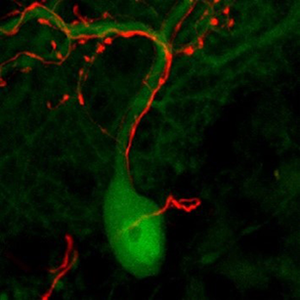
BrainU: Neuroscience Resources
Students learn neuroscience concepts with materials that include lesson plans, handouts, activities, and videos. Lesson support and other teacher resources are also provided.
Grades: Elementary through high school Produced by: University of Minnesota Twin Cities ( SEPA funded)
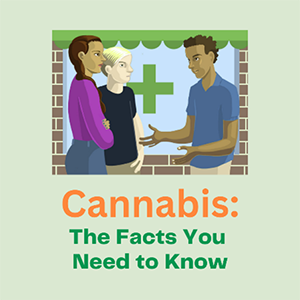
Cannabis: The Facts You Need to Know
This curriculum informs students about cannabis, including an explanation of CBD (cannabidiol) and the short- and long-term health effects of cannabis use, such as memory problems and addiction. Materials include a student article, lesson plan, teacher’s guide, and interactive.
Grades: 6-12 Produced by: National Institute on Drug Abuse and Scholastic, Inc.
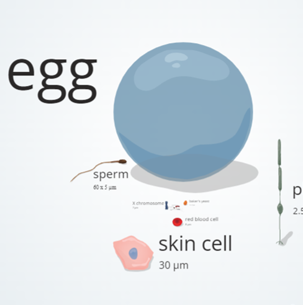
Cell Size and Scale
This interactive from Learn.Genetics helps put the size of many biological structures in context. Students can zoom in from the scale of a coffee bean all the way down to a carbon atom. Along the way, they also see bacteria, a range of human cells, a chromosome, a flu virus, and more.
Grades: Middle and high school Produced by: Genetic Science Learning Center, University of Utah ( SEPA funded)
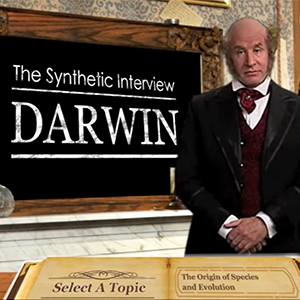
Charles Darwin Synthetic Review
In this free interactive experience , students learn about Charles Darwin, the naturalist, geologist, and leading contributor to the fundamental principles of evolution. Students select from a list of questions to ask a virtual Darwin and receive insight into various topics. See other evolution curriculum from The Partnership in Education.
Grades: Middle school through grade 9 Produced by: The Partnership in Education , Duquesne University ( SEPA funded)
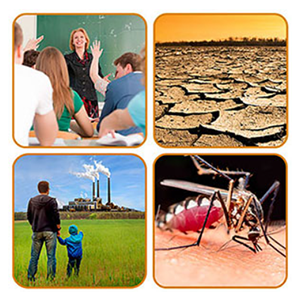
Climate Change and Human Health Lesson Plans
These climate and health learning modules are for a variety of student audiences to explore the health impacts of climate change both in the United States and globally. Materials are suitable to teach high school courses on earth, life, and environmental sciences; history; geography; health care; or social studies. The lesson plans challenge students to consider the complex interactions between environmental health and human health and encourages them to improve their communities and design interventions to enhance climate resilience. Students also learn more about disease prevention, such as how to eliminate breeding sites for mosquitoes and how vectors—and the health risks they present in their community—may change as the climate does. Some lessons are also available in Spanish .
Grades: High school Produced by: National Institute of Environmental and Health Sciences
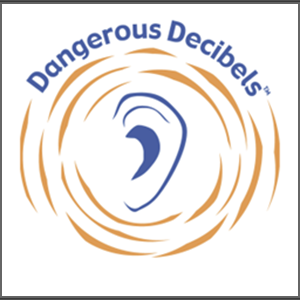
Dangerous Decibels Educator Resource Guide
This guide provides background information, hands-on activities, and experiments that educators can use to teach students about noise-induced hearing loss (NIHL) and tinnitus (ringing in the ear). Activities cover the anatomy and physiology of the ear and the mechanics of hearing, the physics of sound, and ways to prevent NIHL.
Grades: Elementary through high school Produced by: Oregon Museum of Science and Industry ( SEPA funded)
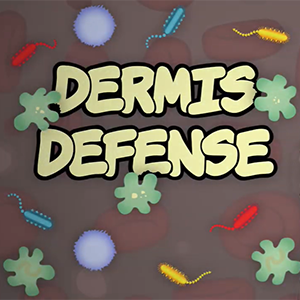
Dermis Defense Game
Players of this interactive follow a typical teen named Benji to help him beat his acne breakouts and learn about the immune system. Features include colorful, comic-style storytelling; scientific content about the immune system and its functions; challenging and fun gameplay; and links to supplementary reading materials about the immune system.
Grades: Middle and high school Produced by: The Partnership in Education , Duquesne University ( SEPA funded)
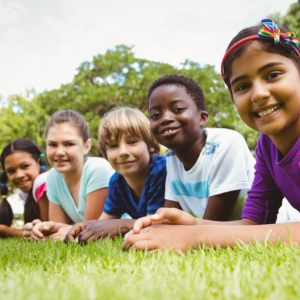
Digital Shareables on Child and Adolescent Mental Health
Educators and others can use these resources to raise awareness about the importance of child and adolescent mental health. They include social media graphics/messages, videos, and educational materials.
Grades: Elementary through high school Produced by: National Institute of Mental Health
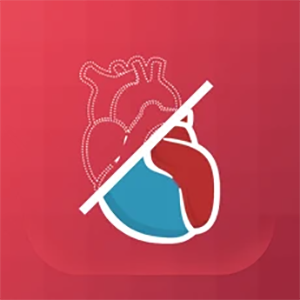
DIY Human Body
Families and educators investigate and learn about the human body at home, at school, or anywhere with 13 easy-to-use, hands-on activities , plus videos and more. This resource is from the Lawrence Hall of Science project and is available in English and Spanish.
Grades: Elementary and middle school Produced by: University of California, Berkeley, Lawrence Hall of Science, in partnership with University of California, San Francisco, Benioff Children’s Hospital ( SEPA funded)
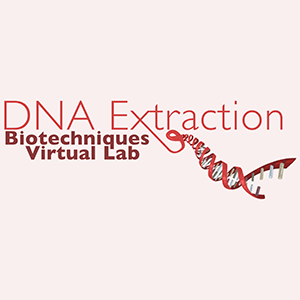
DNA Extraction
In this virtual laboratory from Learn.Genetics , students learn about some uses of DNA extraction. They also perform a cheek swab and extract DNA from human cells.
Grades: High school Produced by: Genetic Science Learning Center, University of Utah ( SEPA funded)
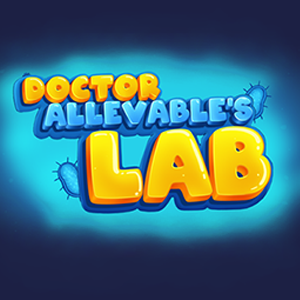
Dr. Allevable’s Lab
This mobile app for iOS and Android devices provides games that explore topics related to regenerative medicine. Students become super scientists who learn about topics such as stem cells, growth factors, and regenerative medicine technologies. Students can also check out Dr. Allevable's laboratory and meet her friend Regenerobot in animated videos.
Grades: 5-9 Produced by: The Partnership in Education, Duquesne University ( SEPA funded)
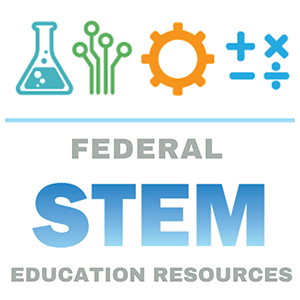
Federal Partner Resources
In addition to NIH, many federal agencies provide STEM education resources. Check out the offerings our federal partners, such as NASA, NOAA, the Smithsonian Institute, and more.
Grades: Elementary through high school Produced by: U.S. Federal Government
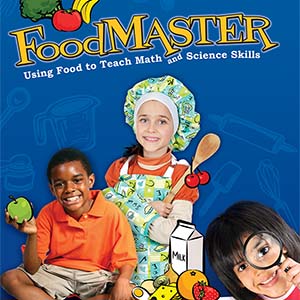
FoodMASTER ( F ood, M ath, and S cience T eaching E nhancement R esource) is a compilation of hands-on and virtual programs that use food to teach math and science skills. Subjects include biology, chemistry, microbiology, nutrition, and health, as well as math concepts such as numbers and operations, algebra, geometry, and problem-solving.
Grades: Elementary through high school Produced by: Northern Illinois University ( SEPA funded)

This reading resource introduces the subject of genetics, including details about scientist Gregor Mendel’s work, an overview of DNA, videos on Punnett squares, and illustrative examples of pedigree charts.
Grades: High school Produced by: The Partnership in Education , Duquesne University ( SEPA funded)
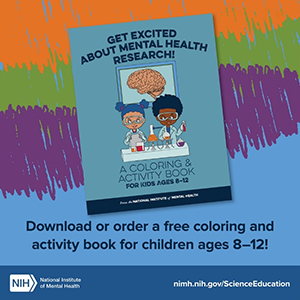
Get Excited About Mental Health Research! Coloring and Activity Book
This printable coloring and activity book for children ages 8 through 12 provides information about types of mental health research, the process for conducting research, and paths to becoming a mental health researcher.
Grades: 3-7 Produced by: National Institute of Mental Health
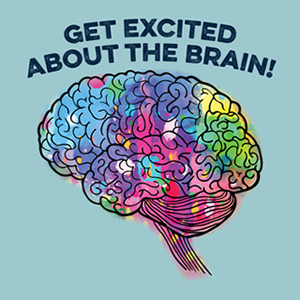
Get Excited About the Brain!
This science education activity book helps kids learn facts about the brain through games and puzzles about brain science and research.
Grades: Elementary and middle school Produced by: National Institute of Mental Health
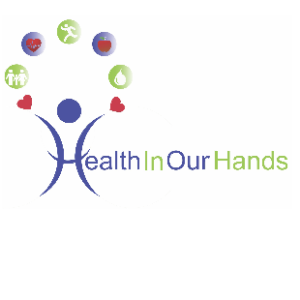
Health In Our Hands Curriculum
Health in Our Hands teaches students to investigate critical community health concerns and use real-world contexts to appreciate the importance of both genetic and environmental factors in their risk for disease. The middle school curriculum consists of two units that focus on gene-environment interactions and natural selection through two subjects: Type 2 diabetes and substance use disorder. The high school curriculum consists of two units that focus on concepts in molecular genetics, genomics, and evolution through exploring variation in monkeyflowers and in skin color, among other topics related to human health.
Grades: Middle and high school Produced by: Create for STEM Institute at Michigan State University in collaboration with the Health in Our Hands-Flint/Genesee Partnership ( SEPA funded)
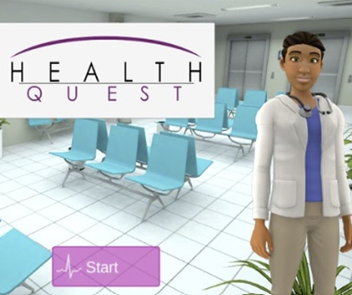
Health Quest
Health Quest focuses on engaging student interest in health science careers. Middle school students learn about various career paths through career videos and role model interviews from biomedical, behavioral, and clinical research health professionals. The program also includes a narrative-driven health sciences adventure game , where students choose a science field and then embark on a mission to help solve a scientific problem or answer a critical research question. Teachers can request the tools and resources needed to implement Health Quest in their classrooms.
Grades: Middle school Produced by: North Carolina State University and University of California San Francisco ( SEPA funded)
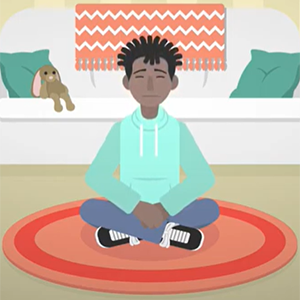
Heartbeat: A Mindfulness Exercise to Calm Your Emotions
This mindfulness exercise video can help to calm overwhelming emotions and the racing heartbeat associated with them. The activity doesn't require any materials and takes just a few minutes for students to complete.
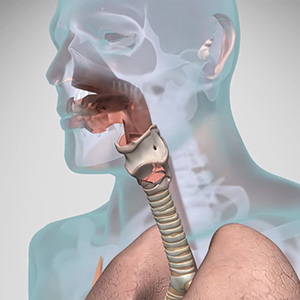
How Does the Human Body Produce Voice and Speech?
How do we produce voice and speech? This animated video explains the processes of breathing, voicing, and speaking. It shows the sequential movements within the body that allow us to create voice and speech, starting with breathing.
Grades: 9-12 Produced by: National Institute on Deafness and Other Communication Disorders
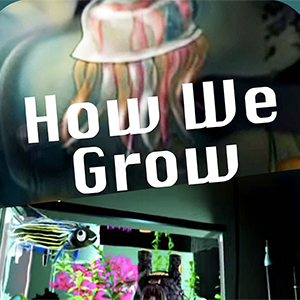
How We Grow
Students learn about how different living things grow and develop through the story of a student who has to write an essay for his science class. The essay is on growth and development, but he just doesn’t understand what’s interesting about how we grow. That is, until his room starts to come to life. See other cell and growth curriculum from The Partnership in Education.
Grades: 5-8 Produced by: The Partnership in Education , Duquesne University ( SEPA funded)
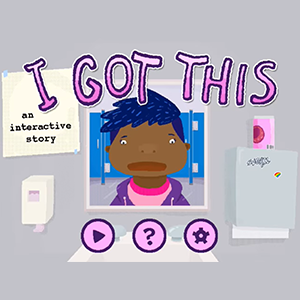
This interactive, first-person, educational story from Lawrence Hall of Science follows a young teenage girl who discovers that she has type 2 diabetes. Told in a real-world setting, this app focuses on the symptoms, remediation, and social aspects of the disease.
Grades: Elementary and middle school Produced by: University of California, Berkeley, Lawrence Hall of Science, in partnership with University of California, San Francisco, Benioff Children’s Hospital ( SEPA fund
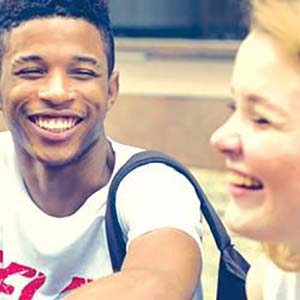
Is This Legit? Accessing Valid and Reliable Health Information
Health literacy can play a role in how teens interpret messages about alcohol and other substances, and can shape their expectations about what may happen if they consume drugs and alcohol. This new lesson plan helps high school students apply skills in analyzing, evaluating, and comparing different sources of health information to empower them to reject misinformation and make choices to access content that is evidence-based and supports their overall health and well-being.
Grades: High school Produced by: National Institute on Drug Abuse
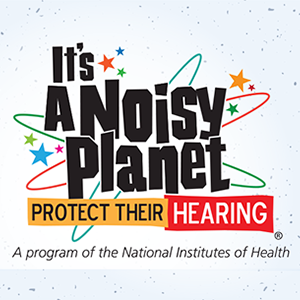
It’s a Noisy Planet. Protect Their Hearing.
The Noisy Planet’s teacher toolkit helps educators teach preteens about the causes and prevention of noise-induced hearing loss. It provides easy-to-use resources and step-by-step instructions for fun activities. This toolkit builds on the success of the Noisy Planet team’s classroom presentations at Washington, D.C., metropolitan area schools and offers key resources and tools to teachers, school nurses, and other educators across the country.
Grades: Middle school Produced by: National Institute on Deafness and Other Communication Disorders
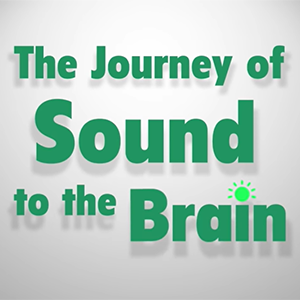
Journey of Sound to the Brain
How does our sense of hearing work? Travel to the tune of a trumpet and explore sound’s journey through the ear and to the brain. The Journey of Sound to the Brain video provides a step-by-step explanation of the complex hearing process, which involves many parts of the ear working together to convert sound waves into information the brain understands and interprets as sounds.
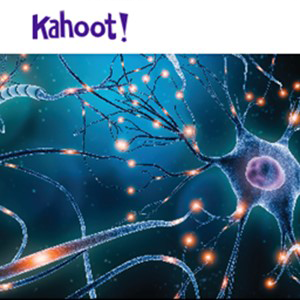
Kahoot! Quizzes
These quizzes engage students in fun and interactive competition as they learn about various science-related subjects. Topics include circadian rhythms, superbugs, and the science of drug addiction. (Note: To access the quizzes, create a free account and log in. Then go directly to the NIH Kahoot! content .)
Grades: Elementary through high school Produced by: National Institutes of Health

Kids Environment. Kids Health.
This resource is intended for kids, parents, and teachers to find fun and educational materials related to health, science, and the environment we live in today.
Grades: Elementary through high school Produced by: National Institute of Environmental and Health Sciences
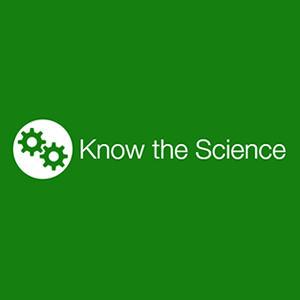
Know the Science
Why is it important to know the science of health? Simply put, there’s a lot of misinformation out there—from anecdotes disguised as evidence and excessive claims from supplement companies to TV doctors touting the latest "miracle cure." Know the Science provides tools to help people better understand complex scientific topics that relate to health research so they can discern what they hear and read and make well-informed decisions about their health. Know the Science features a variety of materials including interactive modules, quizzes, and videos that provide engaging, straightforward content. Available in Spanish .
Grades: High school Produced by: National Center for Complementary and Integrative Health
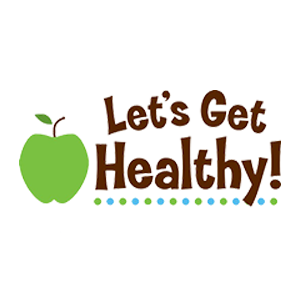
Let's Get Healthy!
Let's Get Healthy! provides teachers and students with online access to community-specific research data generated from an education and research exhibit. These teaching resources explore different aspects of healthy choices, chronic diseases, advocacy, epigenetics, research ethics, and development, among other subjects.
Grades: Elementary through high school with a focus on middle school Produced by: Oregon Health & Science University ( SEPA funded)
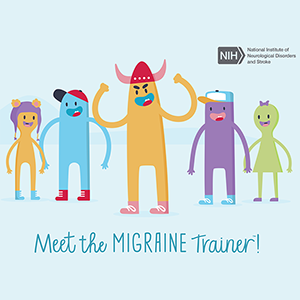
Migraine Trainer App
Migraine Trainer [PDF] is an app designed to help users ages 13+ understand possible causes of their migraines, and take a greater role in their treatment by creating an individual migraine management plan with their parents and medical team.
Grades: Middle and high school Produced by: National Institute of Neurological Disorders and Stroke
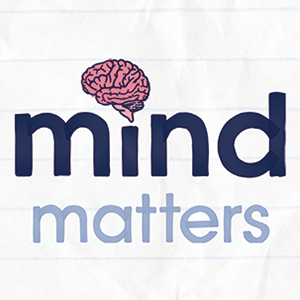
Mind Matters Series
This series includes 9 booklets, each devoted to a specific drug or drug group. Free hard copies of the booklets in English are available for order, and both English and Spanish booklets are provided online as printable PDFs. The accompanying teacher’s guide , which includes background information and activities to enhance student learning, is also online in a printable PDF format.
Grades: 5-8 Produced by: National Institute on Drug Abuse
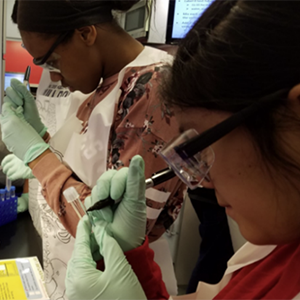
Mobile Lab Experiences and TRIPs (Teacher-Research Institute Partnerships)
This project creates innovative science curriculum focused on epidemiology and infectious diseases. Several formats of the Investigations in Infectious Disease curriculum are available in varying lengths to provide teaching flexibility. Each version includes teacher and student manuals, videos, and readings as appropriate. Educators must submit a request form to access the curriculum.
Grades: 7-9 Produced by: Seattle Children’s Research Institute ( SEPA funded)
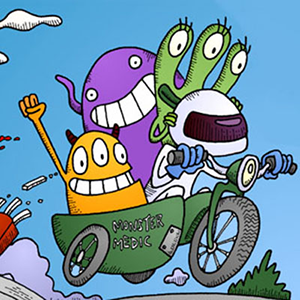
Monster Heart Medic
In this educational adventure from the Lawrence Hall of Science project, students explore the cardiovascular system and how healthy living affects it. They help diagnose a friendly, three-eyed monster and assist him on his path to a healthier life. Available in English and Spanish.
Grades: Elementary and middle school Produced by: University of California, Berkeley, Lawrence Hall of Science, in partnership with University of California, San Francisco, Benioff Children’s Hospital ( SEPA funded)
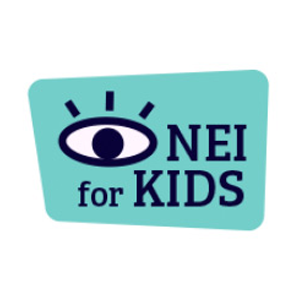
NEI for Kids
This web portal teaches kids about how their eyes work and how to keep them healthy, plus lots of fun eye facts.
Grades: Elementary through high school Produced by: National Eye Institute (NEI)
This resource is designed for teens and contains research-based information about how alcohol affects their health, including both short-and long-term effects; how to identify signs of a problem with alcohol; and how to get help. Educators and parents can use this website to share important information about alcohol with their students or young family members.
Grades: Middle and high school Produced by: National Institute on Alcohol Abuse and Alcoholism (NIAAA)
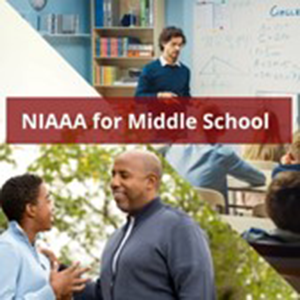
NIAAA for Middle School
This webpage contains resources and activities to help parents, caregivers, and teachers of middle school students introduce and reinforce key messages about peer pressure, resistance skills, and other important topics related to underage drinking.
Grades: 6-8 Produced by: National Institute on Alcohol Abuse and Alcoholism (NIAAA)
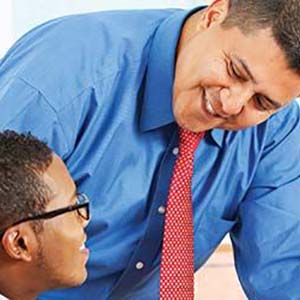
NIDA Lesson Plan and Activity Finder Database
Search for free lessons and activities on the science and consequences of drug use. All lessons are based on national science education standards and were developed by scientists from leading universities and the National Institute on Drug Abuse (NIDA).
Grades: Elementary through high school Produced by: National Institute on Drug Abuse
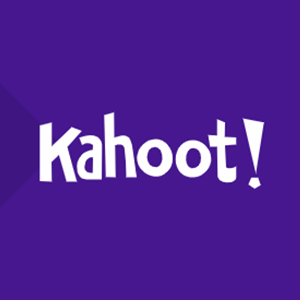
NIDA National Drug & Alcohol IQ Challenge Kahoot!
Test teens' knowledge about drugs and drug use by taking the NIDA National Drug & Alcohol IQ Challenge Kahoot!
Grades: High school Produced by: National Institute on Drug Abuse (NIDA)
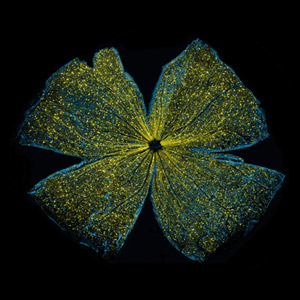
NIGMS Science Education Resources
In addition to our curriculum materials, NIGMS has a variety of science education resources, including an image and video gallery with free-to-use scientific photos, illustrations, and videos along with corresponding descriptions; a glossary with easy-to-understand definitions for terms commonly used in basic biomedical research; a protein alphabet where students can write their names using protein alphabet letters; printable coloring pages about cells and research organisms; and much more.
Grades: Elementary through high school Produced by: National Institute of General Medical Sciences
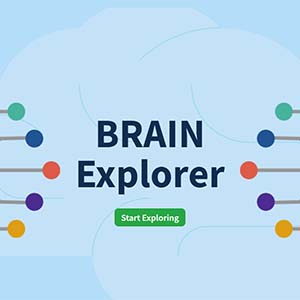
NIH BRAIN Initiative BRAIN Explorer Educational Experience
This choose-your-own-experiment educational experience is based on discoveries from real NIH BRAIN Initiative researchers! Students learn about the scientific method and the brain as they explore scientific experiments with the knowledgeable octopus, Dr. Octowise.
Grades: Middle and high school Produced by: National Institutes of Health (NIH)
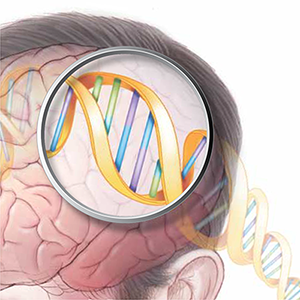
NINDS Brain Resources Page
This webpage provides educational resources related to brain health and function for parents, students, and teachers. These and additional educational materials can be ordered online in bulk for use in classrooms. Additional neuroscience educational videos and activities you can do at home to learn about the brain can be found on the NINDS Outreach and Science Education YouTube playlist .
Grades: High school Produced by: National Institute of Neurological Disorders and Stroke (NINDS)

Nurturing My Mental and Emotional Health
Mental and emotional well-being is critical to overall health. Supporting teens in developing healthy coping skills can set them up for success in dealing with stress and challenging circumstances in the future. This activity helps promote mindfulness and teaches teens how to practice health-enhancing behaviors, which can support better management of stress and reduce the chances of exploring substance use as an alternative. Available in Spanish .
Grades: 6-12 Produced by: National Institute on Drug Abuse
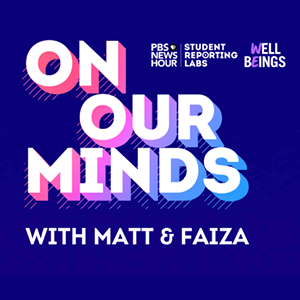
On Our Minds Podcast
This student-led and student-produced podcast discusses the biggest mental health challenges young people face. In each episode, two teen reporters explore stories from high schoolers of PBS NewsHour Student Reporting Labs that highlight the teenage experience.
Grades: High school Produced by: PBS NewsHour Student Reporting Labs ( SEPA funded)
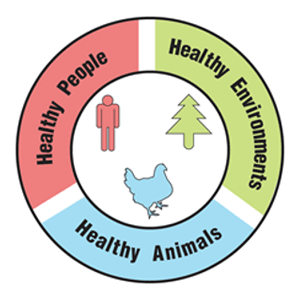
One Health Lesson Plans
These hands-on lessons increase high school students' understanding of One Health , a concept emphasizing connections between the health of humans, animals, and environment, along with the goal of improving all health. Lesson topics include antibiotic-resistant bacteria, the declining honeybee population, and tick-borne diseases—and their effects on humans, animals/plants, and the environment. Materials include a teacher guide with lesson preparation instructions and answer keys, as well as student handouts.
Grades: High school Produced by: Life Sciences Learning Center , University of Rochester Medical Center ( SEPA funded)
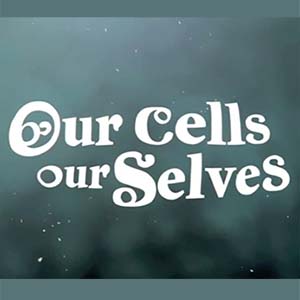
Our Cells, Our Selves
Travel along on a richly animated, dreamy bedtime story and explore the wonders of the immune system through the eyes of a 7-year-old who has just been diagnosed with type 1 juvenile diabetes. See other immune system curriculum from The Partnership in Education.
Grades: 5-8 Produced by: The Partnership in Education , Duquesne University ( SEPA funded)
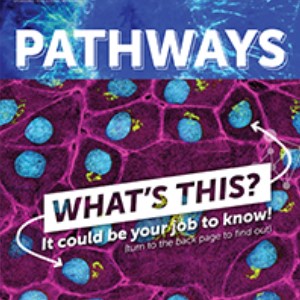
Pathways : Basic Science Careers
The basic science careers unit of Pathways teaches students about basic science, its contribution to people’s health, and the interesting careers that students could pursue. Pathways provides a collection of free educational resources about basic biomedical science and research careers. Be sure to check out the corresponding videos .
Grades: Middle and high school Produced by: National Institute of General Medical Sciences and Scholastic, Inc.
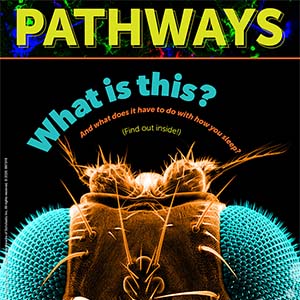
Pathways : Circadian Rhythms
The circadian rhythms unit of Pathways introduces students to circadian rhythms, the “schedules” our bodies follow over the course of a day. These rhythms influence processes like hunger and the sleep-wake cycle. Pathways provides a collection of free educational resources about basic biomedical science and research careers. Be sure to check out the corresponding interactive activity and Kahoot! quiz .
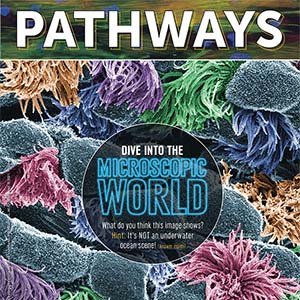
Pathways : Imaging
The imaging unit of Pathways highlights imaging tools that scientists use to peer into the microscopic world of cells and molecules. It helps students uncover how these techniques can aid researchers in learning about the body’s normal and abnormal processes and lead to more effective, targeted treatments for illness. Pathways provides a collection of free educational resources about basic biomedical science and research careers. Be sure to check out the corresponding interactive activity and Kahoot! quiz .
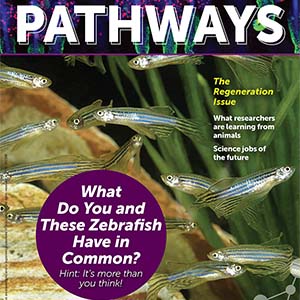
Pathways : Regeneration
The regeneration unit of Pathways introduces students to the amazing world of regeneration research, ways it can improve people’s health, and the inspiring scientists who work in this fascinating field. Pathways provides a collection of free educational resources about basic biomedical science and research careers. Be sure to check out the corresponding Kahoot! quiz .
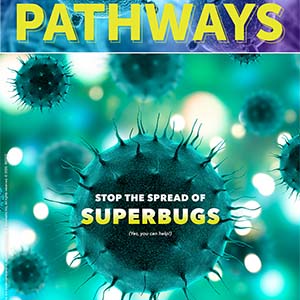
Pathways : Superbugs
The superbugs unit of Pathways explores the basics of infectious diseases and drug resistance. Students uncover why some viruses and bacteria can’t be treated with drugs and how they can help prevent the spread of superbugs. Pathways provides a collection of free educational resources about basic biomedical science and research careers. Be sure to check out the corresponding video and Kahoot! quiz .
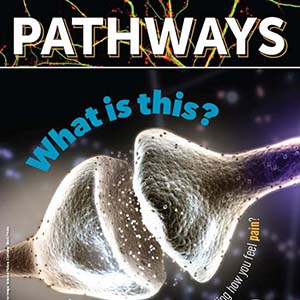
Pathways : The Brain and Anesthesia
The brain and anesthesia unit of Pathways teaches students about how scientists research the mysteries of pain. It also describes the function of anesthesia on the brain and features some anesthesiologists who study pain. Pathways provides a collection of free educational resources about basic biomedical science and research careers. Be sure to check out the corresponding interactive activity and Kahoot! quiz .
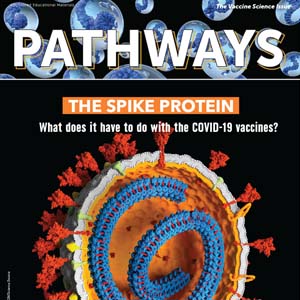
Pathways : Vaccine Science
The vaccine science unit of Pathways teaches students how COVID-19 vaccines work in the body and introduces them to scientists dedicated to vaccine research. In addition, Vice President Kamala Harris and top researchers share their insights. Pathways provides a collection of free educational resources about basic biomedical science and research careers.
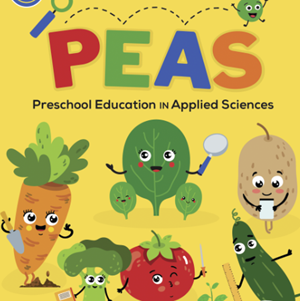
PEAS (Preschool Education in Applied Sciences)
PEAS focuses on providing developmentally appropriate, hands-on, inquiry-based science learning experiences for pre-K students. The teaching guide offers activities featuring healthy foods, with content-specific background information related to the featured life science topics. Teaching and training videos give guidance on taking students through the various activities, as well as discussing certain teaching strategies to engage in the classroom. Teachers can also access more detailed models to further instruct them on effectively designing the activities.
Grades: Preschool Produced by: East Carolina University ( SEPA funded)

Personal Genetics Education Project (pgED): Lesson Plans
pgEd provides interactive lessons for educators to engage students in discussions of ethics and personal genetics. Subjects include biology, health, social studies, physical education, and psychology. All lesson plans contain background reading for teachers and students; classroom activities; discussion points; in some cases, a slide presentation or video clip; and an evaluation. Lessons can stand alone or be taught as a unit.
Grades: High school Produced by: Department of genetics, Harvard Medical School ( SEPA funded)
With this resource , students can create origami models of viruses, DNA, and more. Download and print templates with instructions for cutting and assembling are provided. Many models—such as antibody, DNA (instructions also available in Spanish), GFP, HIV capsid, insulin, and tRNA—include related videos and/or activities.
Grades: High school Produced by: Research Collaboratory for Structural Bioinformatics (RCSB) (NIH funded)
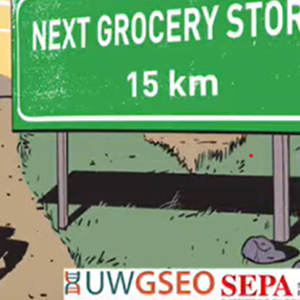
Resources from the University of Washington Genome Sciences Education Outreach
The University of Washington Genome Sciences Education Outreach (UWGSEO) provides various hands-on education resources. Its science curriculum on type 2 diabetes is available for high school students in biology, health, and family and consumer science classes. In the Blood Sugar Balance web game , players keep blood sugar levels within range through their food choices and exercise decisions, while regulating insulin and glucagon levels in the body. UWGSEO has also created curriculum that focuses on how food choices and the environment affect the human gut microbiome , as well as lessons on what students can learn from how the nematode C. elegans maintains balance in a changing environment .
Grades: High school Produced by: University of Washington Genome Sciences Education Outreach ( SEPA funded)
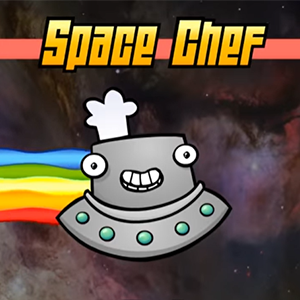
This fast-paced activity from the Lawrence Hall of Science project provides the starting point needed to build healthy meals using simple, readily available, and nutritious ingredients. Students require quick thinking and even quicker fingers as they race against the clock to sort through an array of ingredients and construct healthy recipes.
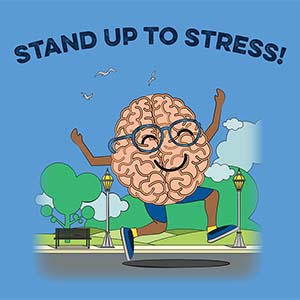
Stress Management Resources
Life can get challenging sometimes, and it’s important for kids to develop strategies for coping with stress or anxiety. Stand Up to Stress! is a coloring and activity book for kids ages 8 to 12 to teach them about stress and anxiety and offers tips for coping in a healthy way. Stress Catcher is a fun “fortune teller” activity that offers some strategies children can practice and use to help manage stress and other difficult emotions. Video tutorials for coping with stress include Getting to Know Your Brain: Dealing with Stress and Guided Visualization: Dealing with Stress .
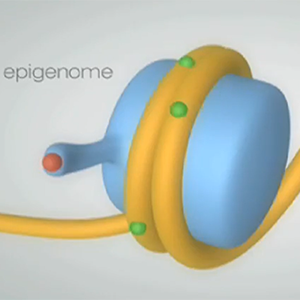
The Epigenome At a Glance
This brief video from Learn.Genetics introduces students to the epigenome and explains how it influences DNA.

The Great Diseases
The Great Diseases engages students with the science behind their real-world experiences. The program also aims to increase students' analytical and problem-solving skills, as well as improve their health literacy. Modules discuss subjects such as cancer, infectious diseases, neurological disorders, and COVID-19. Curriculum materials for modules include a teacher primer and lesson plans, classroom materials for each lesson, and unit assessments. Teachers must request access to download materials.
Grades: High school Produced by: Tufts University in collaboration with Boston Public School teachers ( SEPA funded)
These online resources explore bones, joints, muscles, and skin, including what happens when they get hurt and how to keep them healthy. Intended for students in grades 4 through 6 who are learning about the human body, these educational materials include web content, fun and interactive Kahoot! quizzes, and suggestions for hands-on activities. Teachers may also use this information, which is mapped to national science education standards, to inform lesson plans.
Grades: 4-6 Produced by: National Institute of Arthritis and Musculoskeletal and Skin Diseases
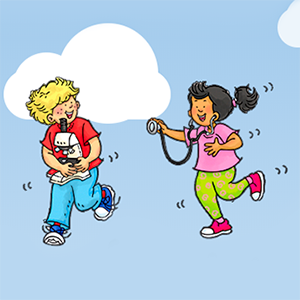
The League of VetaHumanz SuperPower Shop
The League of VetaHumanz SuperPower Shop teaches students about how veterinarians keep people and animals healthy. The Be a Veterinary Medicine SuperHero! series contains 59 short video lessons, many of which have activity sheets that can be downloaded. The This Is How We "Role" page includes a children’s e-book series in English and Spanish. It also offers an online game that explores how doctors and scientists use their superpowers to prevent and treat accidents, diseases, and other health challenges that people and their animals face. (This activity is free but requires users to set up an account.)
Grades: K-4 Produced by: Purdue University College of Veterinary Medicine ( SEPA funded)

Ticks: How Climate Change Affects My Health
This curriculum informs students about the spread of Lyme disease, ticks and their behavior, and the possible connection between weather pattern changes and increased incidences of Lyme disease. The three units include lessons, videos, lab experiments, and other activities.
Grades: 6 Produced by: Dartmouth Rural STEM Educator Partnership ( SEPA funded)
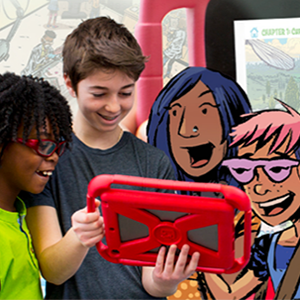
Transmission: Gone Viral Comic
This interactive comic tells the story of the discovery of a novel disease that spreads via mosquitos from birds to birds and infects humans as well. Students explore how scientists—disease detectives—solve this medical mystery with the help of three young “scientists." A PDF version of the comic and educator’s guide are also available.
Grades: 6-8 Produced by: New York Hall of Science ( SEPA funded)
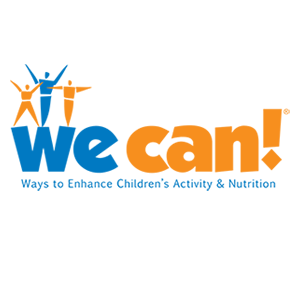
We Can! ( W ays to E nhance C hildren's A ctivity & N utrition) is a national movement designed to give parents, caregivers, and entire communities a way to help children ages 8 to 13 stay at a healthy weight.
Grades: 3-8 Produced by: National Heart, Lung, and Blood Institute
What's exactly goes into a vaccine? What does each ingredient do, and why is it in there? Middle and high school students learn the answers to these questions in this informational video .
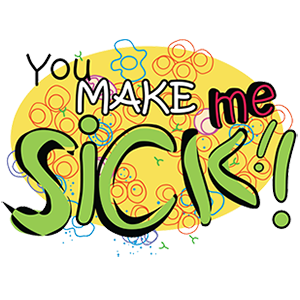
You Make Me Sick Board Game
This downloadable board game is designed for two to four players who use their brains and the white blood cell “money” in their “blood bank” to fight 11 common diseases. As players move around the game board, they encounter viruses and bacteria while learning more about the immune system, vaccines, antibiotics, and steps to prevent the spread of disease such as COVID-19.
- Share full article
Advertisement
Supported by
Global Issues
Teaching the Russian Revolution With The New York Times

By Michael Gonchar
- Nov. 1, 2017
Should the Russian Revolution be remembered as one of history’s great turning points — or should it be “relegated to the dustbin of history” given that the new nation it created, the Soviet Union, no longer exists?
This month is the 100th anniversary of the October Revolution (which now falls in November, given a different calendar). In 1917, Vladimir Lenin and the Bolsheviks orchestrated an extraordinary coup that created the world’s first communist state. The centennial presents an opportunity for students to reflect on its significance. Below, we suggest a range of activities that use materials both from the current New York Times and from the newspaper’s archives.
If You Have One or Two Class Periods ...
Students, working in pairs or small groups, should come up with a list of criteria to decide what historical events should be commemorated by a nation 100 years later.
Here are some questions for students to consider as they come up with their list:
• What makes a historical event important and worthy of remembering decades later? • Should the event be symbolic? Should it represent larger ideals? Explain. • Should the event have noteworthy consequences or effects? • Should the event be unifying, for society today and into the future? Or, can it be divisive? • Should the event have global repercussions? Or, is that not necessary?
Then, have students share their criteria with the class. What standards do they agree on? In what ways do they disagree?
Then ask students to briefly respond to this prompt in writing — based on the criteria they decided on, and on what they already know from studying history:
Should Russia commemorate the Russian Revolution on its 100th anniversary? Why or why not?
But, don’t have students share until after they do the activity below.
We are having trouble retrieving the article content.
Please enable JavaScript in your browser settings.
Thank you for your patience while we verify access. If you are in Reader mode please exit and log into your Times account, or subscribe for all of The Times.
Thank you for your patience while we verify access.
Already a subscriber? Log in .
Want all of The Times? Subscribe .
More From Forbes
6 lessons from high school research for job searchers.
- Share to Facebook
- Share to Twitter
- Share to Linkedin
Stephen Turban is one of the founders of Lumiere Education and a Harvard College graduate.
As standards for college applicants increase in difficulty, many are focusing more on their high school involvements so that they can put forward a solid narrative and eventually earn acceptance at top schools.
For instance, some work on an independent research project. Admissions officers seek out applications with a compelling narrative that demonstrates a trajectory of growth and specialization within an applicant's intended field of study. In our work at Lumiere Education, we advise students to draw connections between their research, long-standing academic passions and their plans to deepen this course of study in college.
The job search process, specifically, mirrors the high school research process more closely than one may think.
In this article, I’ll review six important steps of high school research and the college application process—and how those steps translate to the job search process.
Netflix’s Best New Movie Arrives With A Perfect 100% Critic Score
Trump reposts ai-generated images claiming taylor swift fans support him, ‘golden opportunity’—bitcoin and crypto are suddenly braced for a ‘critical’ fed price earthquake, 1. choosing your discipline.
Much like when choosing a research discipline, there are two main criteria to consider when choosing jobs to apply to: experience and goal alignment. It’s easier to design and execute a meaningful research project in a field of particular comfort and expertise.
As a job seeker, it is essential to scout for opportunities that match your skill set and interests, as well as long-term goals for professional growth. Simply applying to any and all open positions isn’t a wise move. Instead, carefully choosing the industry or niche that you wish to contribute to is a solid way of reaching your long-term goals faster and building viable, relevant skills.
2. Finding A Mentor
Securing a professor, researcher or industry professional to support high school level research can be a frustrating experience.
To maximize the chances of success—whether you're a high school student or advancing in your career—you should be targeted in your approach to finding a mentor. It’s best to only reach out to individuals whose specialization aligns with your goals.
One way to do this is by actively reaching out to individuals on social networking sites and having meaningful conversations with them. While sending over a generic text message to a large pool of potential mentors may seem like the quickest way to get this step out of the way, make sure to do your research and make a genuine effort to reach out to a select number of potential mentors.
Another way to do this is by attending networking events, professional office hours or coffee chats with your colleagues in the workplace. In-person networking can serve as a powerful way to introduce yourself in a real-world setting and leave a lasting impression on your potential mentor.
3. Developing A Research Question And Research Design
Much like a high school student's project, your career interests and goals should play into your mentor’s strengths to ensure comprehensive support and meaningful insights that help you advance your career. At Lumiere, we advise students to look back at existing research when developing a research question; any meaningful academic contributions to a field will address an unanswered question or gap in the literature.
Ignoring past research and data can be a misstep in the workplace, especially if you’re a newcomer in a particular industry, organization or professional group. Take some time to review insights, changes and meaningful professional contributions by individuals in the field—not only does this inform your future decisions better, but it can also give you an edge while preparing for job interviews (or high-stakes projects at work).
4. Synthesizing Results And Identifying Impacts
Once a student completes a research project, they need to carefully evaluate the implications of their results and avoid exaggerating the scope of their conclusions. If they find promising directions for further research, we advise them to consider continuing their work—colleges love to see dedication to an academic passion.
When a student ultimately discusses their research on college applications, the goal is to demonstrate its value. It’s not enough to simply state that they’ve done a research project; they need to show that the work was meaningful. Similarly, job applicants should frame their previous projects and accomplishments in terms of the significance of their impacts.
If you’re framing previous job responsibilities for your resume, these principles can help you craft an impact-driven, relevant and crisp description of your work. Additionally, if you’re working toward building an entrepreneurial venture, iterative thinking is a strategy you should incorporate into your venture-planning process.
5. Publishing And Presenting Your Work
Though not a mandatory component of completing high school research—or any significant professional project—taking advantage of opportunities to publish or present your work can be highly beneficial. Without external acknowledgment, it can be difficult to verify the quality of your work or prove that your described impacts are legitimate.
While publication and awards from national or international organizations can be difficult to obtain, seeking local or regional coverage can lend credibility to your professional accomplishments.
If you’re looking for another way to demonstrate credibility and acknowledge your work, consider joining professional associations, participating in regional/national conferences and engaging in industry-specific forums, podcasts, interviews and feature articles on social networking sites such as LinkedIn.
6. Adding Supplemental Application Materials
While significant research projects are often strong topics for supplementary essays—typically those asking about why a student wants to study their intended major—there are other ways to use this experience or any significant career achievement.
If you form a strong relationship, you can ask your mentor to provide an additional letter of recommendation when you're applying for jobs. You may also be able to provide supplements to your application, such as documentation of your specific involvements or contributions to previous projects at work. This is extra helpful if you don’t have credentials to emphasize the strength of your past accomplishments.
Wrapping Up
Strategically incorporating key research principles into your job search can help you build a robust personal and professional portfolio and offer a competitive edge to your future job searches.
And before you miss it: Make sure to view your job search as a holistic process with multiple interacting components, not a generic, linear process.
Forbes Business Council is the foremost growth and networking organization for business owners and leaders. Do I qualify?

- Editorial Standards
- Reprints & Permissions
News from Brown
Rhode island high schoolers embrace stem lessons at icerm’s girls get math program.
The five-day camp at Brown’s Institute for Computational and Experimental Research in Mathematics engages students in hands-on math activities and advanced computational labs, guided by experts.
Girls Get Math is designed to cultivate interest, inspire confidence and instill a sense of belonging for young students exploring math and science fields. Photo by Halle Bryant
PROVIDENCE, R.I. [Brown University] — No cabins, canoes or campfires, for a week at least — this summer, a group of Rhode Island high schoolers swapped s'mores and singalongs for STEM topics at GirlsGetMath@ICERM , a five-day math camp at Brown University.
Hosted by Brown’s Institute for Computational and Experimental Research in Mathematics , the annual camp is designed to cultivate interest, inspire confidence and instill a sense of belonging for young students exploring math and science fields. It introduces concepts not often included in traditional high school curricula through activities, games, lectures and computer labs.
This year's program welcomed 23 rising 10th and 11th graders from across Rhode Island, who engaged in a range of interactive activities, hands-on labs and thought-provoking discussions where students could explore the beauty and utility of mathematics. Each morning, for instance, the Girls Get Math students tackled a question of the day, with topics ranging from whimsical musings like “What color is math?” to technical queries such as “What’s your favorite trig function?” The questions served as icebreakers, sparking discussions that made mathematics approachable and engaging, students said.
"The best part was meeting girls my age who love the same things I do and love math,” said Briella Weimer, a junior at Barrington High School.
One highlight was a visit to the Harris Lab at Brown's School of Engineering, where students were introduced to fluid dynamics, impact dynamics, materials science and structural optimization. Under the guidance of Brown graduate students, participants explored the principles of fluid viscosity by injecting bubbles into different materials, a hands-on experiment that tied physics concepts like friction and gravity to real-world applications.
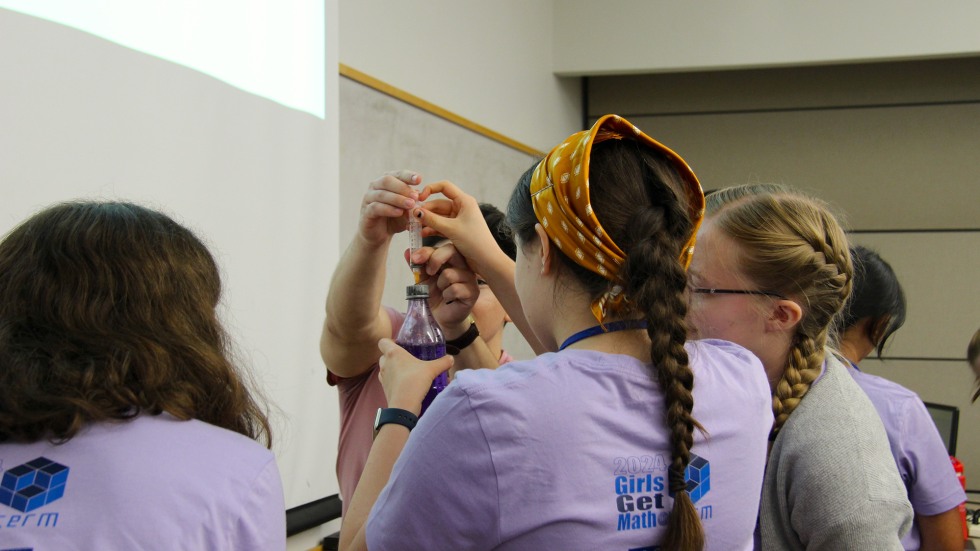
Visiting a lab in Brown's School of Engineering, students explored the principles of fluid viscosity by injecting bubbles into different materials. Photo by Halle Bryant
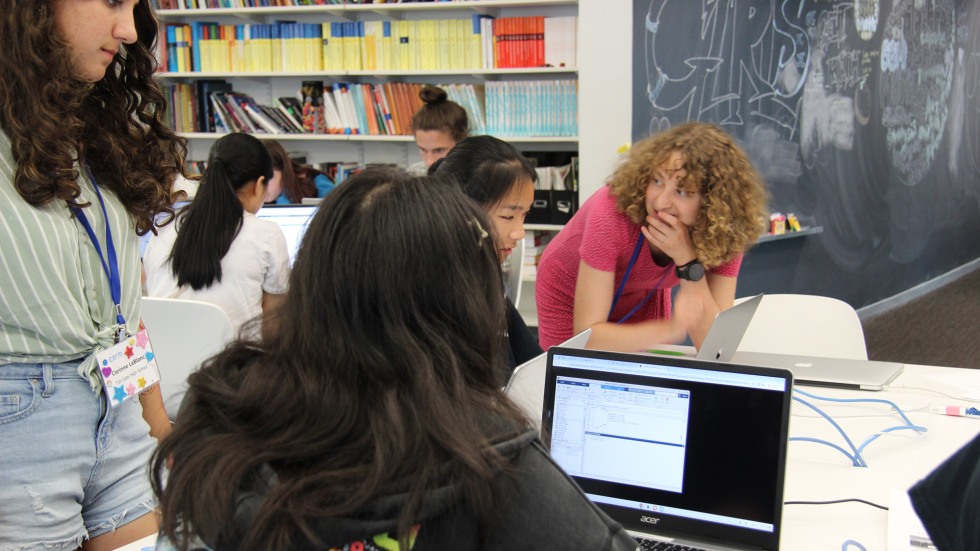
This year's students got an introduction to MATLAB, a mathematical programming language widely used in academic research. Photo by Halle Bryant
Back at ICERM — one of just seven federally funded mathematics institutes across the nation — the students dove into computation-based labs, including an introduction to MATLAB, a mathematical programming language widely used in research. They also explored topics such as epidemic modeling, image processing, and the creation of digital filters and effects, gaining valuable skills that are typically introduced in college-level courses.
"It was exciting to see the questions the students were asking throughout the week and how deep and interesting those questions were,” said Amalia Culiuc, a lecturer in applied mathematics, who leads the program with Anarina Murillo, an assistant professor of biostatistics at Brown. “Every year we are really impressed by how quickly students go from playing with math to really being serious about it and doing really serious math with just a little bit of background.”
This year’s program included funding from grants and gifts from the American Mathematical Society, Math for America, MathWorks and Rhode Island Energy.
Related news:
Brain-computer interface allows man with als to ‘speak’ again, new study unveils 16,000 years of climate history in the tropical andes, isabel tribe: examining ancient sediment to predict earth’s future.
- Skip to primary navigation
- Skip to main content
- 110 Baker St. Moscow, ID 83843
- 208.882.1226
A Classical & Christ-Centered Education

Secondary Curriculum
The secondary school is divided into two stages… grades 7-8 (the Logic Stage) and grades 9-12 (the Rhetoric Stage).
In grades 7-8, the students take the mastered information from the Grammar Stage and bring it into ordered relationships. Students begin to apply logic, assessing the validity of arguments and learning to view information critically with more discerning minds.
In grades 9-12, students learn to articulate eloquently and persuasively, and to use the tools of knowledge and understanding acquired in the earlier stages. This is the point at which the strength of a classical education is made fully visible.
Click here for an overview of the Logos School secondary curriculum.
Click for our 2-page School Profile
The Knight’s Creed and Commitment
Class Schedules
Spring 2024 Finals Schedule 7th-12th grades only.
24-25 Fall Class Schedule 7th-12th grades only.
Senior Course Options:
By the time students reach their senior year in high school, they have usually developed interests in specific areas. Therefore, they will be given the opportunity to pursue those areas through the following senior course options. These options are designed to allow students the opportunity to learn one or two subjects well. As Dorothy Sayers says, “Whatever is mere apparatus may now be allowed to fall into the background, while the trained mind is gradually prepared for specialization in the “subjects” which, when the Trivium is completed, it should be perfectly well equipped to tackle on its own.” (from The Lost Tools of Learning) These options should aid the transition from the completion of the Trivium to the more specialized study that is a part of a college or university education.
Option 1: College or Online Class
This is a 1 credit option in which a student enrolls in a college or online class. Approved subjects include math, science, theology, humanities, and fine arts. The class must be taken for credit and the student must submit a transcript to receive credit toward Logos graduation. Areas of study that do not qualify are recreational classes and/or self-guided courses with little accountability.
Option 2: Internship
The internship is a 1/2 credit option intended to provide seniors with the opportunity to study a career. Students must work a minimum of 2 hours per week on their internship. A variety of internships have been approved in the past (interning with an elementary or secondary Logos teacher, riding along with police officers, observing at a local vet clinic, etc.). Students are not allowed to be paid for the time they spend as an intern. Parents are responsible to provide oversight and any necessary supervision or screening (background checks, etc.) for this experience.
Procedures for Both Options
1. At least two weeks before the beginning of each semester, students must submit a written proposal to the principal, via email. Late proposals will not be considered. Proposals must describe the following:
a. the main purpose of and goals for the program
b. the work that the student will be doing weekly to achieve these goals (include the website link for online classes)
c. the number of hours per week that the student will be participating in the program
2. Students have two days to resubmit proposals that have been denied.
Guidelines for Both Options
1. Credit will not be granted for work completed before a proposal is approved.
2. Students will receive a grade of E, S, or U at the end of each quarter and semester.
3. Failure to make satisfactory progress in the first semester will disqualify the student from participating in these programs during the second semester.
4. Students may only request approval for one semester at a time.
Dialectic Speech Meet
The following is information for the Dialectic Speech Meet for the 7 th -9 th grade students. Most of the work and grading is done during English class. For the final meet onwards, the students will perform their pieces with students from other classes in the same category. That afternoon during 7 th period there will be an assembly to hear the top performances from each category.
- Mid-December – information goes home
- Mid-January – Selections are due
- Toward the end of January – Piece is presented for a grade
- Beginning of February – Speech Meet
Dialectic Speech Meet Guidelines Dialectic Speech Meet Judge’s Form Dialectic Speech Meet Selection Ideas
Rhetoric Speech Meet
The following is information for the upcoming Rhetoric Speech Meet for the 10 th -12 th grade students. Please note a few differences between the Dialectic Speech Meet of the 7 th -9 th graders and the Rhetoric Speech Meet:
- Poetry must be through the Poetry Out Loud program.
- Readers Theater and the Original Oratory categories are allowed.
- Children’s books and plays are allowed as sources for material.
- There is no memory check. Pieces will be presented once in class for a grade, and once at the meet for a test grade.
- Mid-September – Information goes home.
- Beginning of October – Selections are due.
- Mid-October – The piece is presented for a memory grade.
- Beginning of November– Speech Meet
Guidelines Judging Form Selection Ideas
Skip to Main Landmark (Press Enter)
Spartan Alert
Camp gives high schoolers a step-up in sustainable research.
Posted on August 14, 2024

A little competition fires up high school students, especially when it lets them build something that helps the environment.
With help from 3D printers and graduate students at UNC Greensboro and North Carolina Agricultural and Technical State University, one such competition capped off a week of problem-based learning, centered around an element found in everything from DNA to matches to fertilizer.
The 17 students took part in ExPlorers , a summer camp run by the Joint School of Nanoscience and Nanoengineering (JSNN) . ExPlorers takes scientific and engineering concepts that demand long hours of lab work and study for PhD students and faculty and makes them relatable to high school students, helping them see how science connects everything they interact with day-to-day.
“Every time I come to the camp, I get to learn a little more about different aspects of STEM,” says Mackenzie “Mac” Alexander, a Grimsley High School student back for her third year with ExPlorers. “It has biochemical, mechanical, industrial, and civil engineering.”
The camp challenges the participants to get creative with their newfound knowledge, then bring it back home. “The students are now able to say A, B, or C about phosphorus sustainability to someone on the street,” says Raphael Ayivi, a UNCG student working on his PhD in nanoscience “That’s what we are trying to do: help them get that message out and develop their interest in science.”
Everyday Experience Brought Down to Scale
ExPlorers is part of STEPS , or “ S cience and Te chnologies for P hosphorus S ustainability.” Funded by the National Science Foundation, this collaboration between ten universities and research institutions aims to decrease the world’s dependability on mined phosphorus.
North Carolina, with Florida, accounts for 75 percent of the United States’ phosphorus output. The world currently has stored enough phosphorus to last 50 years. While phosphorus is critical in many industries, particularly food production, its byproducts often end up in waterways due to runoff and contribute to dangerous algae blooms that devastate ecosystems.
Most mined phosphorus is used in agriculture, so the students also took a field trip to NC A&T’s farm. Poultry Research Specialist Mark Paylor led the tour. He brought first-hand experience of the challenges farmers deal with to raise healthy livestock and grow crops that eventually end up on the students’ dinner tables.
“Taking them to the farm to see where a majority of phosphorus is used and how it is introduced into a lot of those systems is impactful,” says Dr. Zelena Johnson ’24, a camp organizer who earned her PhD in nanoscience from UNCG. “They may wonder, ‘Why should we care? I don’t use phosphorus.’ But they do. The food they eat is grown with phosphorus. The protein they get is from animals that have consumed plants grown by phosphorus.”
“I get upset about how much waste is produced every day,” says Eliza “EC” Resuello from the Middle College at Forsyth Tech. “Hopefully, we can help study how to limit how much goes into the environment, and then see how we can slowly start to recover over the years.”
JSNN – a School that knows all about working with materials too small to see with the naked eye – put together interactive lab stations so that students could relate nanoscience and nanoengineering to their various interests and hobbies back home. Poshika Prabu, a rising tenth grader from Triangle Math and Science Academy, says one of her favorite activities was making poppings that go into boba tea. This taught her an engineering method called polymer cross-linking.
“My parents are always saying, ‘Why do you like boba?’ It’s because you can pop it in your mouth,” says Prabu. “I got to see how the membrane was enclosed and how the liquid was put inside.”
The lab activities were a plus for Elijah Dorsey from Weaver Academy. “I was expecting boring lectures for most of the week and then something fun at the end at the farm. But it’s all been interesting. We can talk freely with other classmates, working together, collaborating, and learning.”
“Sometimes in science, we have a hard time communicating these issues to lay people,” says Johnson. “The easiest people to communicate with are these students. They’re still learning about life and what’s out there. If we catch them early, they’re able to communicate with their peers and their families.”
Science Made Tangible with Sensors
All the experiences that week culminated in an interactive project with real-world implications. The students were assigned to small groups led by a graduate student to develop a sensor for improving phosphorus sustainability. They had to treat it as a potential resource for the future, considering how it impacts people, the environment, and how much it might cost.
“If you’re going into a business in anything, even scientific research, it’s all about the dollar bill,” says Johnson. “We have to pay for the research, the researchers, and the material. They also have to ask, is it sustainable? Will their product last generations? If their idea would negatively impact the environment, then it’s not an idea they want to follow.”
Resuello put her artistic skills to use in her group, designing a freshwater-friendly device that could be filled with sensors and filters. “I wasn’t expecting that I would be doing 3D modeling here,” says Resuello. “I have never done that before. And I’m happy that my model turned out not too bad. That’s one of the skills that I acquired.”
Each group created a 3D-printed prototype, and on the last day, they presented it in a “Shark Tank”-style pitch. Their families were invited to attend their presentations, further giving the students a sense of ownership for what they had learned.

Grads Build a Pathway for Knowledge
The camp’s message was made more effective by the leadership of graduate students from UNCG and NC A&T. This was an intentional choice by JSNN.
Ayivi has worked with ExPlorers since 2022. The camp meshes with his own research developing a molecularly impressive sensor for detecting phosphorus pesticides.
“It brings joy to me because I’m passionate about knowledge transfer,” says Ayivi. “Some young people don’t have people to make science fascinating to them. But if they can encounter it and interact with people, that makes science very friendly, very fun, and very informative.”
The graduate students also demonstrated to the camp participants how scientific discoveries are passed along: from student to student, from student to parents, then from parents to the community.
“Working with the grad students, there’s a connection there,” says Dorsey. “They’re younger. They’re in the field, so they know what’s currently happening. They know how to connect with professors.”
The students left the camp with much more than a 3D-printed prototype. They took home a new appreciation for how they enact change, as well as renewed confidence in exploring future careers in science.
Prabu made an hour-long drive from Apex to attend ExPlorers each day, and she says it was worth it. “I learned at this camp that phosphorus is really important, and I want to convey that to my parents and loved ones,” she says. “I can tell my parents to look at what they’re eating. That food has phosphorus in it. Your DNA has a phosphate backbone.”
“If you’re undecided about what you want to do for college, this camp is a good place to come,” says Alexander. “It doesn’t just focus on one aspect of STEM. It’s not just science. It’s not just chemistry. It’s not just technology. It focuses on everything.”
Story by Janet Imrick, University Communications Photography by Sean Norona, University Communications Video by Sean Norona and David Lee Row, University Communications Video editing by David Lee Row, University Communications

Scale down your research, scale up your Dreams.
Trending stories.

August 19, 2024
UNCG Softball Players Look Back on a Week in Italy
A trio of UNCG softball student-athletes traveled to Italy with Beyond Sports Tours. They each contributed to a 9-day blog with high...

August 16, 2024
UNCG Presents School of Theatre’s Fall 2024 Productions
Tickets and season passes are now on sale for a packed season of entertainment, including a spin on “Mean Girls,” an adaptation ...
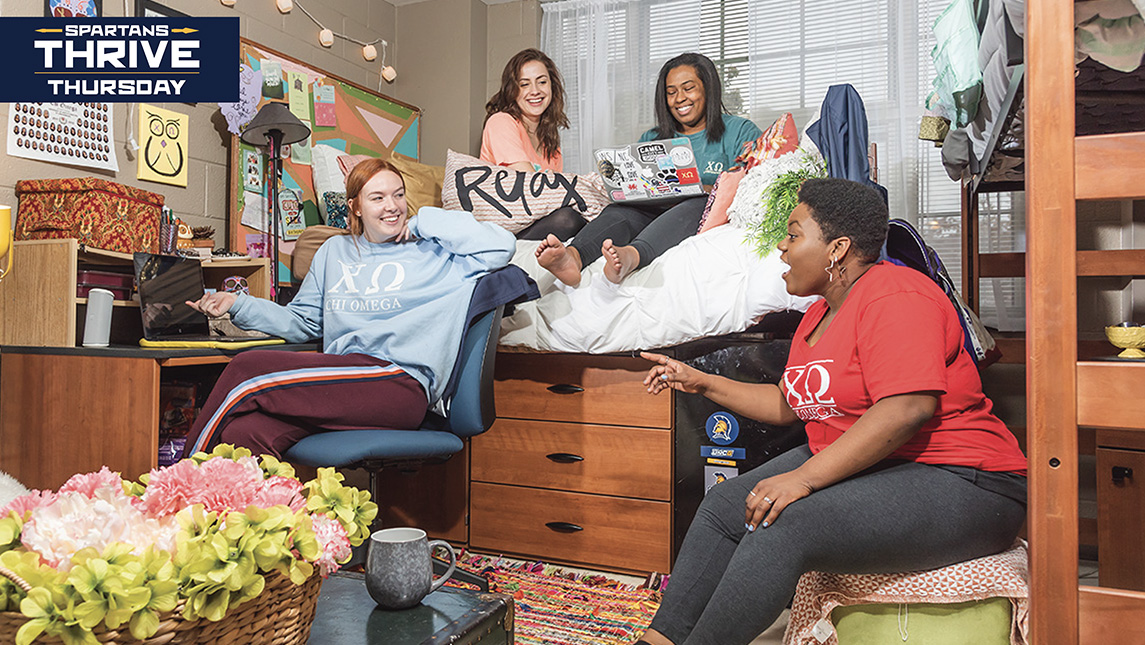
August 15, 2024
UNCG’s Resident Advisors Cheer on New Spartans
No one knows what makes UNCG feel like home better than the residential staff. This year’s RAs are welcoming the newest class of S...
- Print Friendly

Or search by topic
Number and algebra.
- Place value and the number system
- Fractions, decimals, percentages, ratio and proportion
- Calculations and numerical methods
- Algebraic expressions, equations and formulae
- Coordinates, functions and graphs
- Patterns, sequences and structure
- Properties of numbers
Geometry and measure
- 3D geometry, shape and space
- Transformations and constructions
- Vectors and matrices
- Measuring and calculating with units
- Pythagoras and trigonometry
- Angles, polygons, and geometrical proof
Probability and statistics
- Handling, processing and representing data
- Probability (spec_group)
Working mathematically
- Thinking mathematically
- Mathematical mindsets
Advanced mathematics
- Decision mathematics and combinatorics
- Advanced probability and statistics
For younger learners
- Early years foundation stage
Curriculum-linked problems - Secondary Teachers
Successful mathematicians understand curriculum concepts, are fluent in mathematical procedures, can solve problems, explain and justify their thinking, and have a positive attitude towards learning mathematics.
For problems arranged by curriculum topic and age group, see our Secondary Curriculum Mapping Document . The tasks, with short descriptions, also appear in the collections below, organised using the same curriculum headings. For problems arranged by mathematical thinking skills, see our Mathematical Thinking page. For problems arranged by mathematical mindsets, see our Mathematical Mindsets page.
Geometry and Measure
Handling Data
No results found
Foreign kids needing help with Japanese at school doubles
Japan's education ministry research shows foreign students that have difficulty in everyday conversations or understanding lessons in Japanese have doubled over about 10 years.
The ministry released 2023 results Thursday showing 69,123 public school students fit that category, compared with about 33,000 in 2012. The survey is done every two years.
The research focuses on public elementary, junior and senior high schools.
The number is up 19 percent, or more than 10,000, from 2021.
The latest survey also shows that public schools with students that need Japanese language help rose to 11,123.
The ministry says that local governments have pointed out that foreign children requiring help with their Japanese are scattered across multiple schools. They say this makes it difficult to secure enough teachers to help them all.
The ministry says local governments have also reported a recent increase in the number of foreign children who speak languages that are very rare in Japan.
The ministry says the steep rise in the number of children requiring language help is likely due to a recent increase in the number of children brought to Japan by their parents. After social activity restrictions related to the coronavirus pandemic were eased in Japan, their parents came to the country to find more work opportunities.
The ministry says it plans to step up efforts to help those children by deploying more teachers who can speak their native languages. It will also plan to encourage schools to use digital translation devices.
| by |
Glancing Back... to our youth...
Click on the links below ( or ) to see more pictures and information.
The commencement program.
IMAGES
COMMENTS
Learn how to teach research skills to primary students, middle school students, or high school students. 50 activities that could be done in just a few minutes a day. Lots of Google search tips and research tips for kids and teachers. ... 10 Replies to "50 Mini-Lessons For Teaching Students Research Skills" Sarah says: July 29, 2019 at 4:49 ...
An easy way to answer the 'why' questions your high schoolers will ask, the video is an excellent resource. 2. Teaching your students to fact check. Tip number two for teaching research skills to high school students is to teach your students concrete strategies for how to check facts.
Learn about the online research guide for middle and high school students that will help them locate and use digitized resources, find research inspiration, definitions for primary and secondary sources, strategies for searching primary and secondary sources on the Library's website and beyond, and suggestions on citing resources appropriately.
The student will learn how to do effective internet research. OBJECTIVE: This two-class lesson plan leads students through a discussion of the difficulties of internet research; provides guidance on how to effectively pre-research; demonstrates online resources available for research through the Brooklyn Collection and Brooklyn Public Library ...
Olivia Franklin. Engage students with interesting research topics, teach them skills to become adept independent researchers, and help them craft their end-of-unit research papers. CommonLit 360 is a comprehensive ELA curriculum for grades 6-12. Our standards-aligned units are highly engaging and develop core reading and writing skills.
Overall, a research unit takes me 2-3 weeks with high school students. Every teacher has different methodologies, but if I allow writing research papers for about a month, writers become bored. Fifteen working days for research, revision, and publishing is my average time frame. Going longer, and different aspects fall apart, and we lose momentum.
Gale Litfinder, Gale E-books, or Gale Middle School are just a few of the many resources within Gale for middle school students. Teaching Research Skills To High Schoolers. The goal is that research becomes intuitive as students enter high school. With so much exposure and practice over the years, the hope is that they will feel comfortable ...
Here are some steps for teaching high school students how to formulate a research question: Start by introducing the concept of a research question. Explain that a research question is a specific question that a student aims to answer through research. It should be focused, clear, and specific, and should reflect the student's interests and ...
to senior high school. Find more details, links, and examples in this post. 50 Mini-Lessons For Teaching Students Research Skills www.kathleenamorris.com C l a r i f y Choose a topic (e.g. koalas or Mt Everest) and write as many related questions as you can think of. 1 What information are you looking for? Consider
Grade Levels: 3-5, 6-8. *Click to open and customize your own copy of the Research Lesson Plan . This lesson accompanies the BrainPOP topic Research, and supports the standard of gathering relevant information from multiple sources. Students demonstrate understanding through a variety of projects. Step 1: ACTIVATE PRIOR KNOWLEDGE.
Recently, two ELA co-teachers approached me to collaborate on a ninth-grade research activity focusing on Of Mice and Men. For ninth graders, the beginning of high school can be daunting. Teachers expect more than they did in middle school, the workload is larger, and students are adjusting to a new and more challenging environment. Most ninth ...
There are three things every teacher should do before taking their students to the computer lab to research information for their research papers: teach the difference between reliable and unreliable sources, check to make sure every student has a self-generated research question, and help prepare students with key phrases and words to search. Whenever I begin teaching the research paper, I ...
2. Surprising Facts - A fun way for students to dive into research is to give them a topic and simply task them with finding facts that are surprising. This activity works great with partners. Topics could tie in with a current class novel or story (such as "elephant" from The Giver) or even an author.
Use this guide to find information and activities to prepare for the transition from high school to college level research. Get Started; For Students: Research Toolkit This link opens in a new ... Find activities that can be adapted for your high school lesson plans. ACRL Information Literacy Sandbox. Research activities created by academic ...
5 simple steps to teaching Google search tips and internet research skills for students. This updated 2020 post and free eBook shows how to research effectively online for kids in primary school, middle school and high school. These tips are summarized in a free online research skills poster for your classroom.
In summer and after-school programs, we enable students to explore novel research questions, guiding them through literature searches to formulate testable hypotheses, experimental design, data analysis, and presentation of results. A Lab with a Twist. Our lab is run like a graduate research lab with a twist.
Research can be a life-changing experience for a high schooler. It gives them a chance to gain hands-on instruction beyond the classroom and be exposed to the dynamics of a lab environment. In ...
Biomedical Beat Educator's Corner. With this free resource, educators can build on existing NIH STEM content through the integration of supplemental material in Biomedical Beat blog posts. The Educator's Corner is intended to give teachers additional tools to use in lesson plans. Grades: Middle and high school.
Share My Lesson provides free Research Skills lesson plans and teacher resources. Find creative ways to get students excited about learning. ... 3-Box Template for Students in Middle and High School. Worksheet | PreK, Grades K-12. Read More. tntl. On a Collision Course: Space Junk and Trash Lasers . April 08, 2024. Read More.
James Hill for The New York Times. Below, we present a variety of activities for studying the Russian Revolution in more depth. 1. Make a social media account documenting the Russian Revolution ...
The job search process mirrors the high school research process more closely than one may think. Subscribe To Newsletters. ... Lessons From Stock Trading. Aug 16, 2024, 10:00am EDT.
PROVIDENCE, R.I. [Brown University] — No cabins, canoes or campfires, for a week at least — this summer, a group of Rhode Island high schoolers swapped s'mores and singalongs for STEM topics at GirlsGetMath@ICERM, a five-day math camp at Brown University. Hosted by Brown's Institute for Computational and Experimental Research in Mathematics, the annual camp is designed to cultivate ...
The secondary school is divided into two stages… grades 7-8 (the Logic Stage) and grades 9-12 (the Rhetoric Stage). In grades 7-8, the students take the mastered information from the Grammar Stage and bring it into ordered relationships. Students begin to apply logic, assessing the validity of arguments and learning to view information ...
A little competition fires up high school students, especially when it lets them build something that helps the environment. With help from 3D printers and graduate students at UNC Greensboro and North Carolina Agricultural and Technical State University, one such competition capped off a week of problem-based learning, centered around an element found in everything from DNA to matches to ...
These lessons, adapted with permission from the Florida Center for Reading Research and Meadows Center for Preventing Educational Risk, address key reading and prereading skills and incorporate research-based instructional principles that can help intensify and individualize reading instruction. ... Students benefit from opportunities to ...
Successful mathematicians understand curriculum concepts, are fluent in mathematical procedures, can solve problems, explain and justify their thinking, and have a positive attitude towards learning mathematics.. For problems arranged by curriculum topic and age group, see our Secondary Curriculum Mapping Document. The tasks, with short descriptions, also appear in the collections below ...
From her time at Osborne High School, Emily Manqueros knew she wanted to do research in physics, not just study it. The rising junior from Smyrna said classes in astronomy and physics taught her how physical forces effect everything around her, and she wanted to immerse herself in them. So, she came to Kennesaw State University for the opportunity to conduct research right away as a freshman.
Japan's education ministry research shows foreign students that have difficulty in everyday conversations or understanding lessons in Japanese have ... showing 69,123 public school students fit ...
HSE was the first university in Russia to accept USE results as a main criteria for students enrolling. Thus, the university was able to set a high threshold and admit the most talented students from all over Russia. [43] [44] In 2004, the first Academic Foundation was established to support university research and promote academic activities.
Moscow's Jr Miss. Miss Moscow 1965. Miss Debutante 1965. Homecoming Queen - Harriot. Homecoming Princess - Sandy. Senior Ball Royalty. Staffan comes to Moscow.